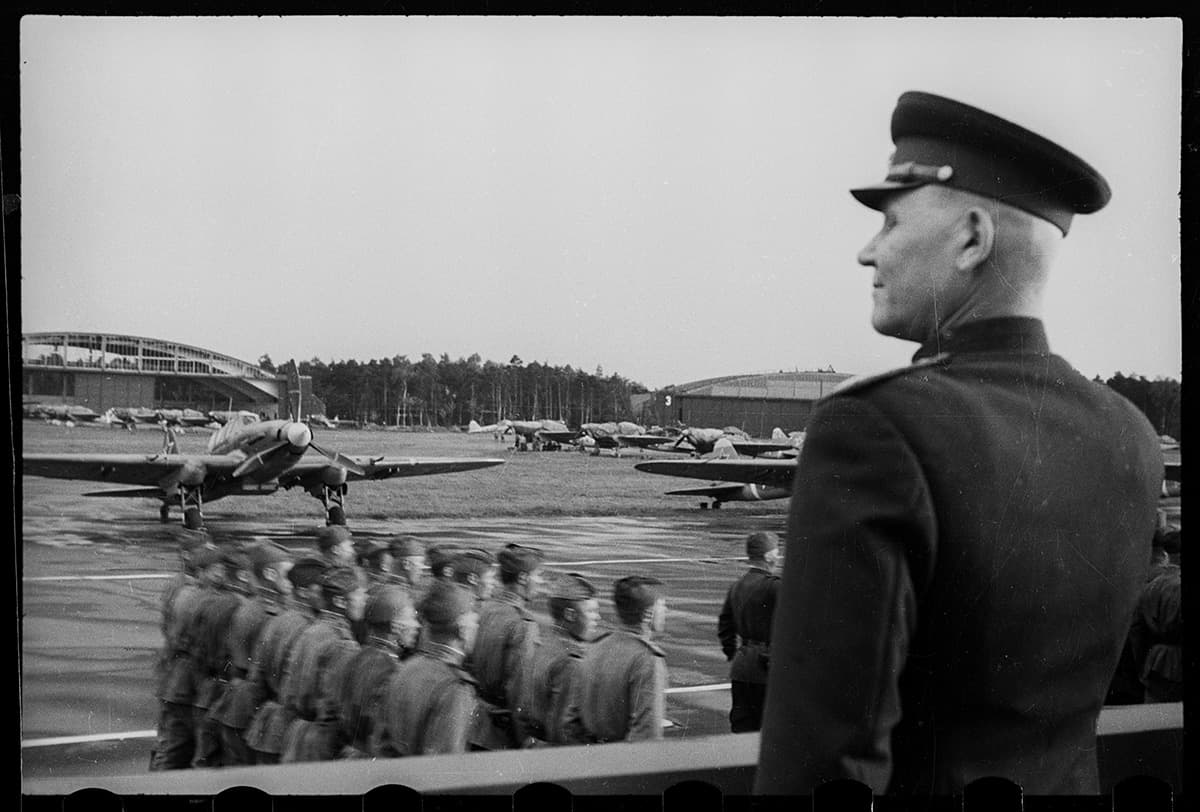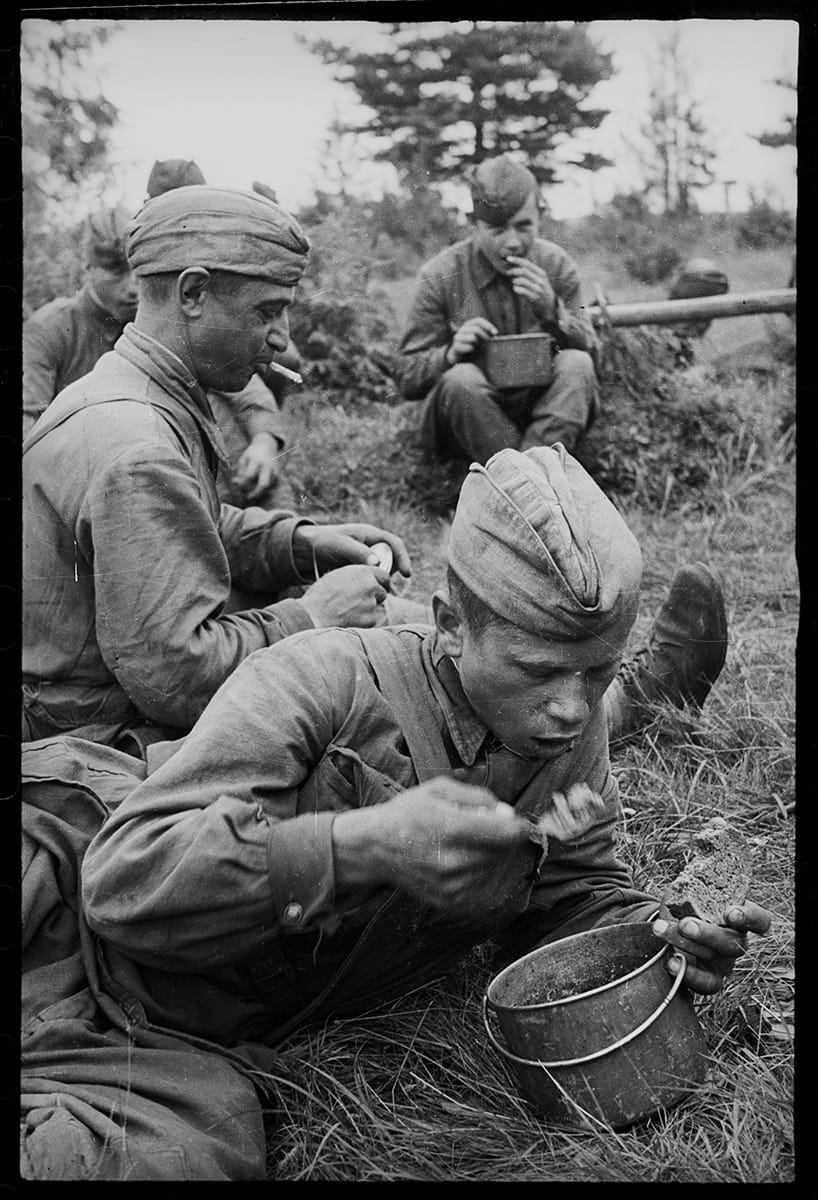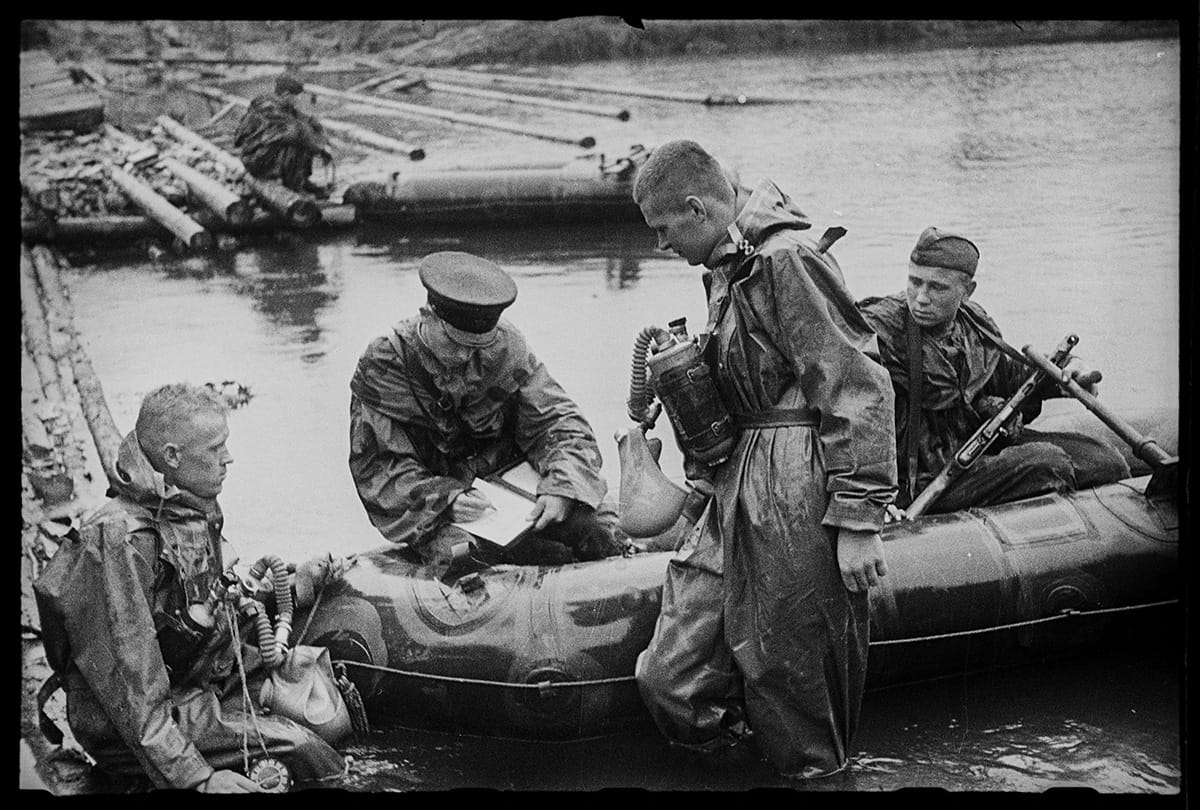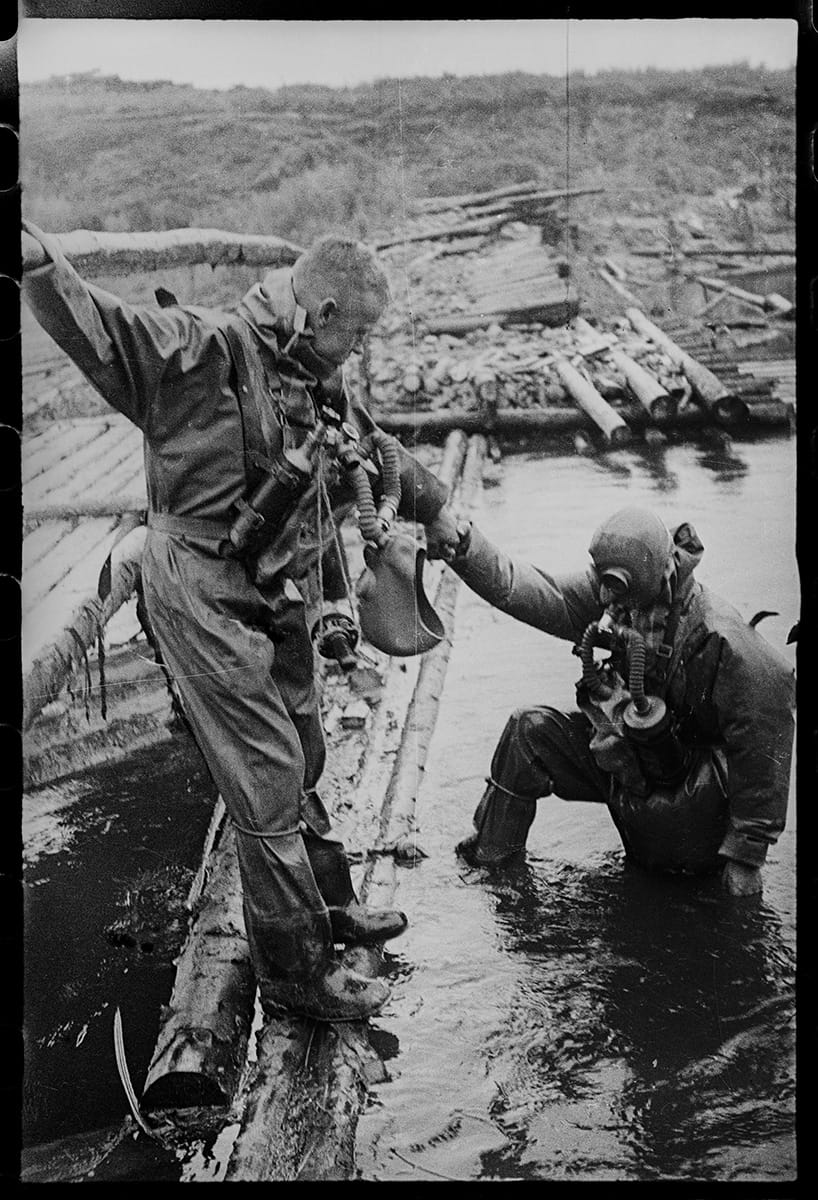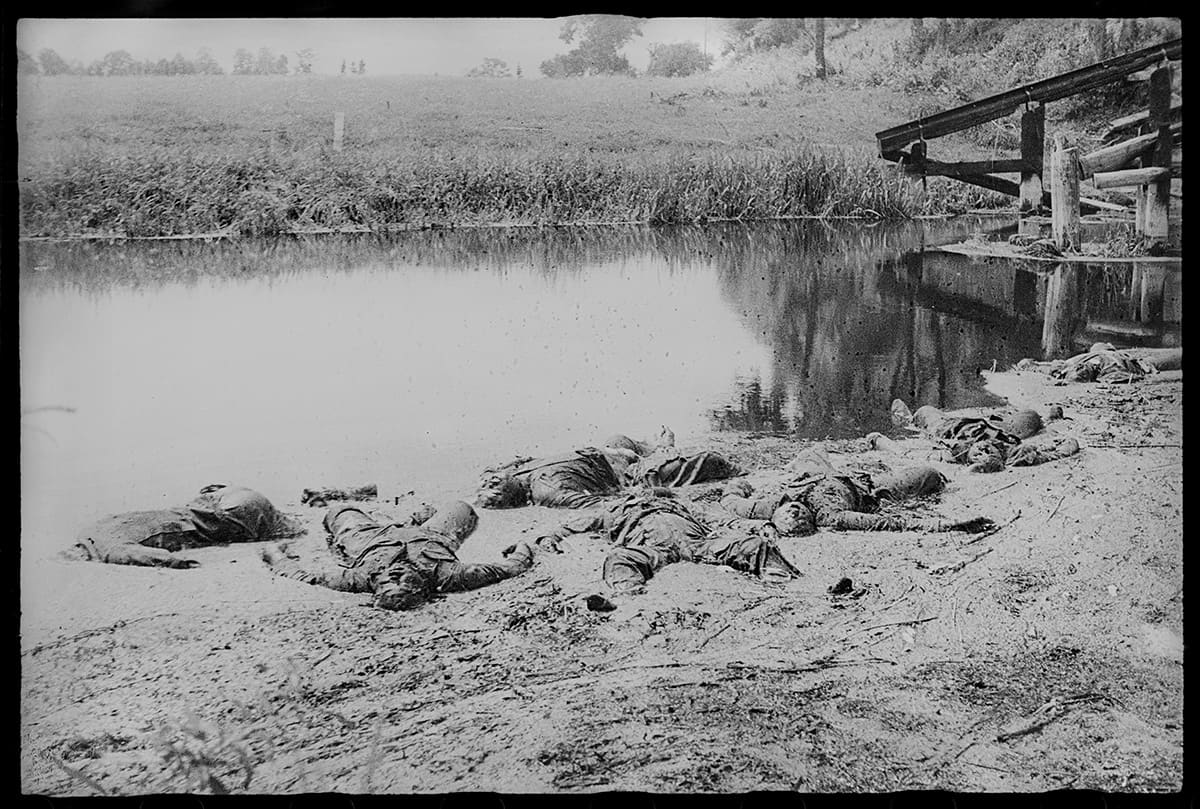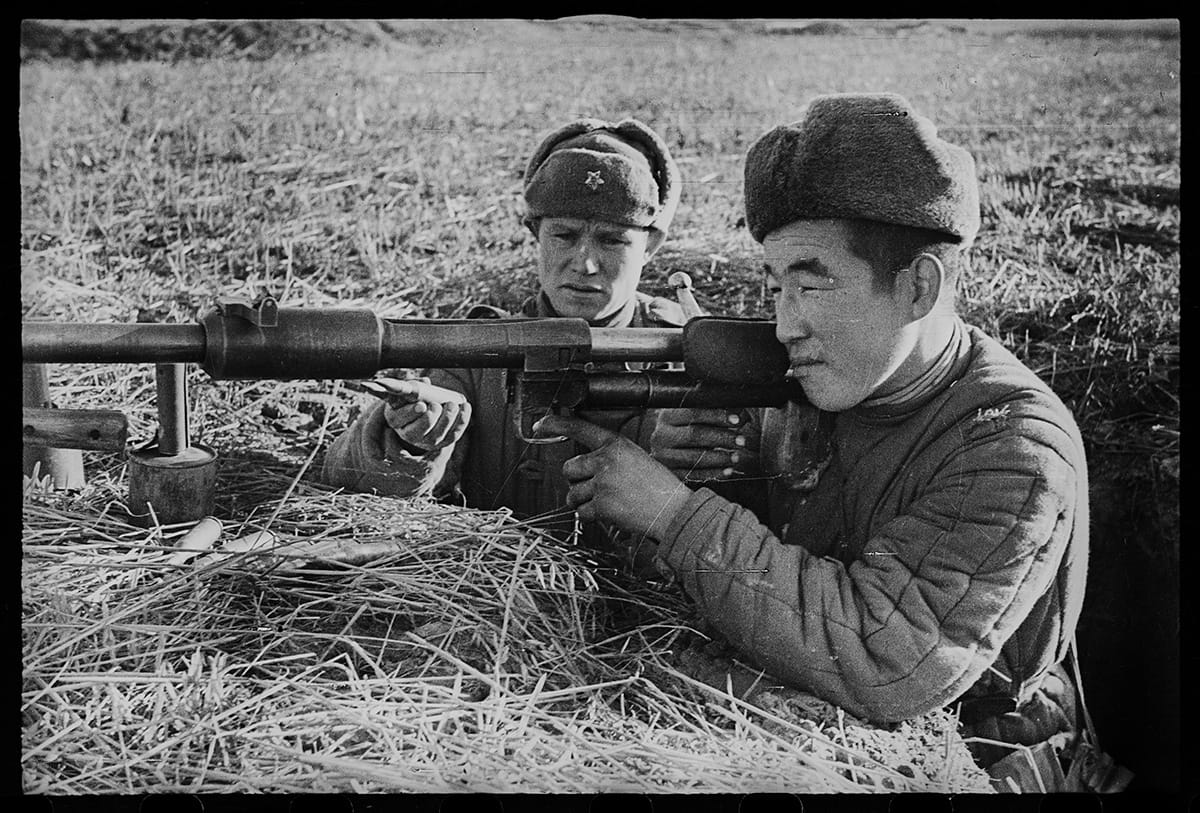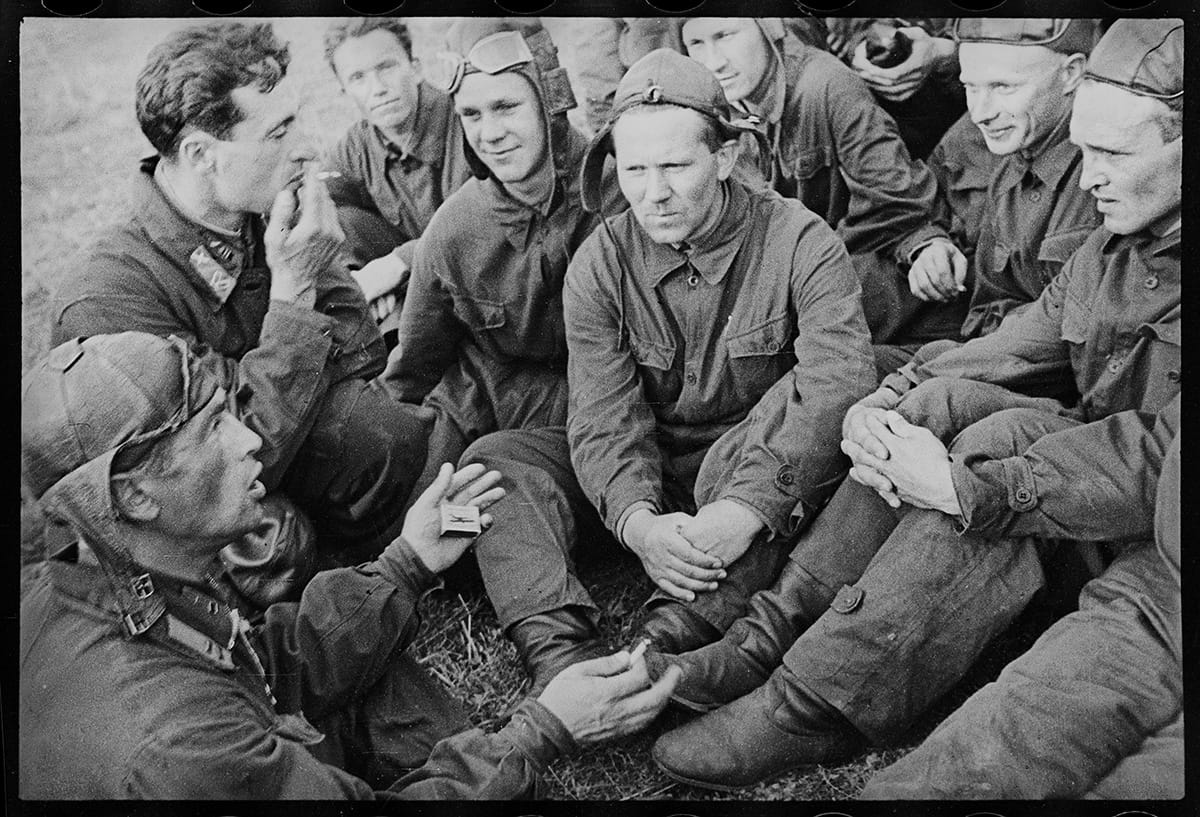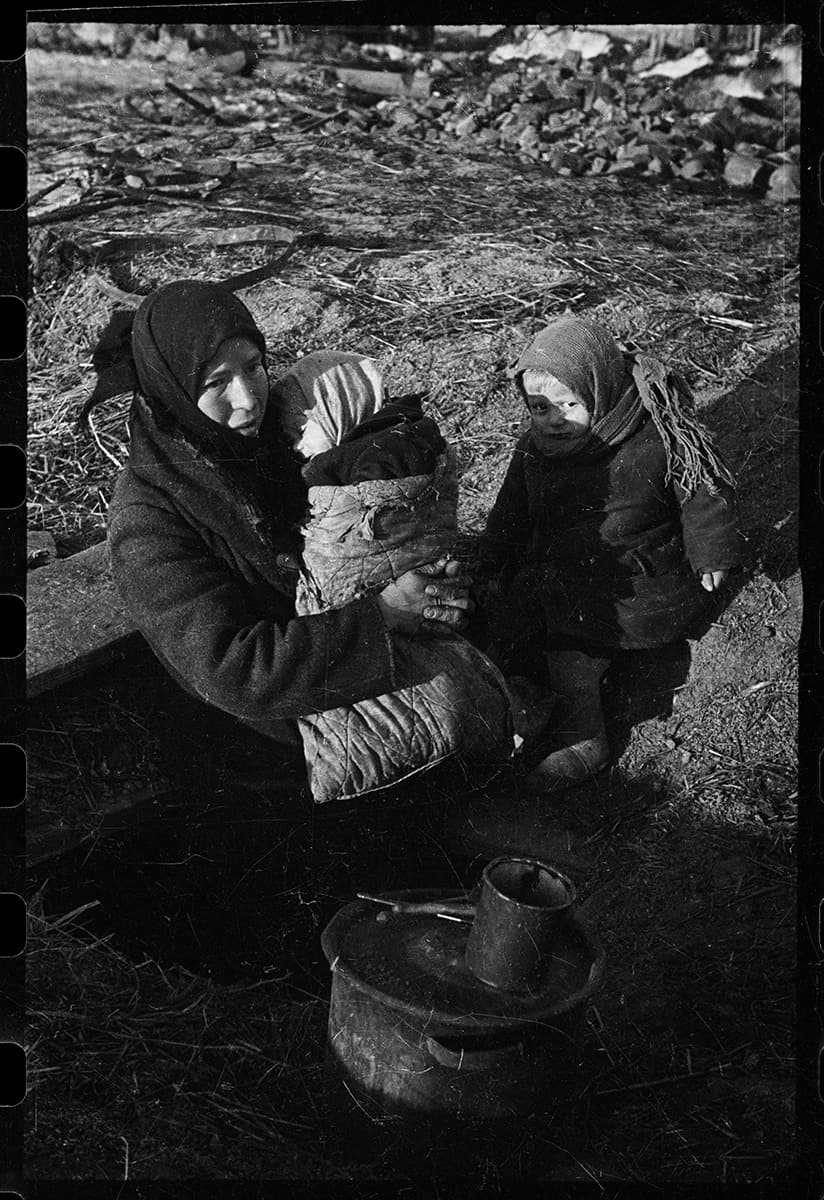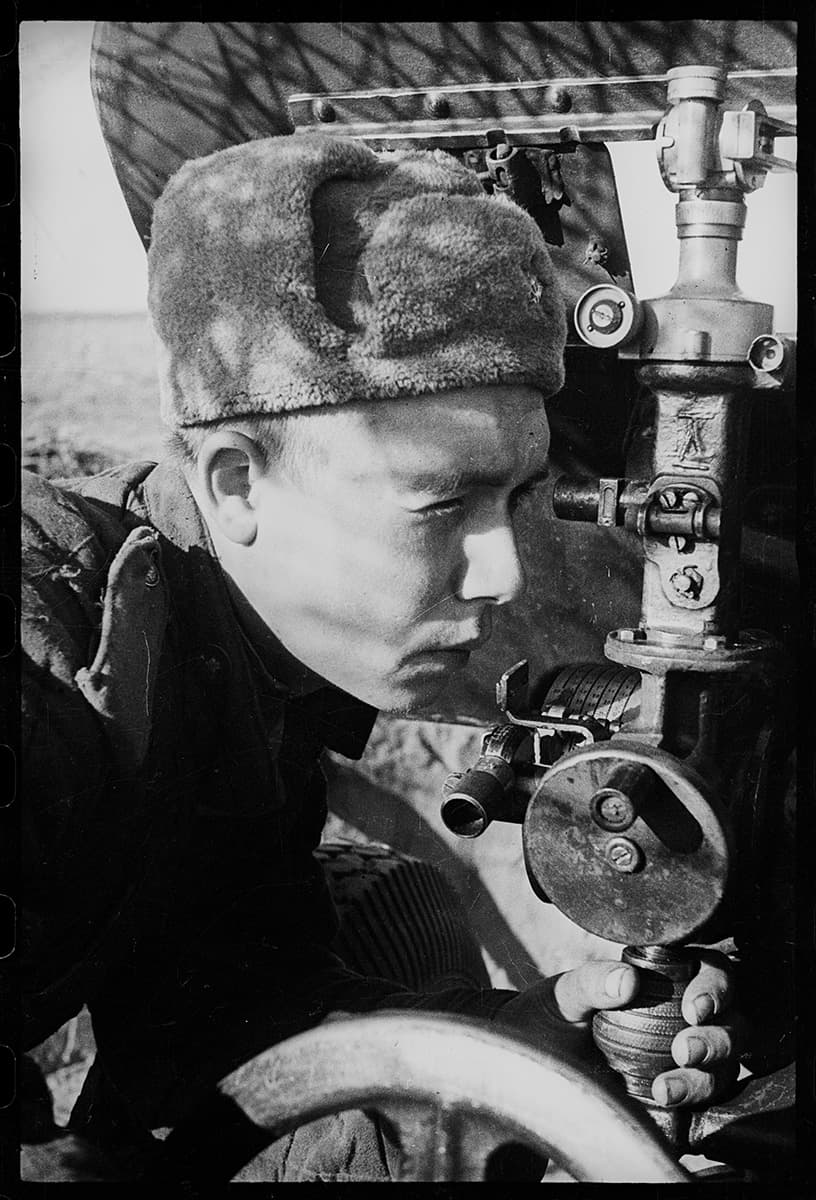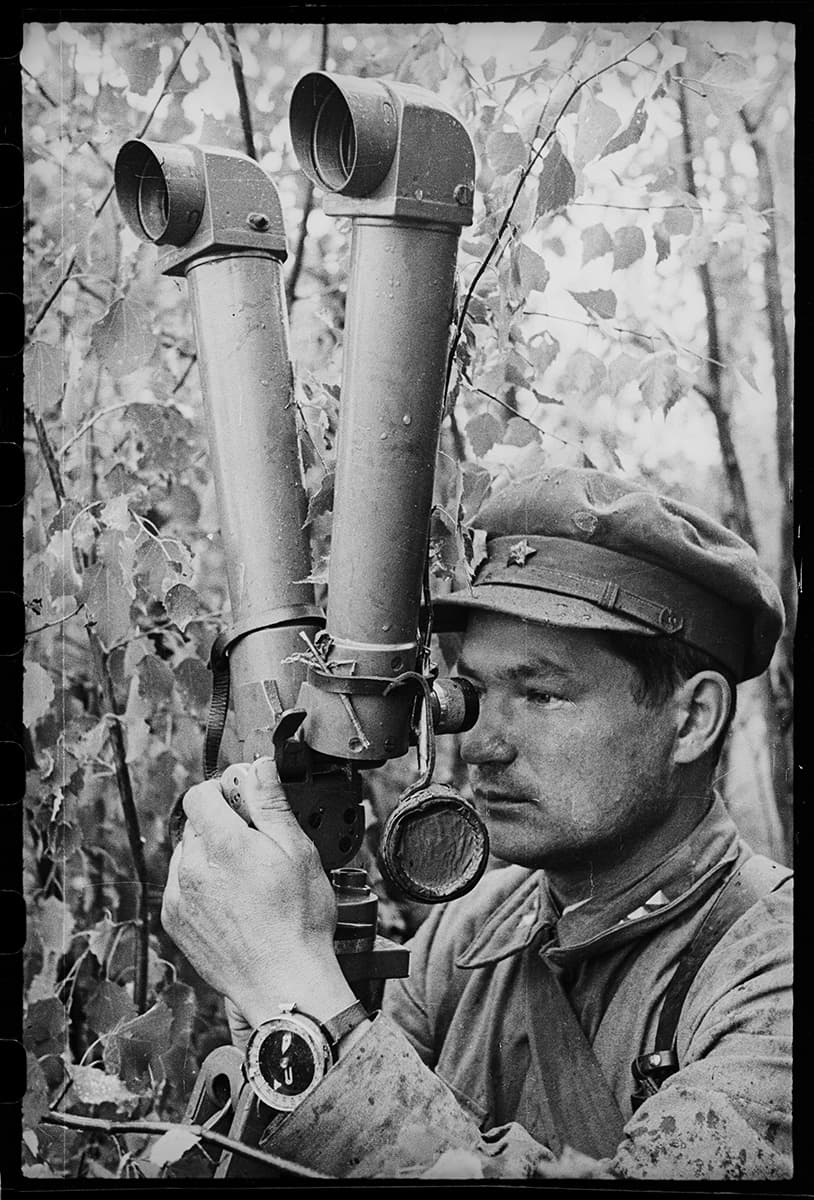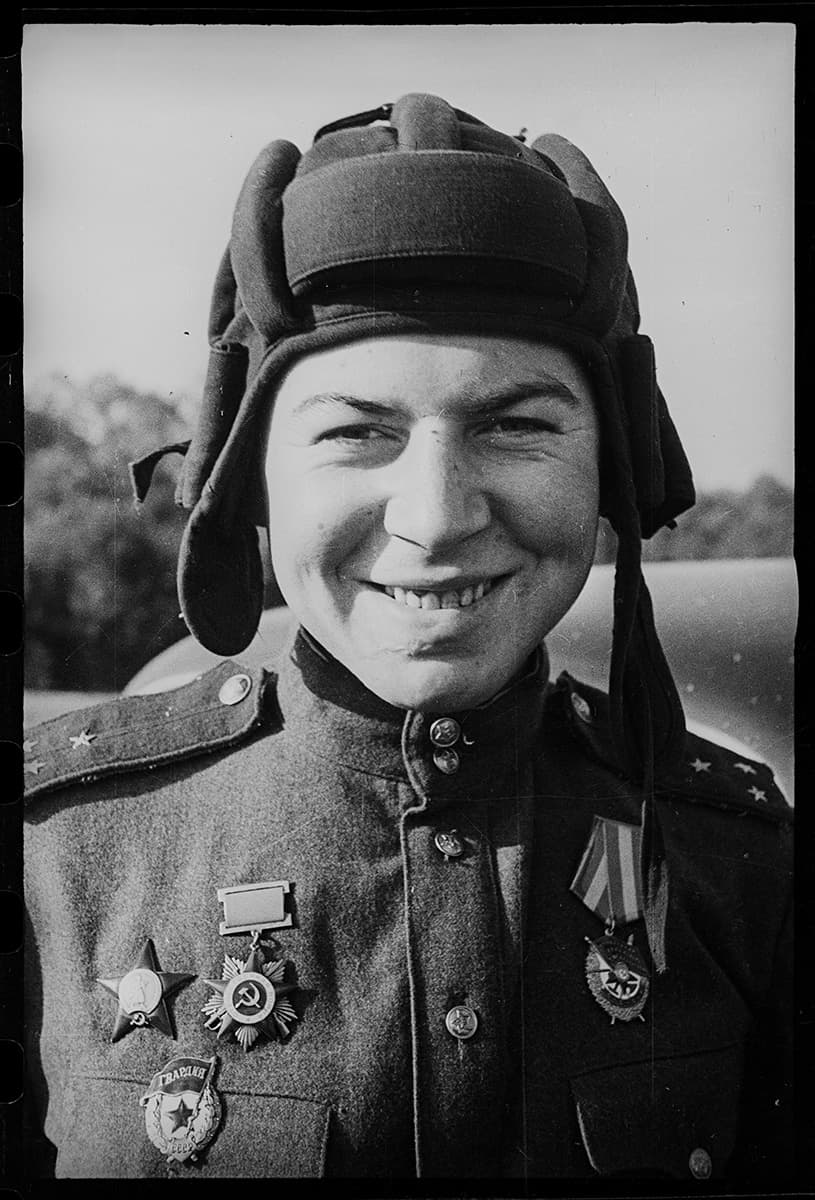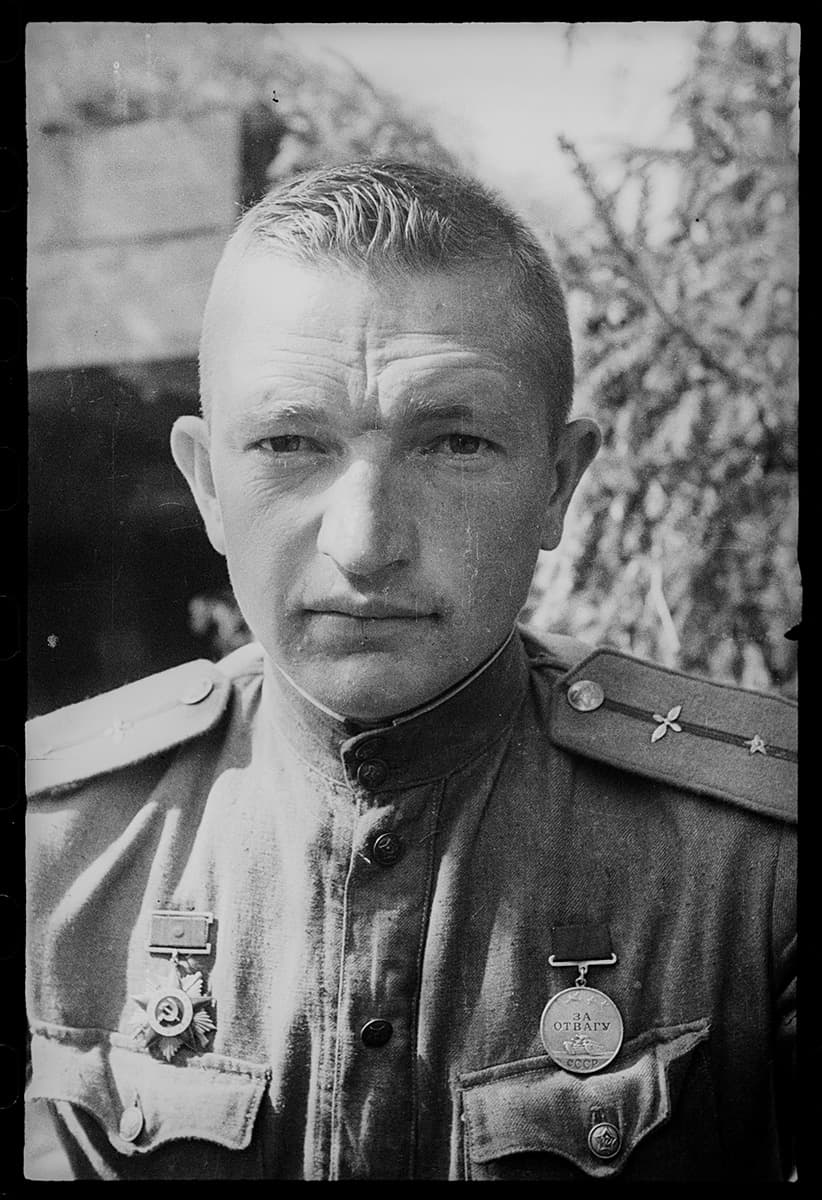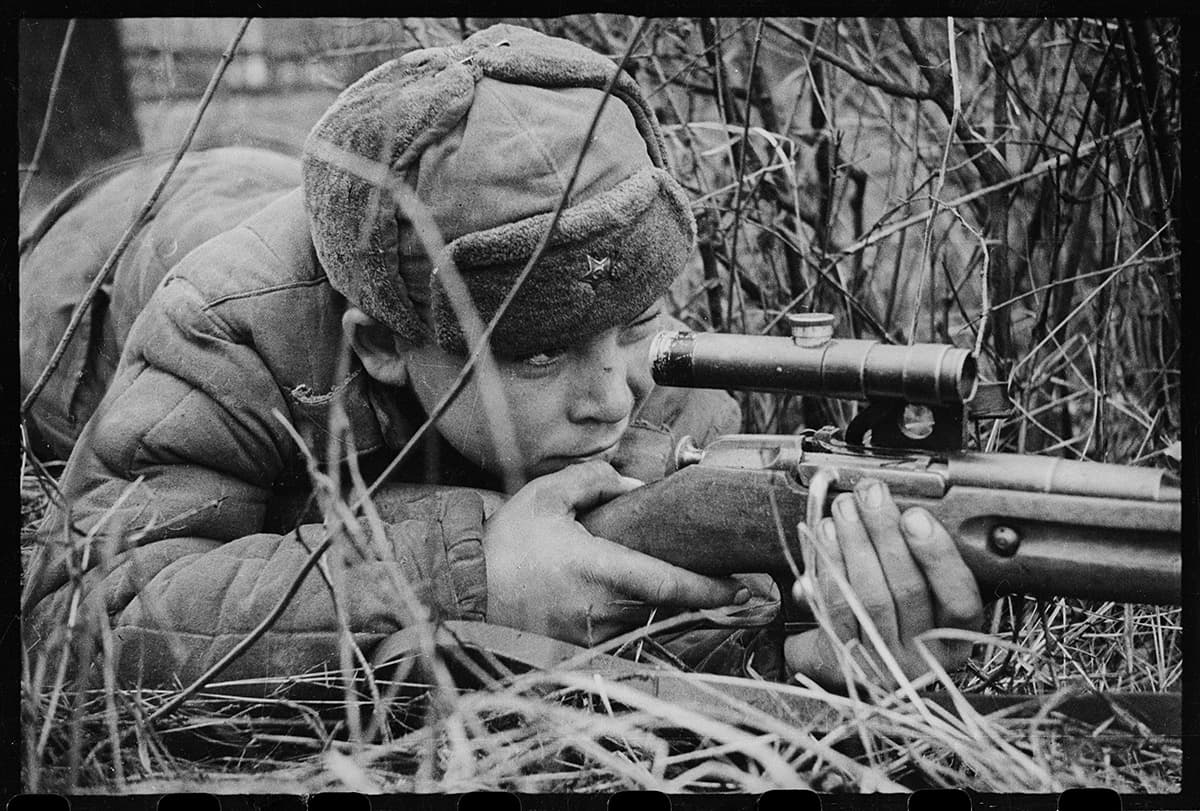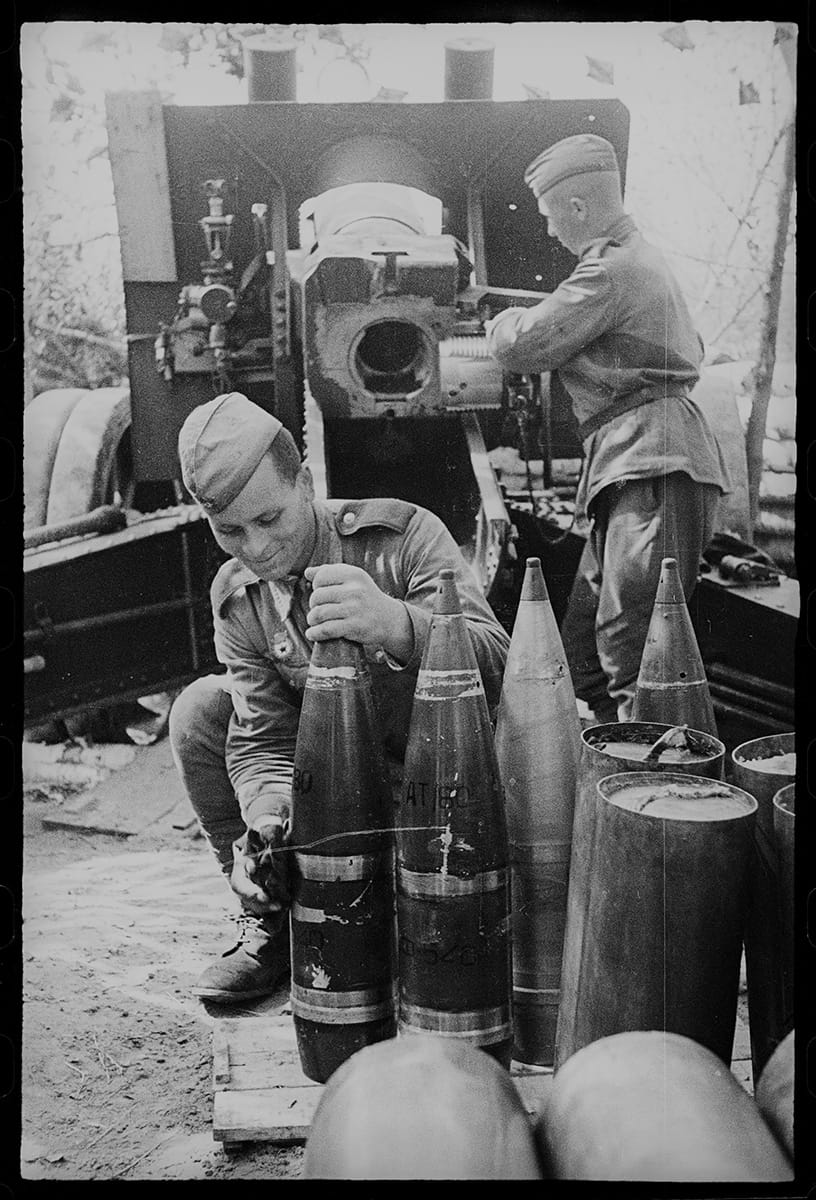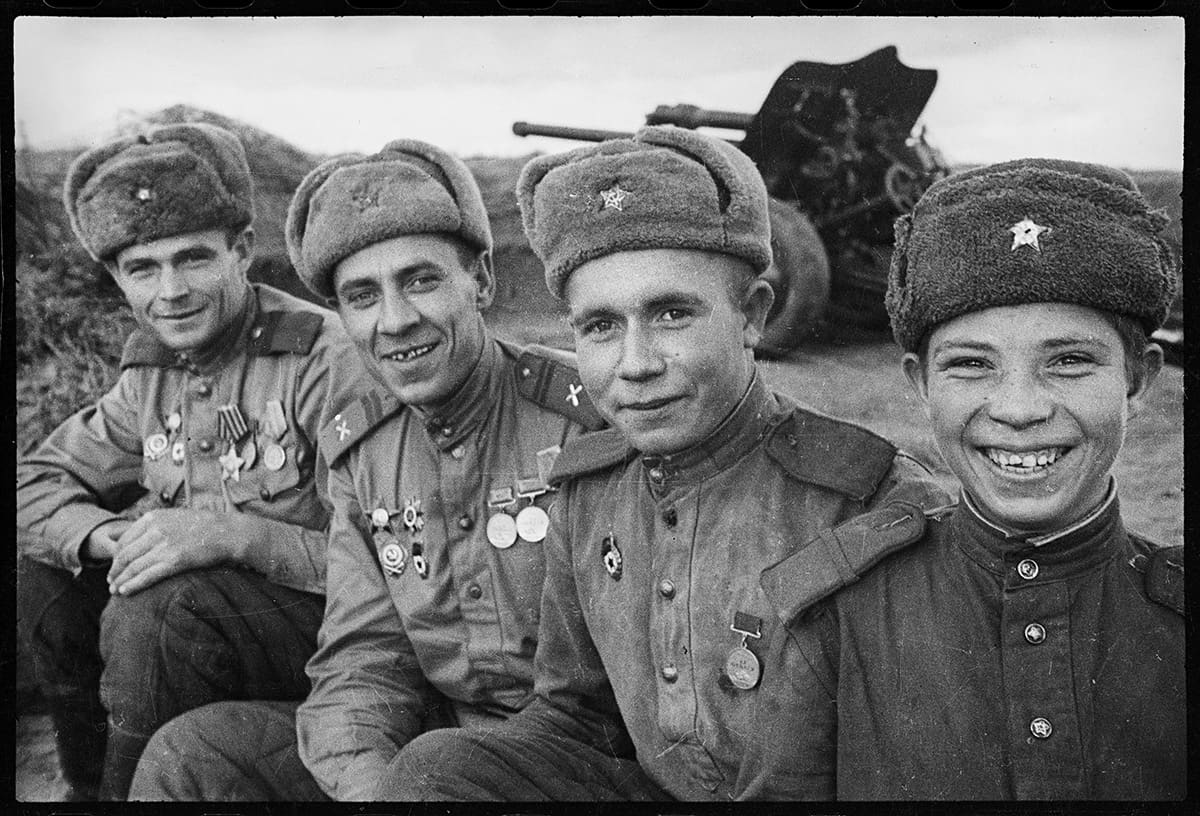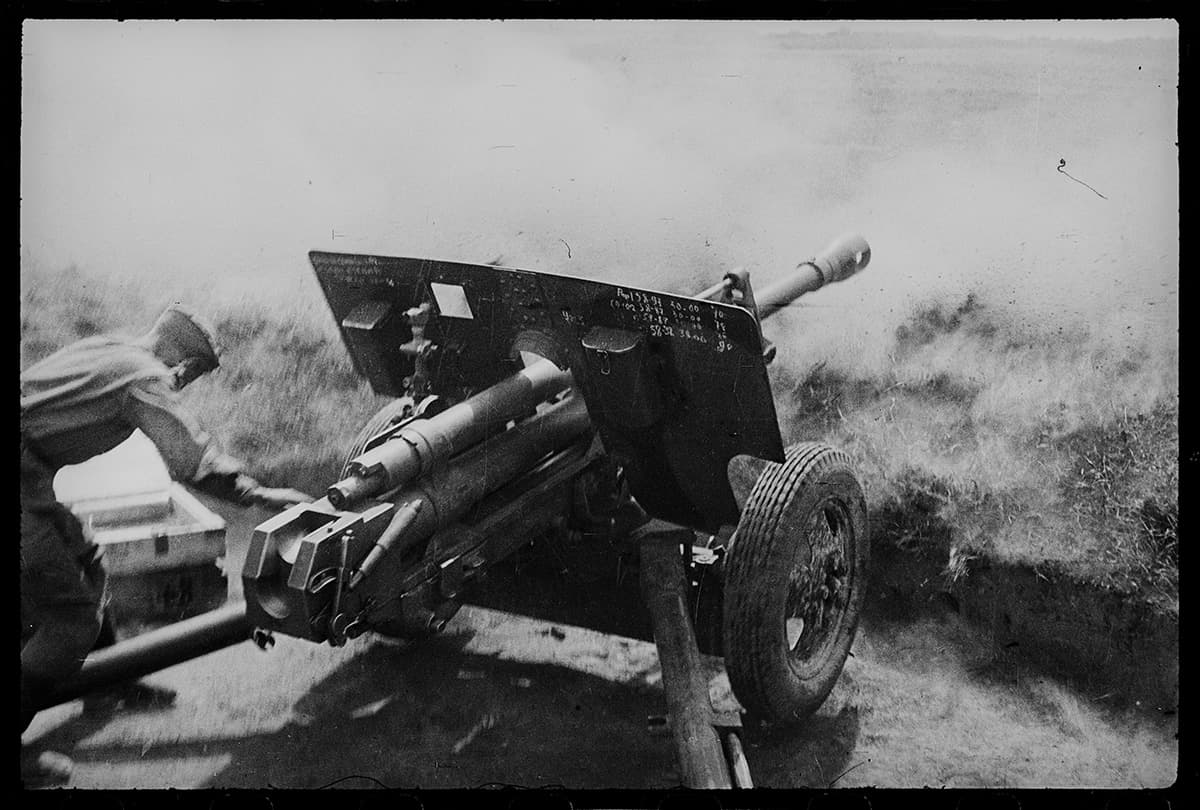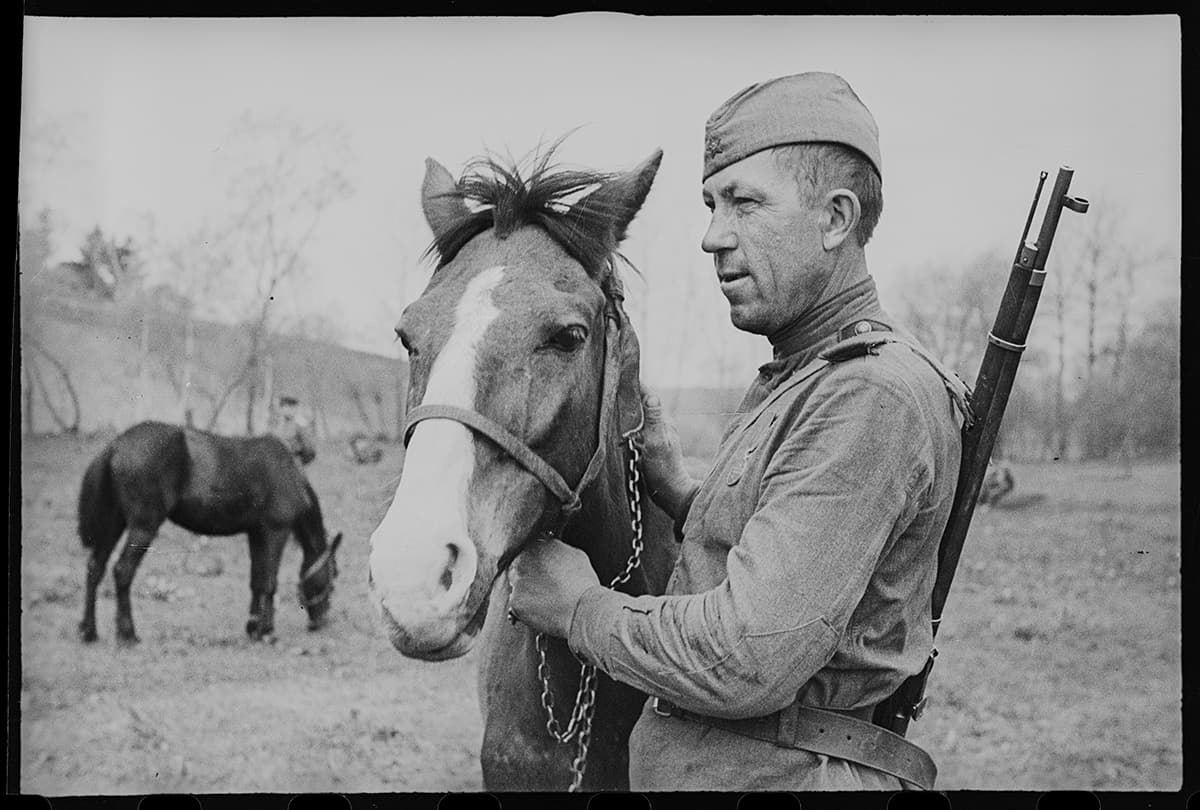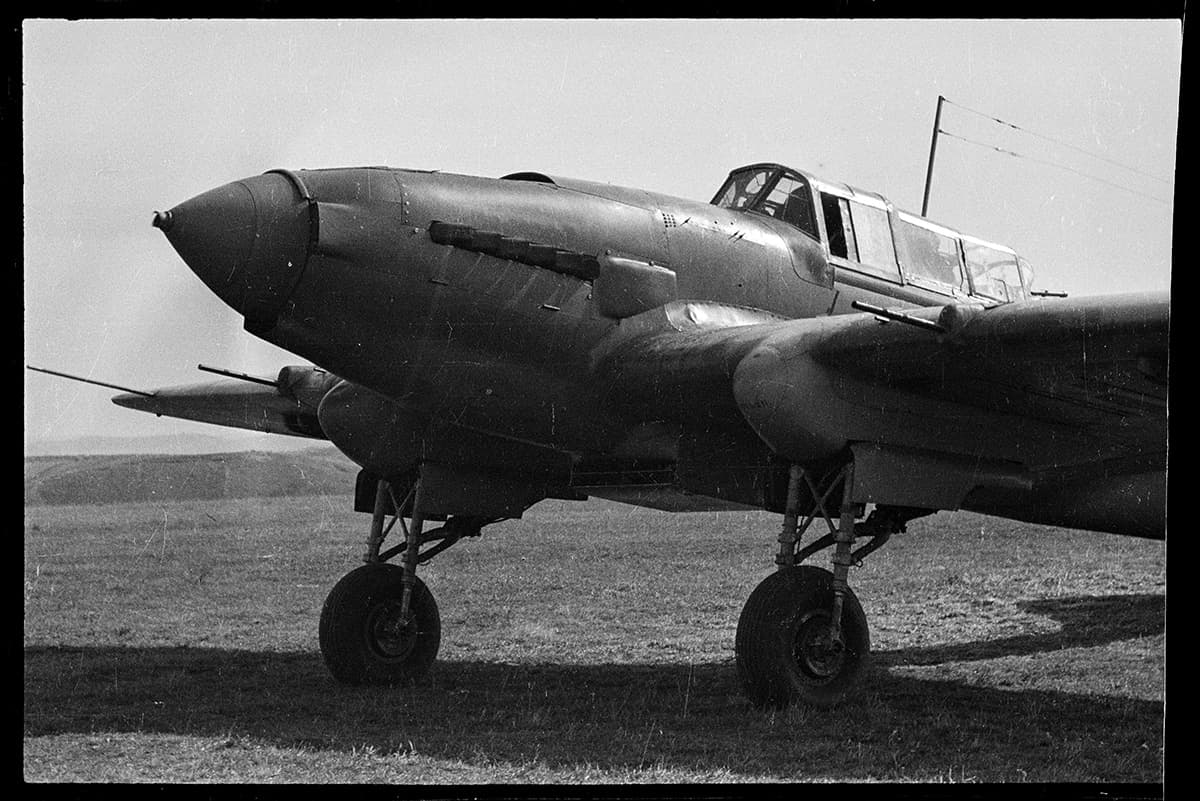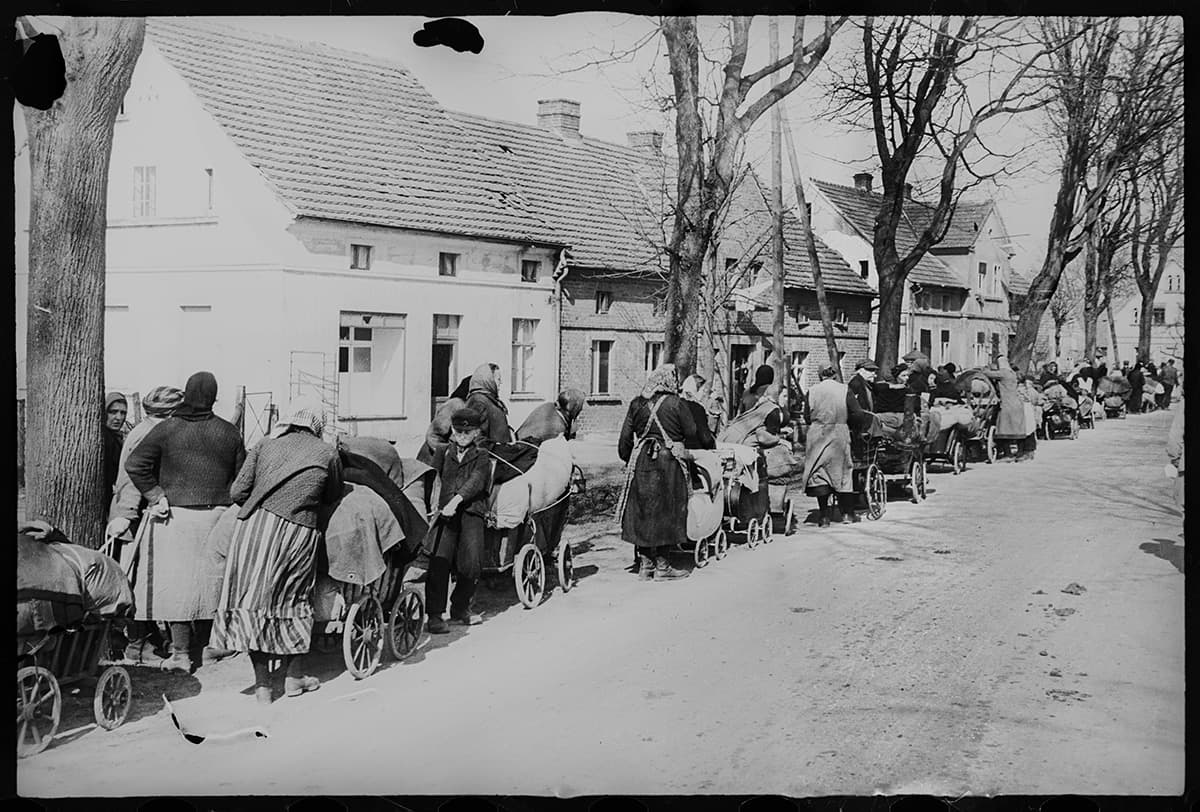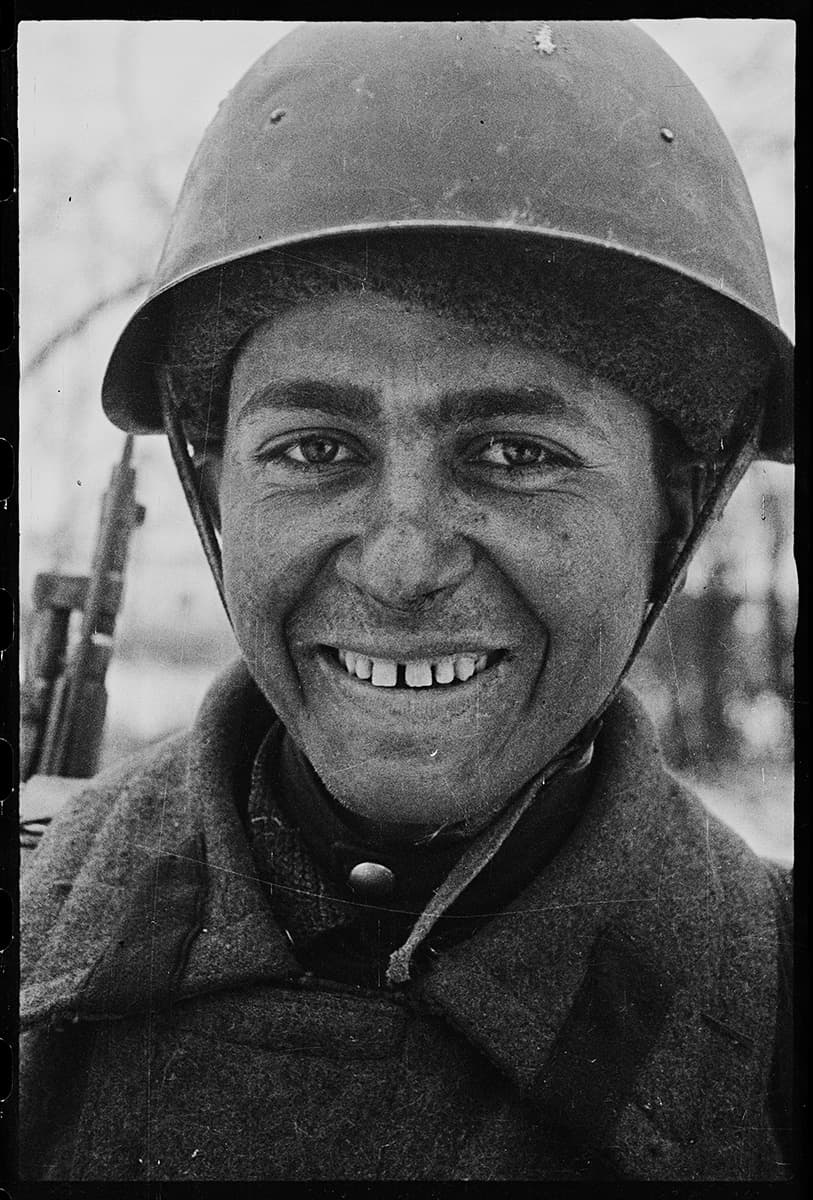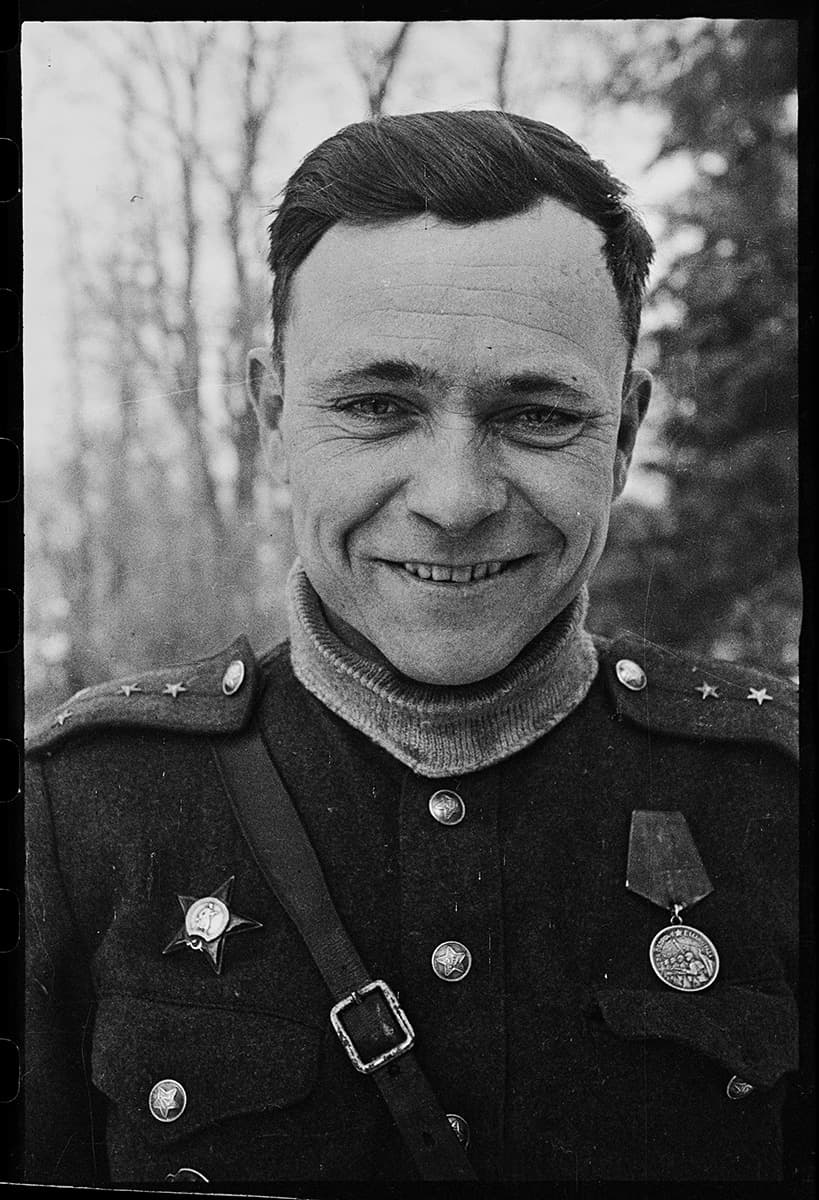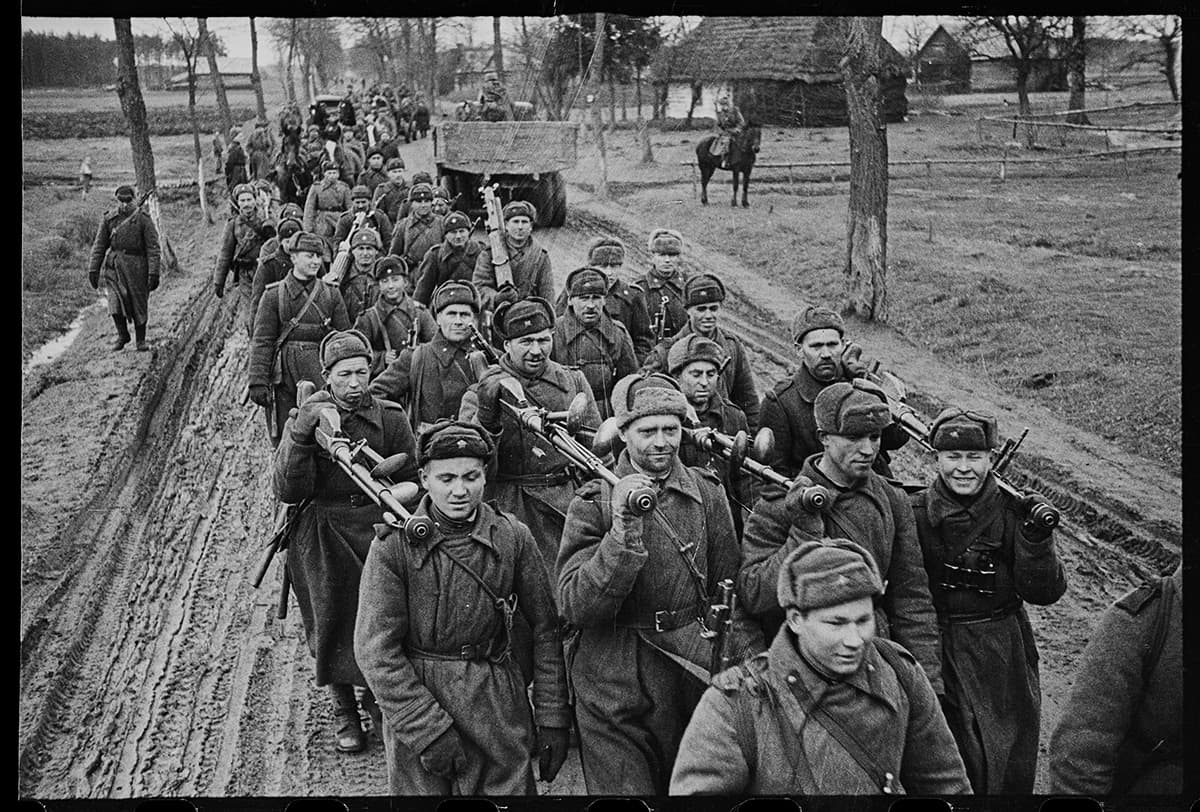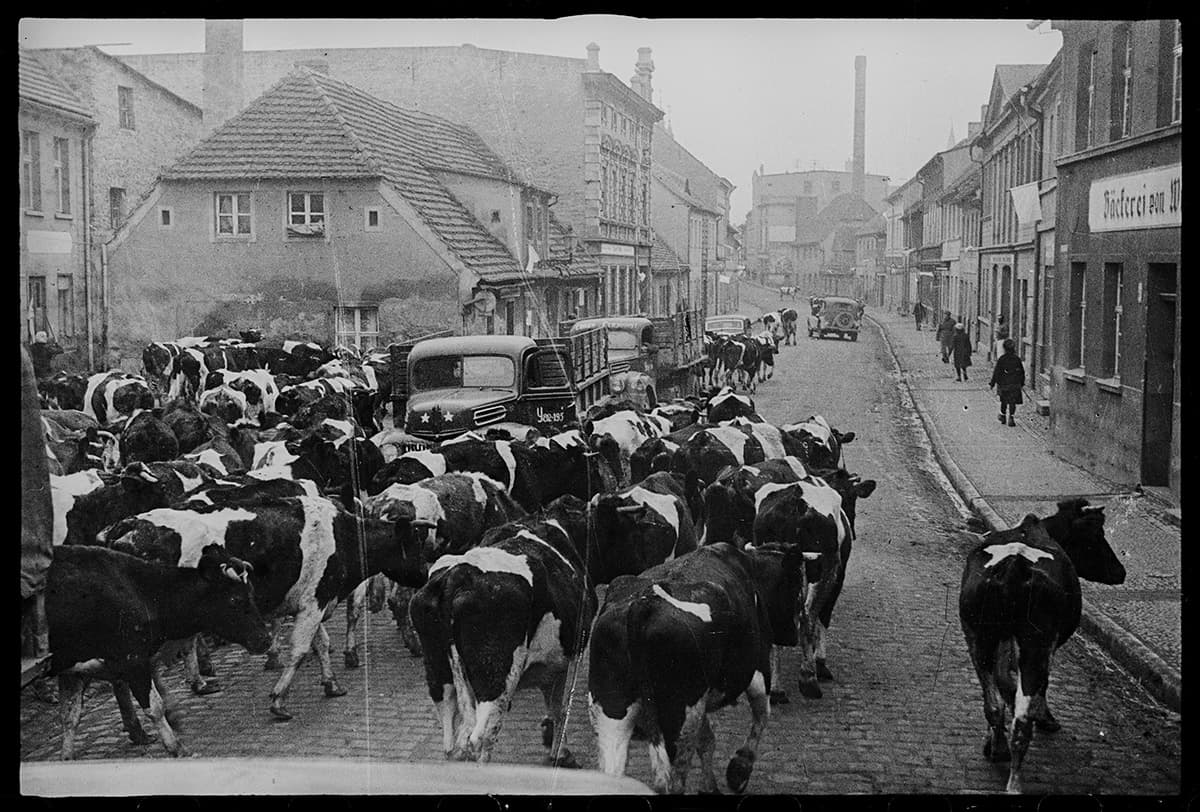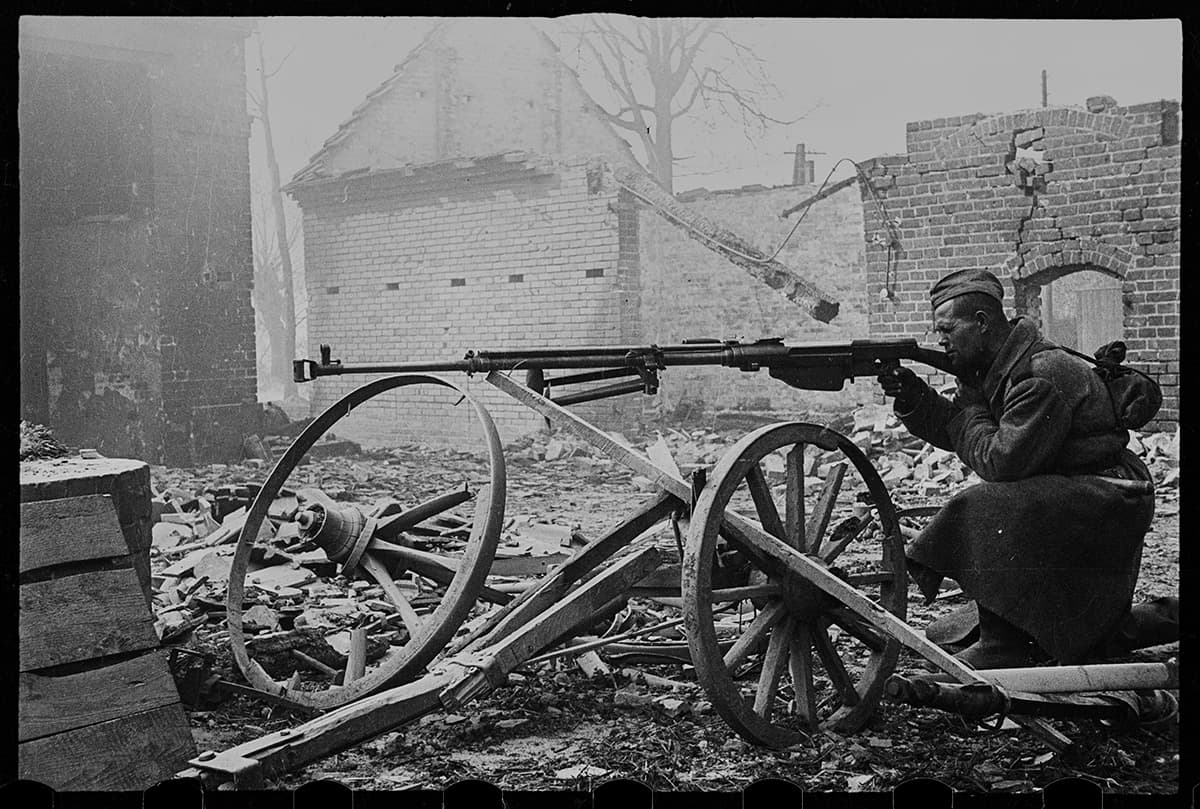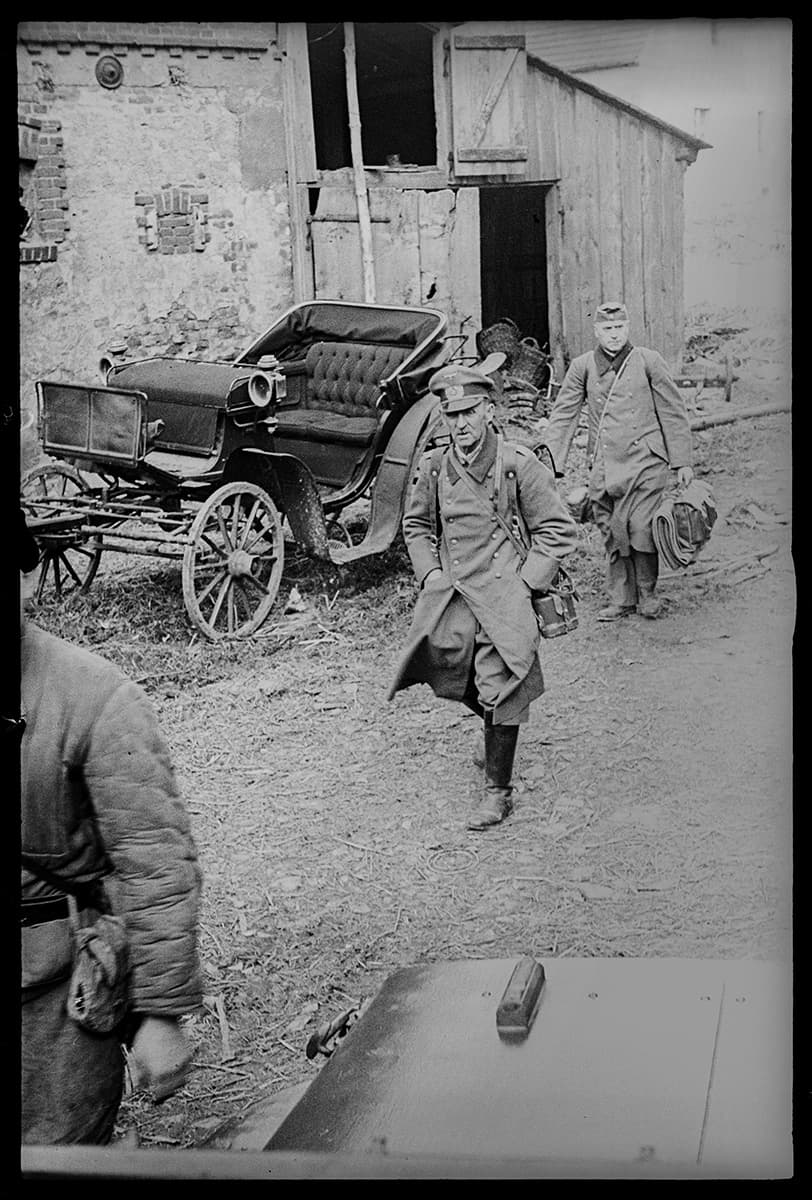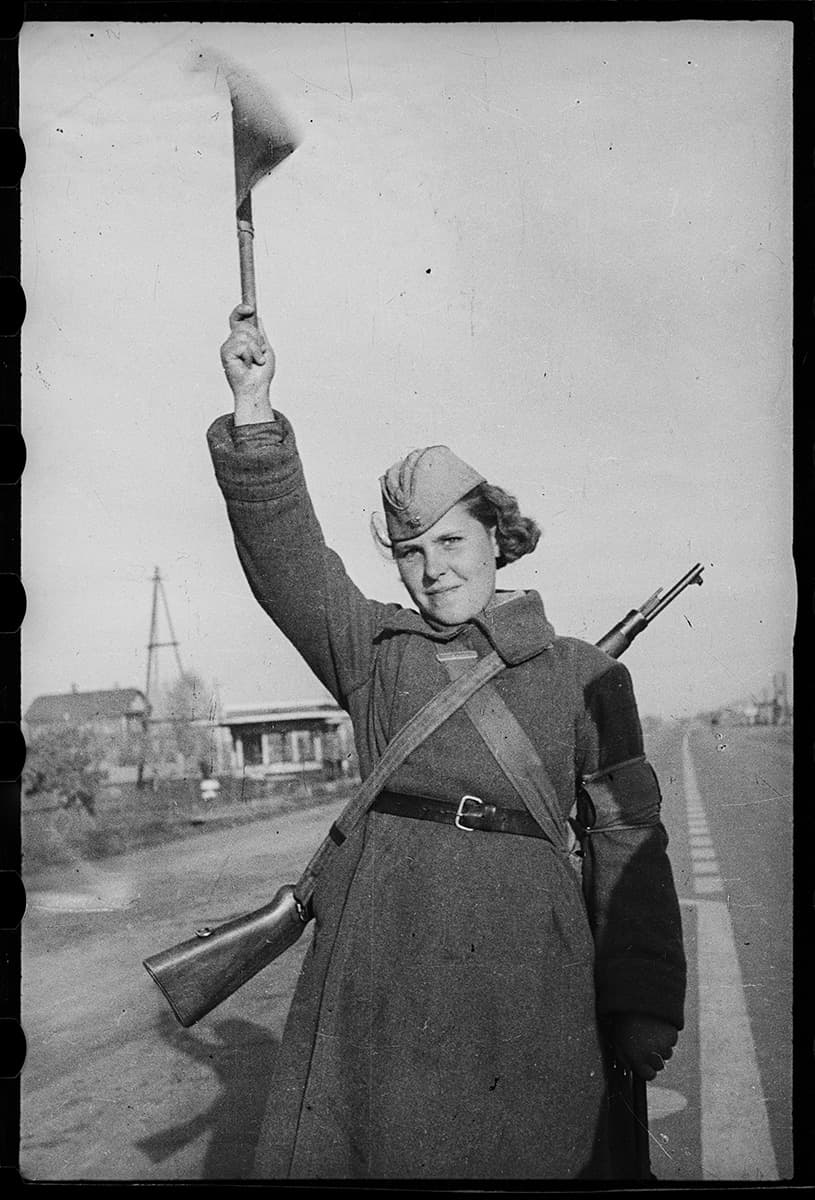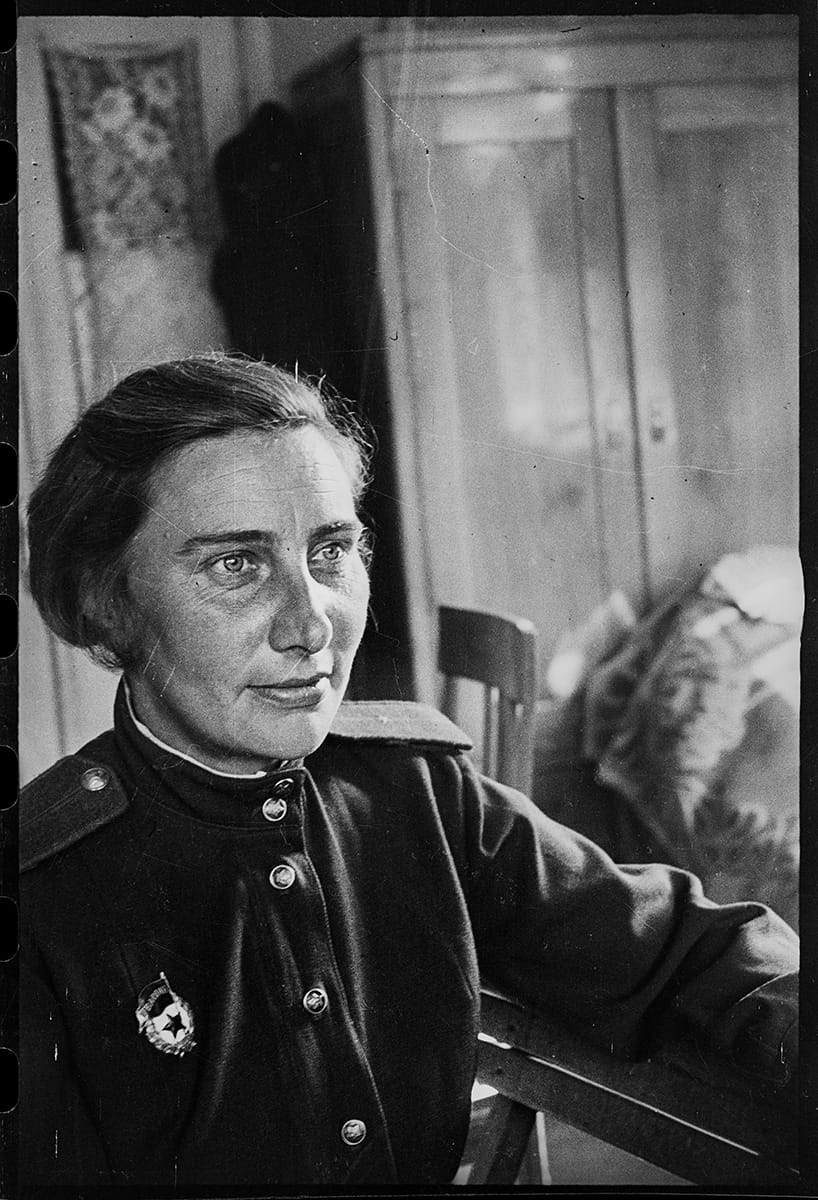
Olga Ignatovich: a rare view at war through the lens of the Soviet female photographer
Olga Ignatovich: a rare view at war through the lens of the Soviet female photographer
The war archive of Olga Ignatovich, one of the few Soviet women photographers who photographed the Second World War (the Great Patriotic War), was thought to be lost forever, until recently. It was found in a completely disarranged state and stored in a shoebox. Some of the negatives were damaged by fungus and mould. So it was only a matter of time before they disappeared. This truly unique discovery allows not only to see Olga Ignatovich's photographic talent much more widely, but also to identify the true authorship of many pictures, which during the post-war years was assigned to Boris Ignatovich (her brother).
During the Second World War, there were only seven female photojournalists on the Soviet side. War, like photography itself, was considered to be a man's job. Women in the war had to endure enormous physical and psychological stresses. However, women's view of the war was completely different, more human and emotional.
If we talk about Olga Ignatovich's biography, her surname is most often associated with the legacy of Boris Ignatovich, a classic of Soviet photography. Perhaps that is why Olga's own work was always in the shadow of her "big" brother.
Olga Vsevolodovna Ignatovich was born in 1905, according to some sources in Slutsk (Belarus), according to others in Lodz (Poland). She was the younger sister of the famous Soviet photojournalist and explorer of the visual language of photography Boris Vsevolodovich Ignatovich. Together with her brother she worked for the newspaper "Bednota" and the magazine "Narpit", and from the mid-1930s she worked for the newspaper "Vechernyaya Moskva". Olga was a member of the "Ignatovich Brigade" in Soyuzphoto. Boris also encouraged his other two sisters to take up photography, but only Olga showed outstanding talent.
According to the archival documentation, Olga enlisted to the Soviet army in November 1941. From the first months of the war she worked as a photo correspondent for the Soviet frontline newspaper "Boevoye Znamya" of the 30th Army, which was transformed in April 1943 into the 10th Guards Army (as part of the Kalinin Front). At the end of 1943 Olga Vsevolodovna was assigned to the editorial staff of the newspaper "For the Honour of the Motherland" of the newly formed 1st Ukrainian Front. Being a photo correspondent of this newspaper, Olga Ignatovich shot the last two years of the war.
Among the significant photographic works of Olga Ignatovich are: a series of photographs from the liberated Rzhev, where she entered with the 30th Army (3 March 1943), a series of photographs of aviators on the Kalinin front (1942), the advance of the Red Army to the West under the command of Marshals Zhukov and Konev (1944-45). A distinct page in the photographic heritage of Olga Ignatovich is her special assignment to photograph the German death camps Majdanek (1944) and Auschwitz (1945) liberated by the Red Army. The authorship of the world-famous shots "Liberation of Auschwitz" was attributed to Boris Ignatovich during all these years. The photographs taken by Olga Ignatovich in the Auschwitz death camp became the basis for awarding her the Order of the Red Star. The pictures she took in the concentration camps were included in the materials of the Nuremberg Trials.
But if we know quite a lot about Olga Ignatovich's war career, there is very few data about her post-war life. After demobilisation, Olga Ignatovich worked for Sovinformburo, and from 1961 she continued to work for the Novosti Press Agency. From the late 1960s she was an employee of the publishing house "Soviet Artist".
There is also no data about last years of her life, the exact date of her death and even the place of her burial. Only a short record - Olga Vsevolodovna Ignatovich died in 1984 and is buried in Moscow. The burial place with a white marble tombstone was found in Khimki cemetery in Moscow. On tombstone was engraved in gold letters her name and exact birth - death dates, which were also unknown until today: 24 July 1905 - 21 March 1984.

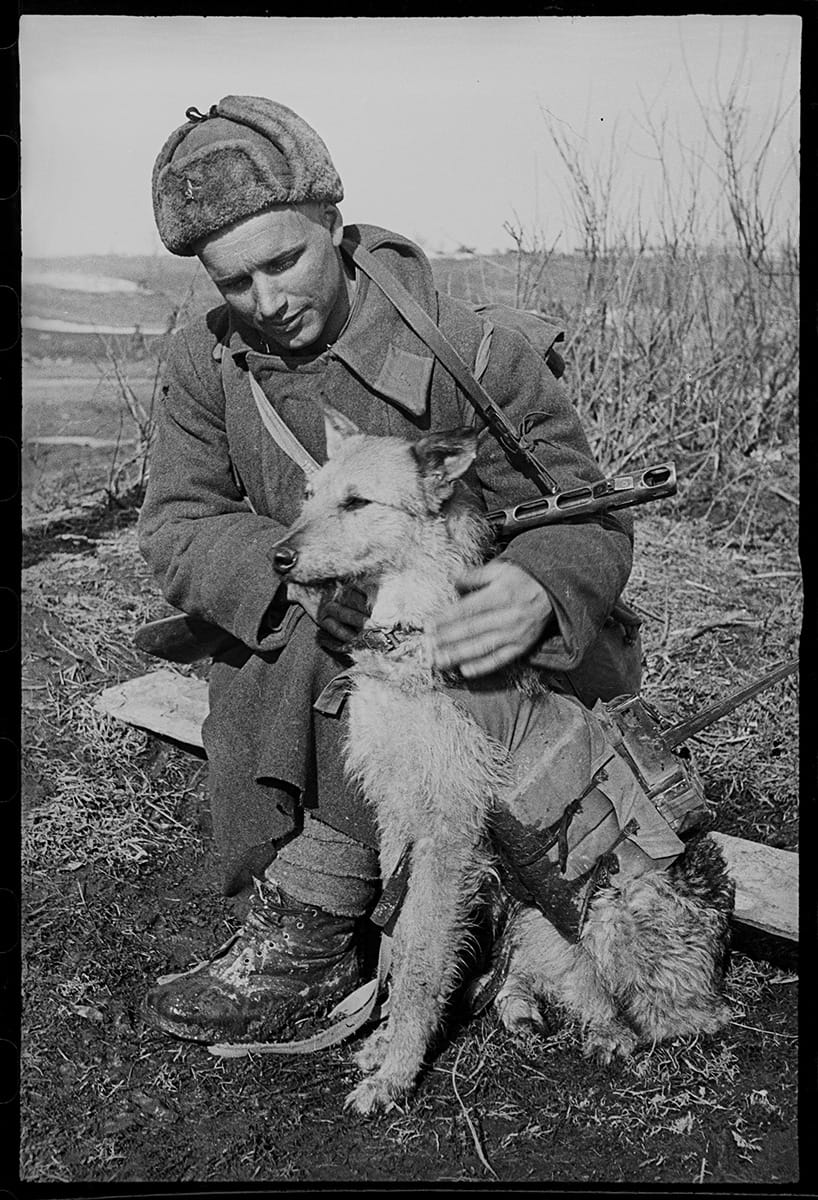
An anti-tank dog with a guide at a crossing. The Kalinin front. 1942
An anti-tank dog with a guide at a crossing. The Kalinin front. 1942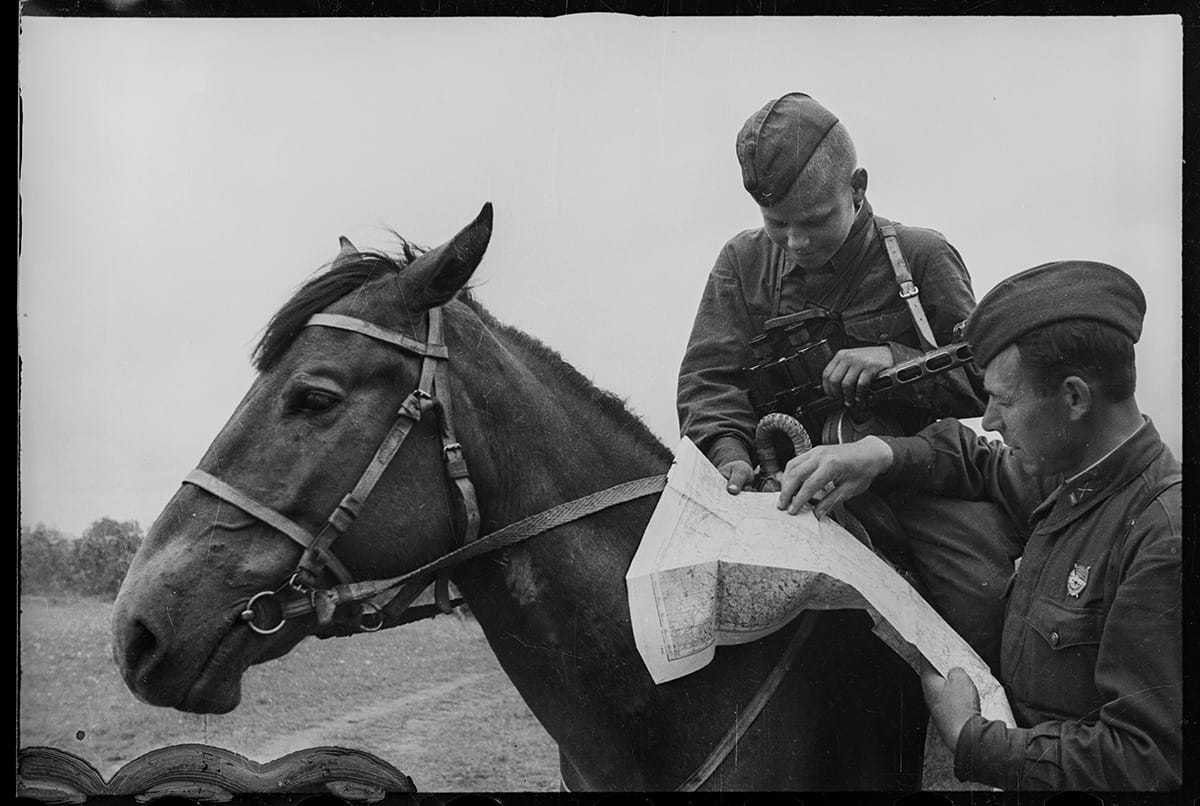
A military messenger student of one of the artillery units is given a task. The Kalinin front. 1942
A military messenger student of one of the artillery units is given a task. The Kalinin front. 1942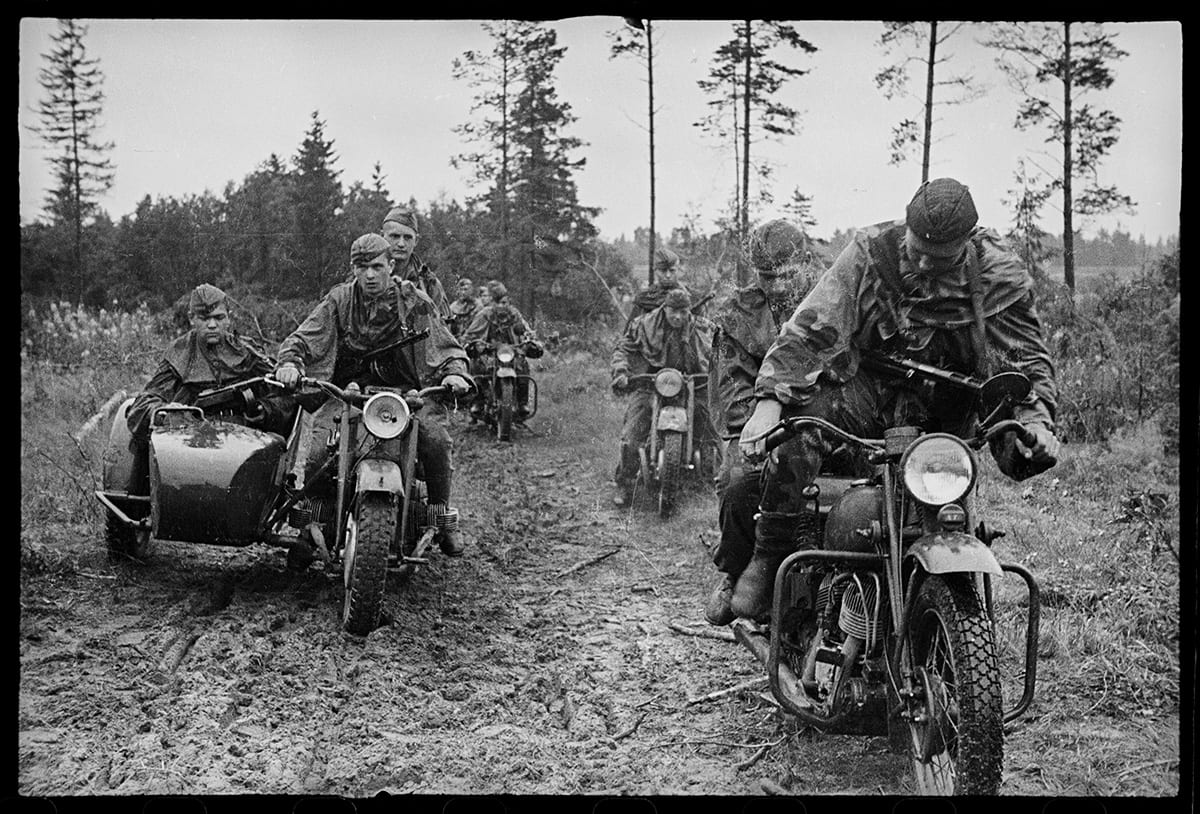
Motorcycle scouts near Rzhev, Kalinin front, 1942.A group of Russian motorcycle scouts from the 2nd Guards Motorcycle Regiment, 30th Army, wearing summer camouflage suits from 1937 and riding new Indian 741B motorcycles, most probably among the first batch delivered to the USSR under the Lend-Lease programme. A motorcycle with a sidecar, probably restored at the Serpukhov motorcycle factory, is a trophy German Zundapp KS-750.
Motorcycle scouts near Rzhev, Kalinin front, 1942.A group of Russian motorcycle scouts from the 2nd Guards Motorcycle Regiment, 30th Army, wearing summer camouflage suits from 1937 and riding new Indian 741B motorcycles, most probably among the first batch delivered to the USSR under the Lend-Lease programme. A motorcycle with a sidecar, probably restored at the Serpukhov motorcycle factory, is a trophy German Zundapp KS-750.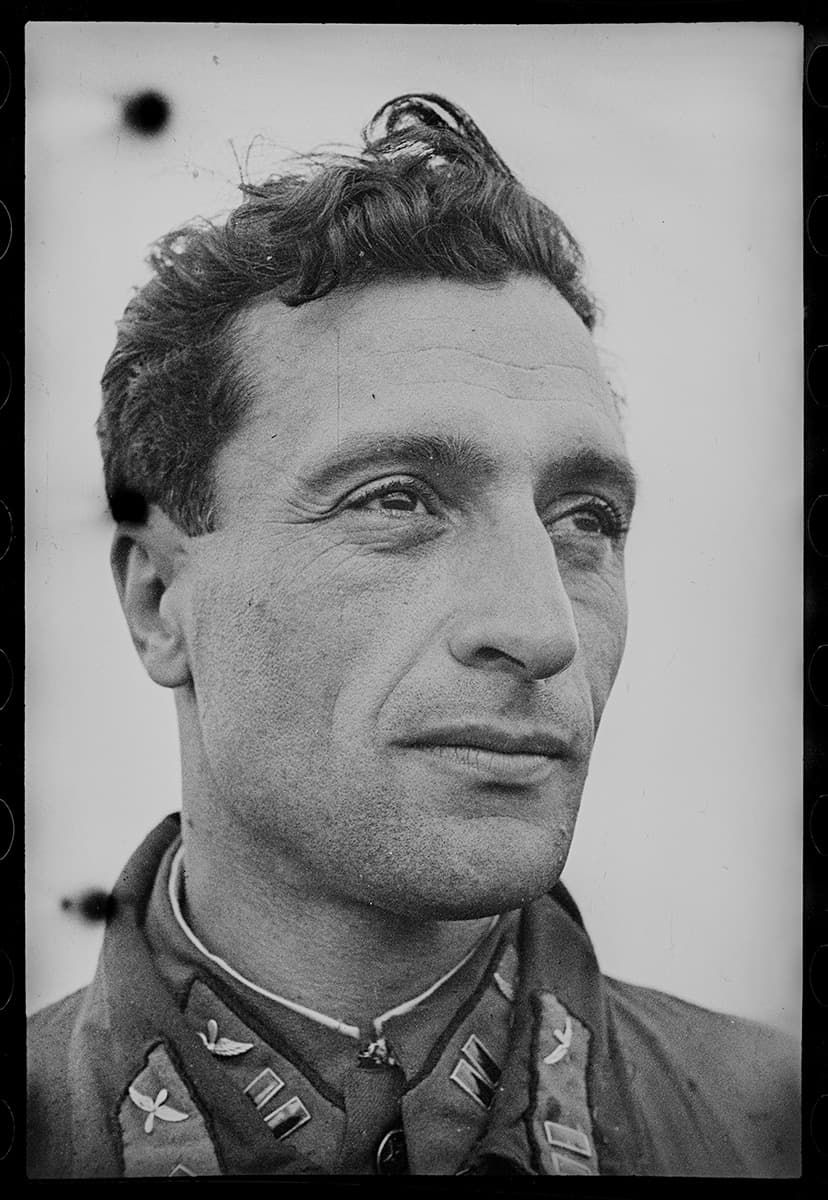
Portrait of a Soviet airman who holds the rank of Major. USSR. 1941
Portrait of a Soviet airman who holds the rank of Major. USSR. 1941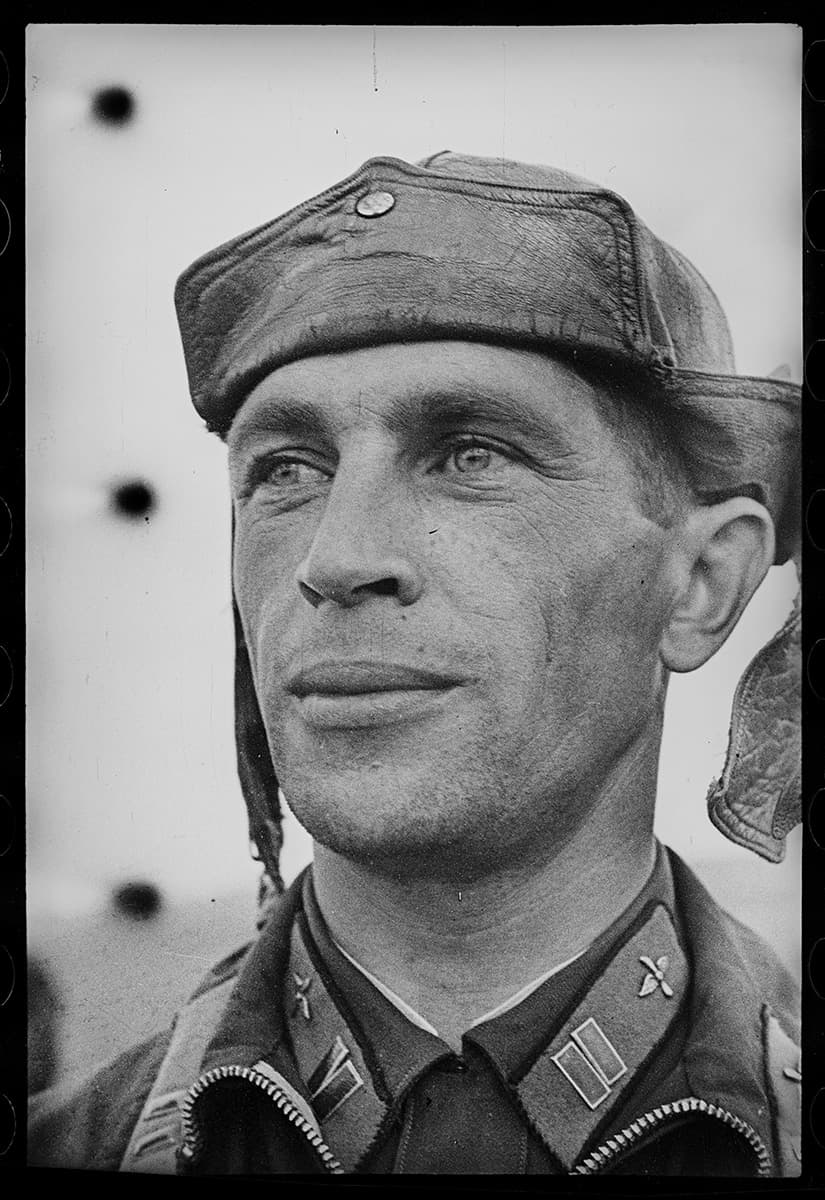
Portrait of a Soviet airman who holds the rank of Major. USSR. 1941
Portrait of a Soviet airman who holds the rank of Major. USSR. 1941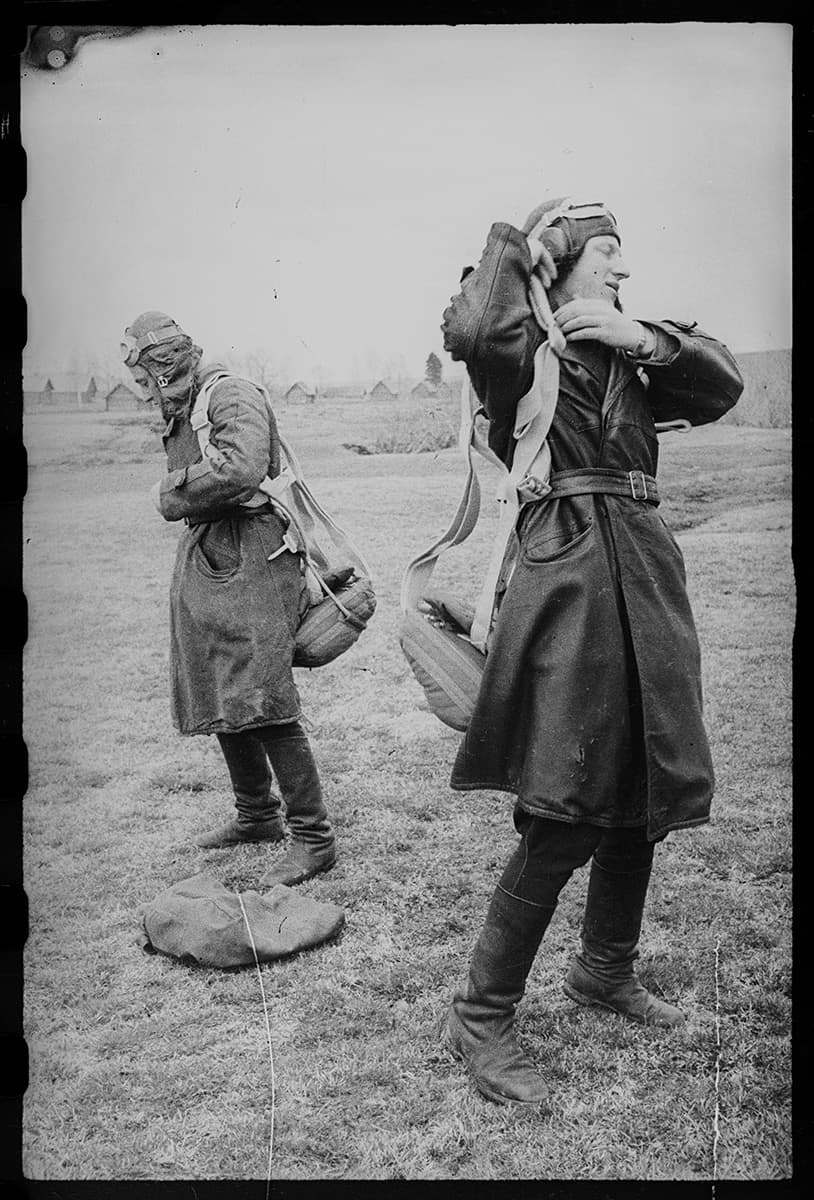
Soviet aviators putting on parachutes before a flight. USSR. 1941
Soviet aviators putting on parachutes before a flight. USSR. 1941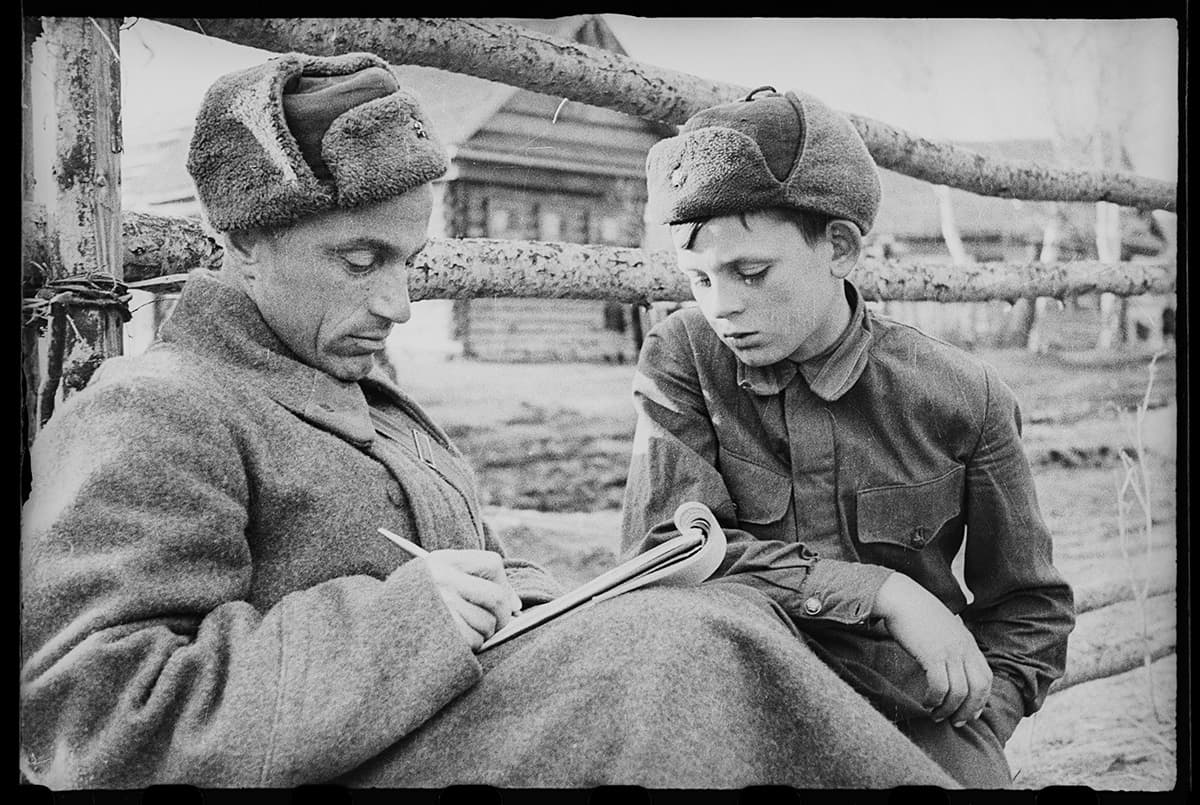
In the village street. A captain and a child soldier (also known as "a son of the regiment"). The Kalinin front. 1942 г.
In the village street. A captain and a child soldier (also known as "a son of the regiment"). The Kalinin front. 1942 г.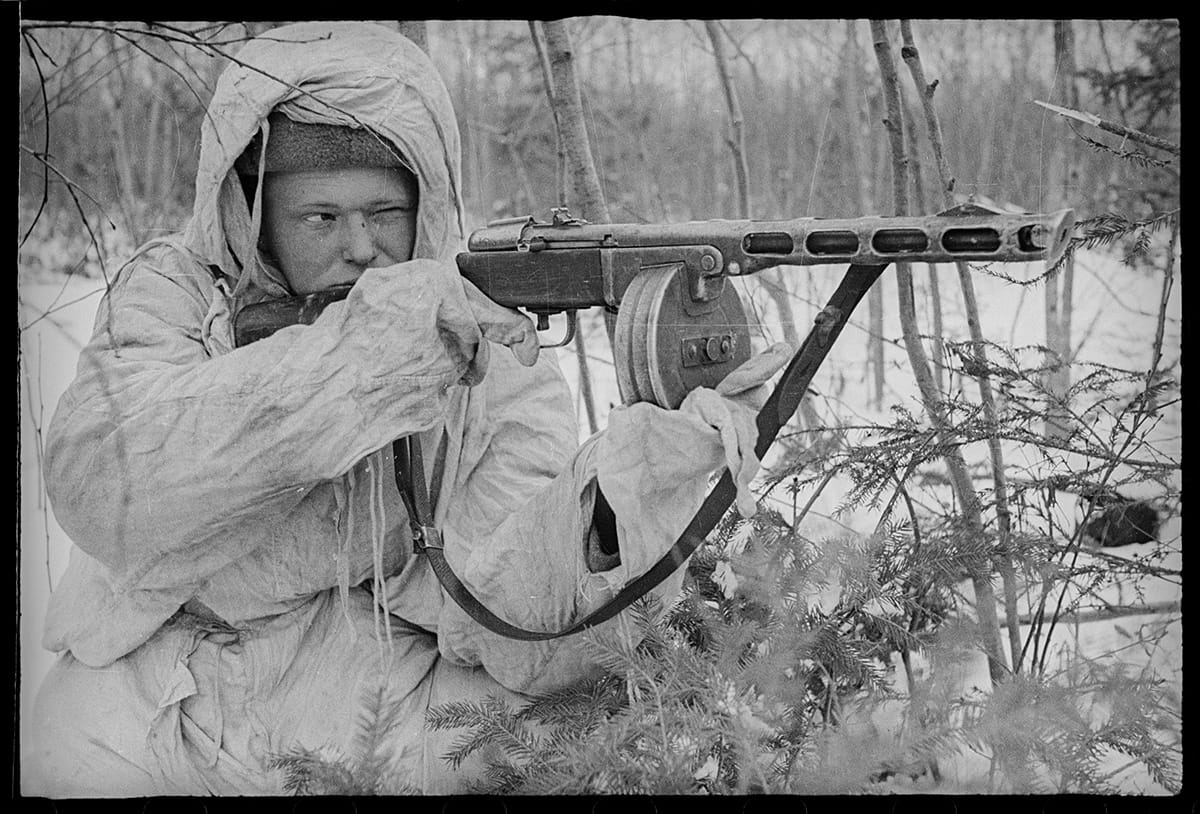
A machine gunner. The Kalinin front. Winter of 1942-43
A machine gunner. The Kalinin front. Winter of 1942-43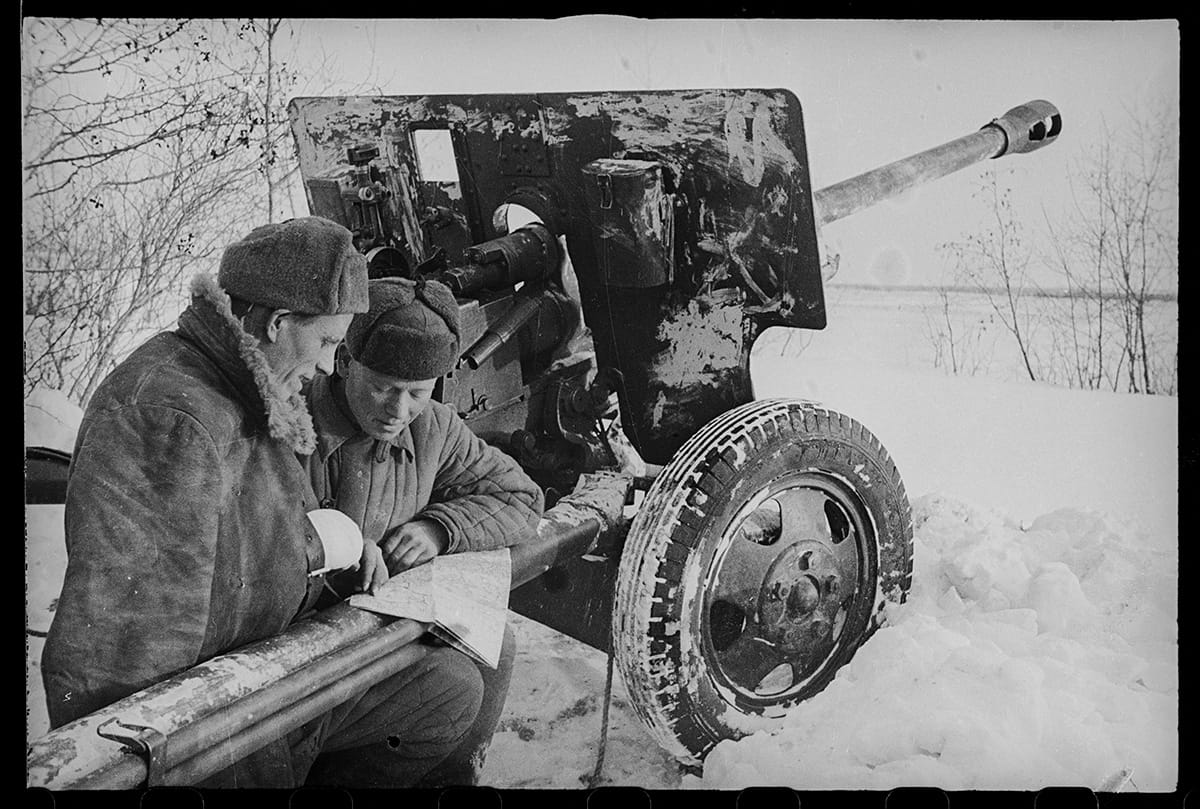
At a shooting location. A crew of 76.2 mm ZIS-3 cannon, 1942 model, firing at the enemy. The Kalinin front. Winter 1942-43
At a shooting location. A crew of 76.2 mm ZIS-3 cannon, 1942 model, firing at the enemy. The Kalinin front. Winter 1942-43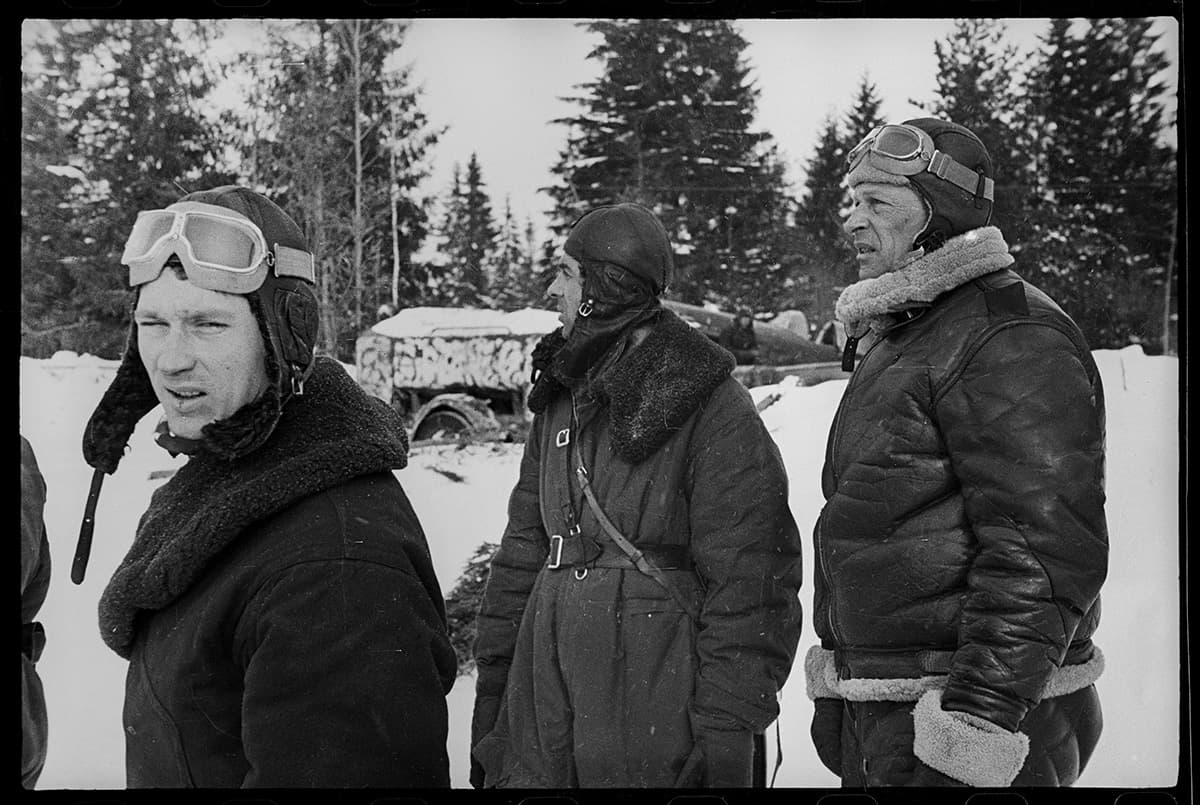
Commander of the Air Force of The Kalinin front M.M. Gromov (right). The Kalinin front, USSR. February 1942
Commander of the Air Force of The Kalinin front M.M. Gromov (right). The Kalinin front, USSR. February 1942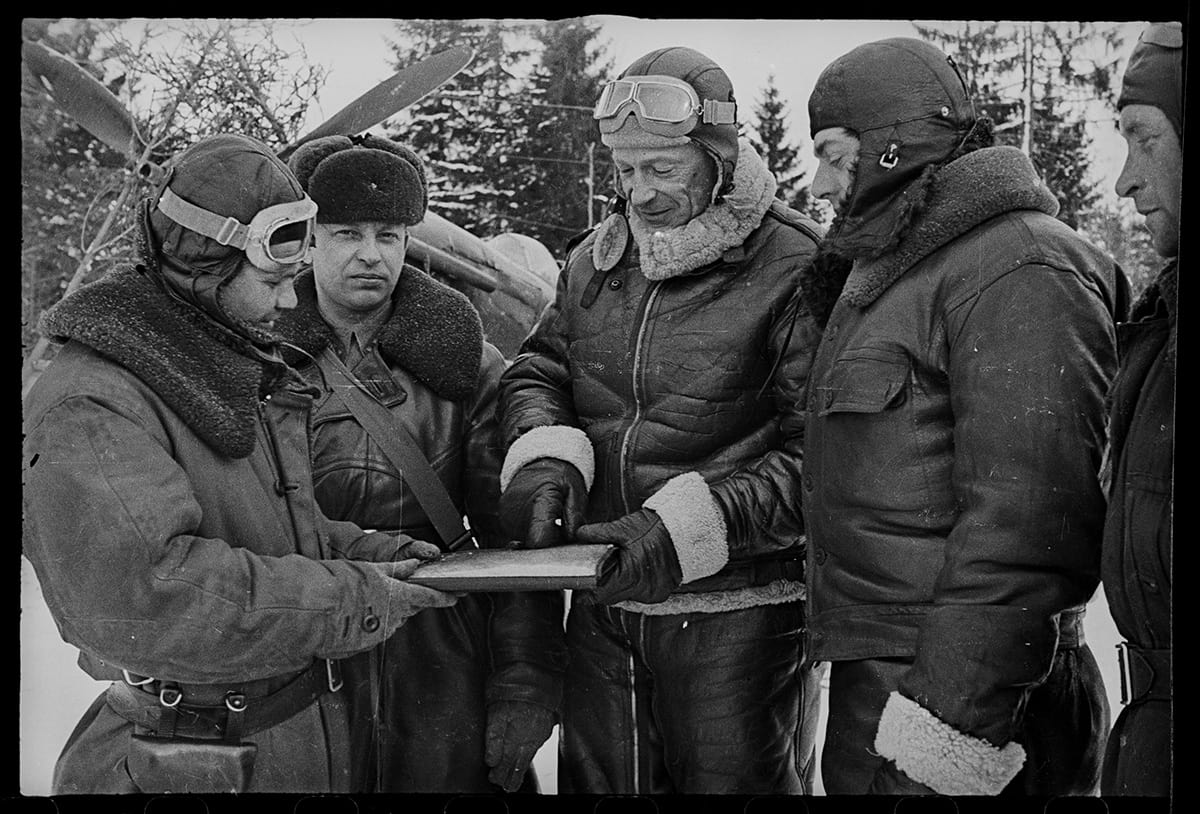
Colonel of the 31-mixed aviation division G.F. Baidukov (second left) and Commander of the Air Force of The Kalinin front M.M. Gromov (centre) and Deputy Commander of the Air Force of the Kalinin Front A.B. Yumashev (second right). The Kalinin front, USSR. February 1942
Colonel of the 31-mixed aviation division G.F. Baidukov (second left) and Commander of the Air Force of The Kalinin front M.M. Gromov (centre) and Deputy Commander of the Air Force of the Kalinin Front A.B. Yumashev (second right). The Kalinin front, USSR. February 1942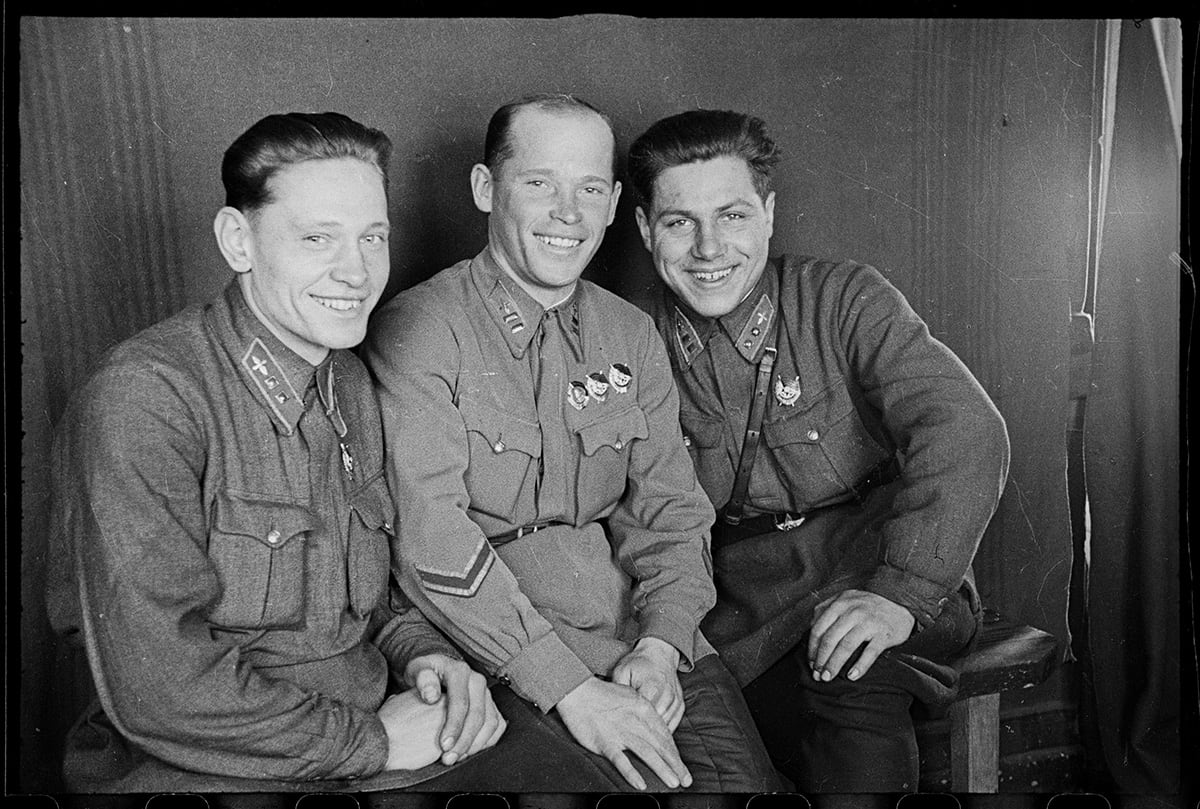
Soviet fighter pilots: S.F. Dolgushin, S.I. Timofeyev and S.V. Makarov. The Kalinin front, USSR. February 1942
Soviet fighter pilots: S.F. Dolgushin, S.I. Timofeyev and S.V. Makarov. The Kalinin front, USSR. February 1942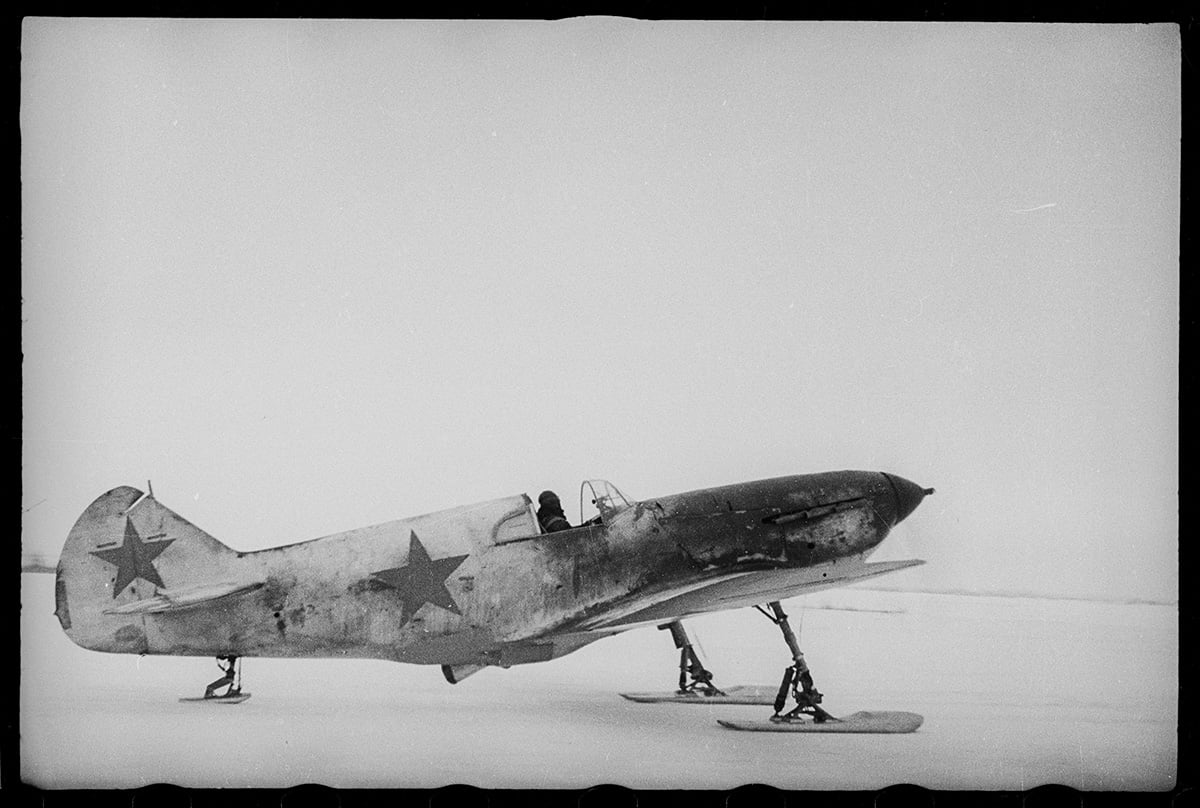
A LaGG-3 aircraft on a ski chassis in winter camouflage of the 5th Guards Fighter Regiment before taking off from an advanced airfield. The Kalinin front, USSR. February - March 1942
A LaGG-3 aircraft on a ski chassis in winter camouflage of the 5th Guards Fighter Regiment before taking off from an advanced airfield. The Kalinin front, USSR. February - March 1942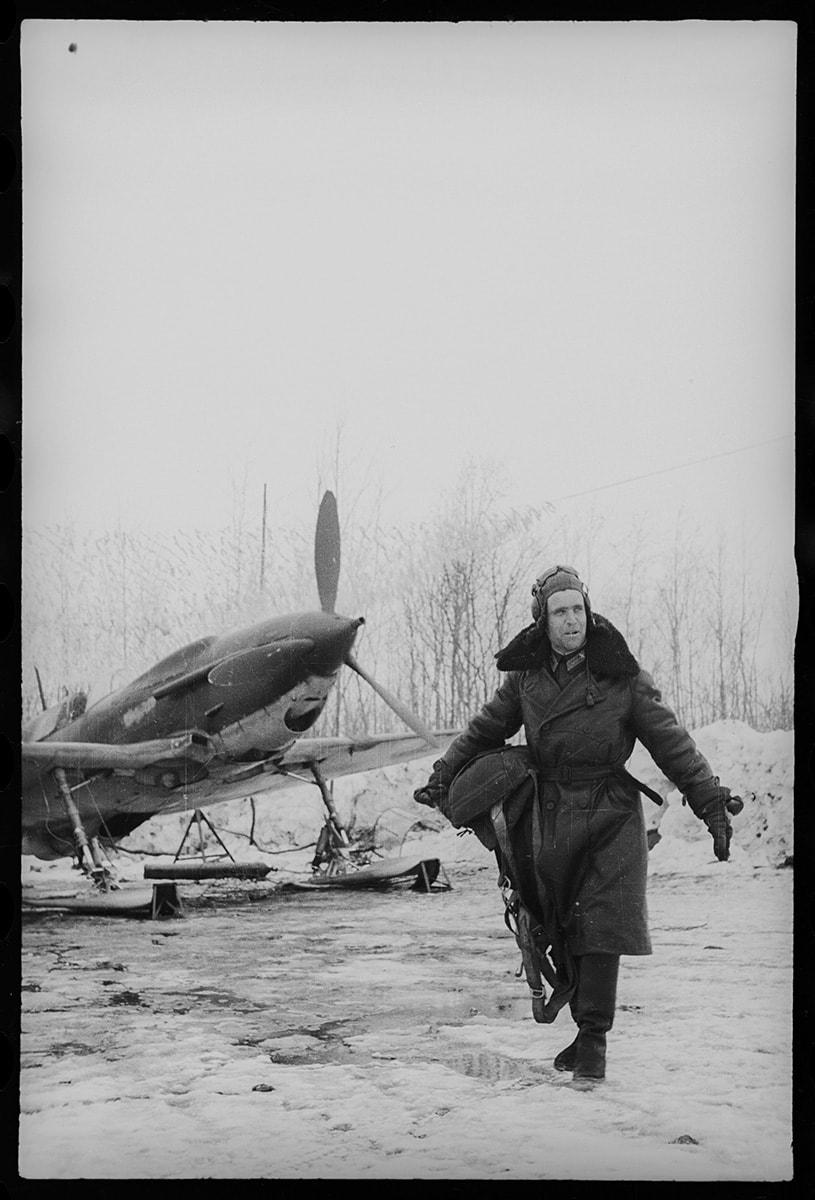
A fighter pilot with a parachute. LaGG-3 aircraft on a ski chassis is seen in the background. The Kalinin front, USSR. February - March 1942
A fighter pilot with a parachute. LaGG-3 aircraft on a ski chassis is seen in the background. The Kalinin front, USSR. February - March 1942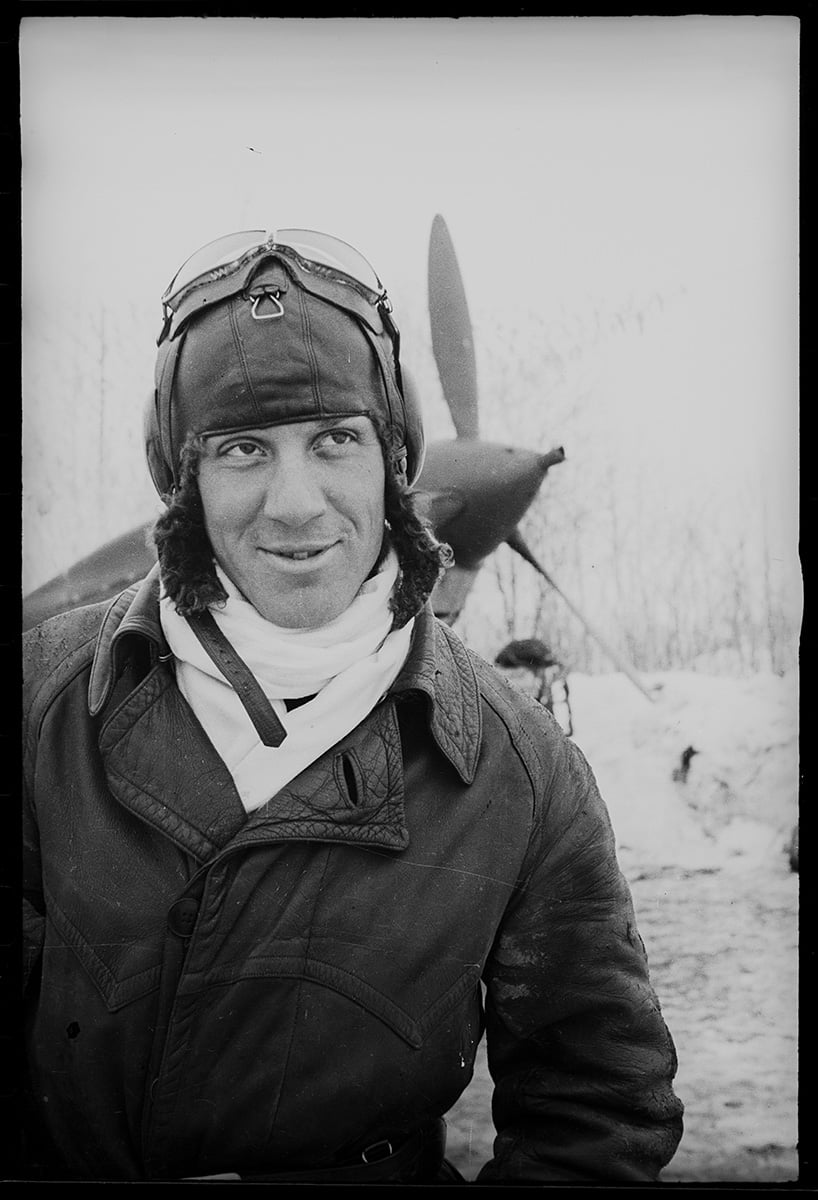
A fighter pilot with LaGG-3 aircraft in the background. The Kalinin front, USSR. February - March 1942
A fighter pilot with LaGG-3 aircraft in the background. The Kalinin front, USSR. February - March 1942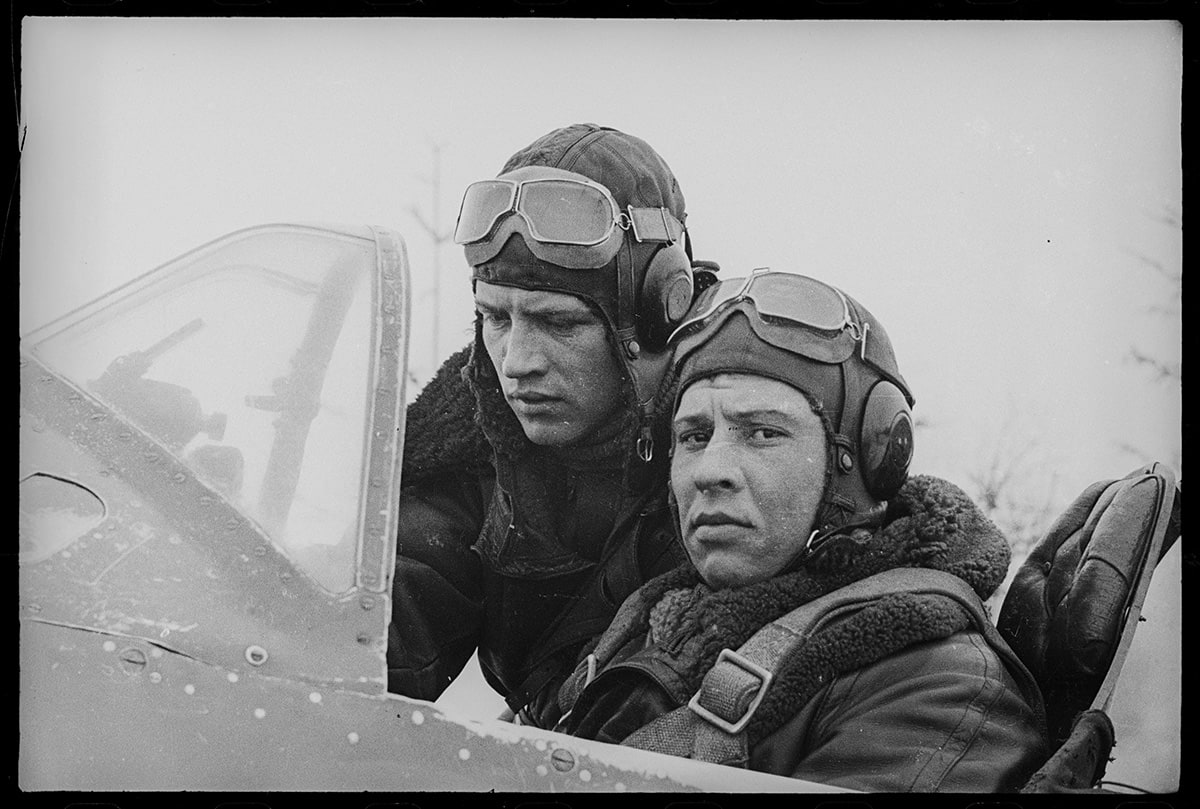
Preparing for take-off. A Soviet fighter pilot in the cockpit of a MiG-3 aircraft. The Kalinin front, USSR. February - March 1942
Preparing for take-off. A Soviet fighter pilot in the cockpit of a MiG-3 aircraft. The Kalinin front, USSR. February - March 1942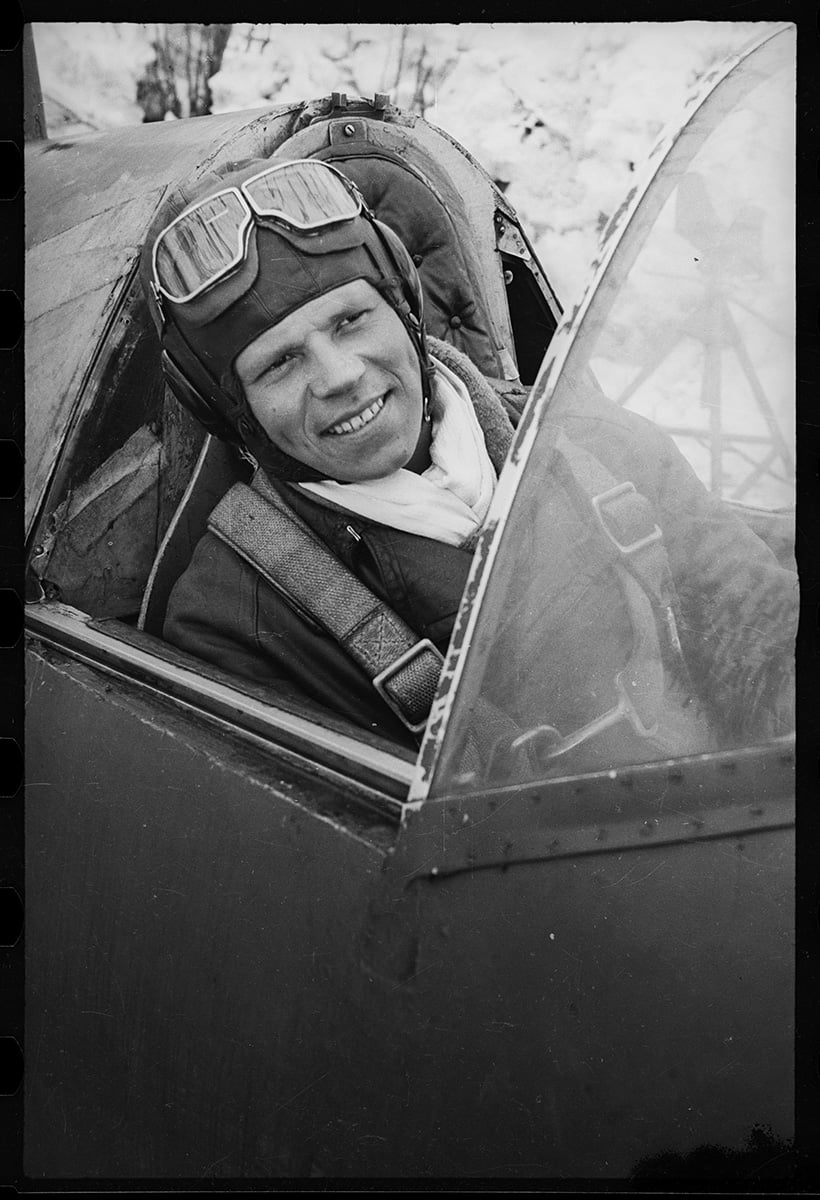
A fighter pilot before a flight in the cockpit of a LaGG-3 aeroplane. The Kalinin front, USSR. February - March 1942
A fighter pilot before a flight in the cockpit of a LaGG-3 aeroplane. The Kalinin front, USSR. February - March 1942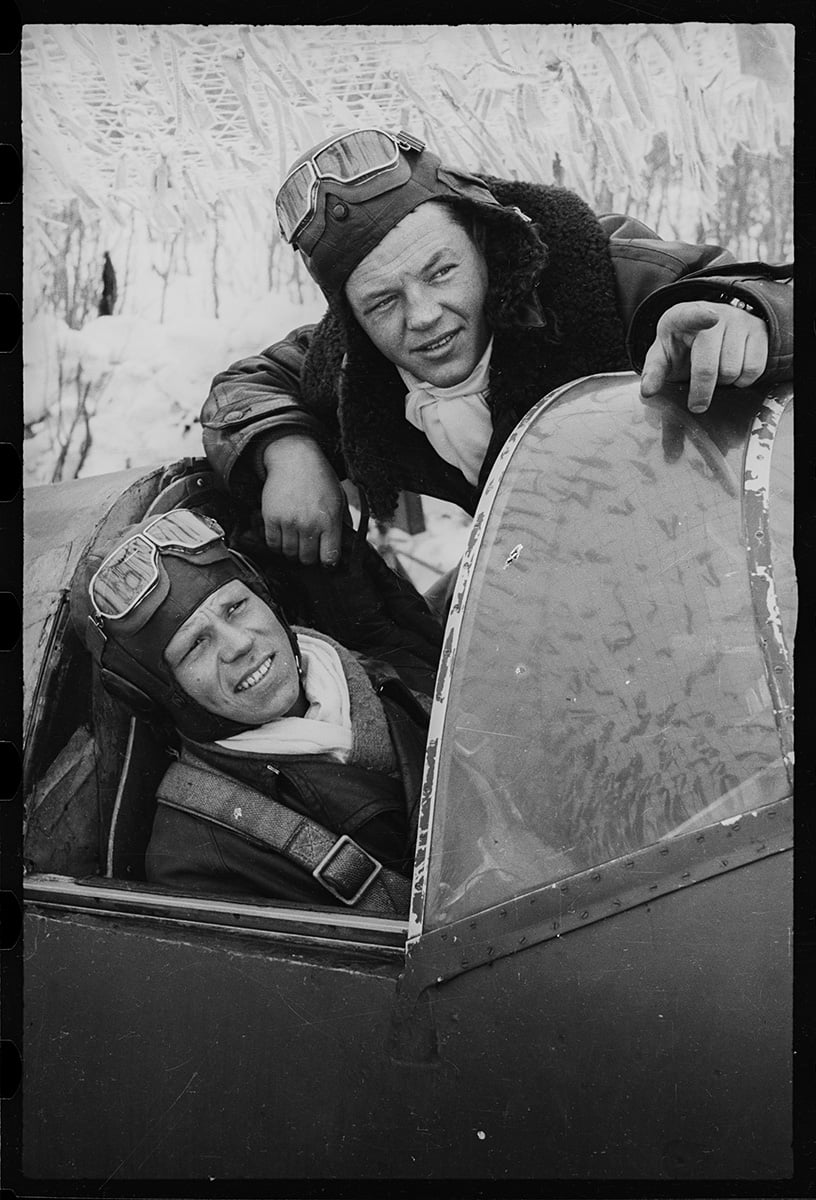
Fighter pilots before a flight in the cockpit of a LaGG-3 aeroplane. The Kalinin front, USSR. February - March 1942
Fighter pilots before a flight in the cockpit of a LaGG-3 aeroplane. The Kalinin front, USSR. February - March 1942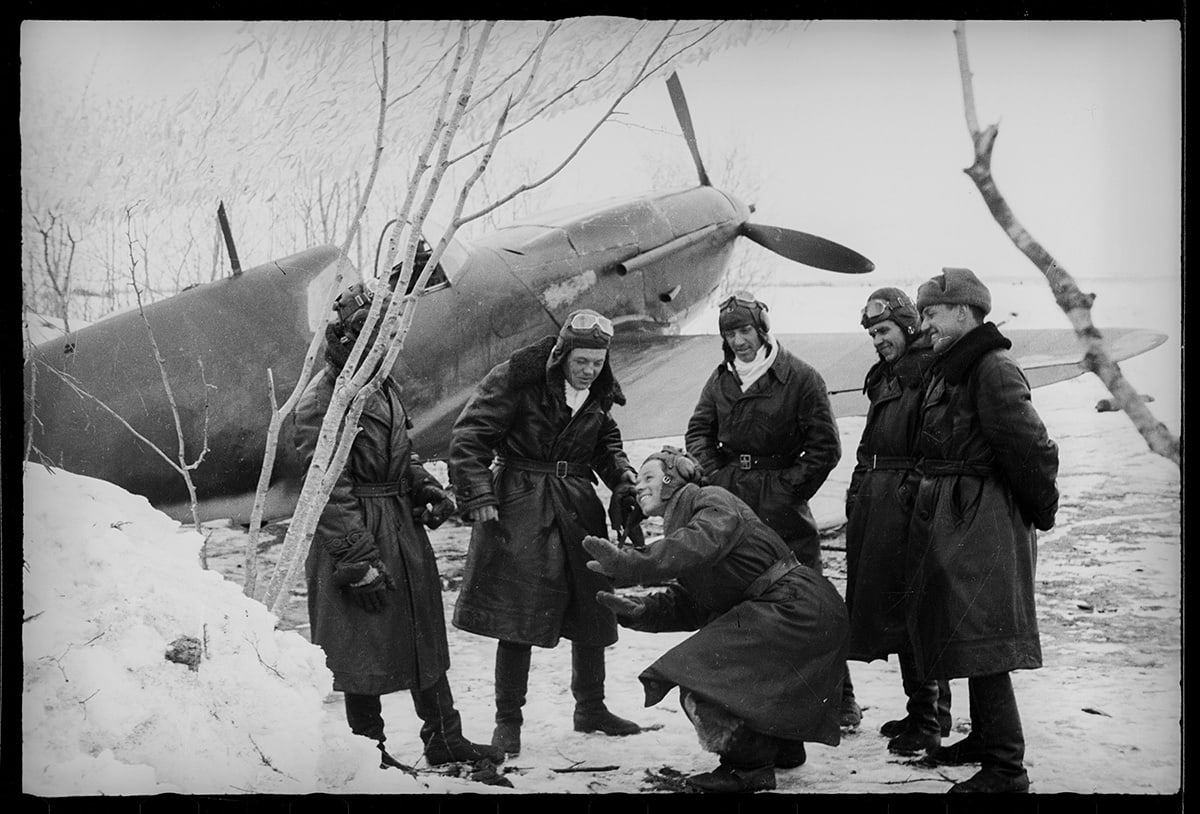
Soviet fighter pilots of the 5th Guards Aviation Regiment with LaGG-3 aircraft in the background. The Kalinin front, USSR. February - March 1942
Soviet fighter pilots of the 5th Guards Aviation Regiment with LaGG-3 aircraft in the background. The Kalinin front, USSR. February - March 1942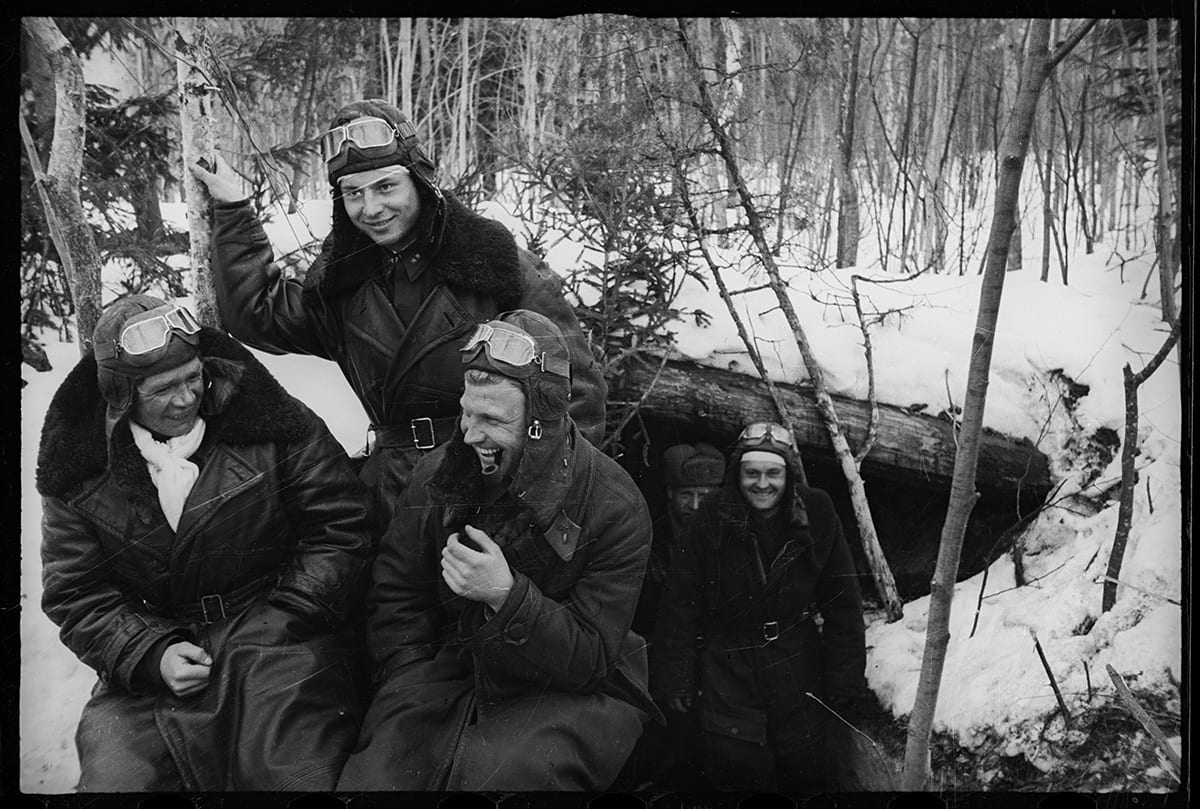
Soviet fighter pilots. The Kalinin front, USSR. February - March 1942
Soviet fighter pilots. The Kalinin front, USSR. February - March 1942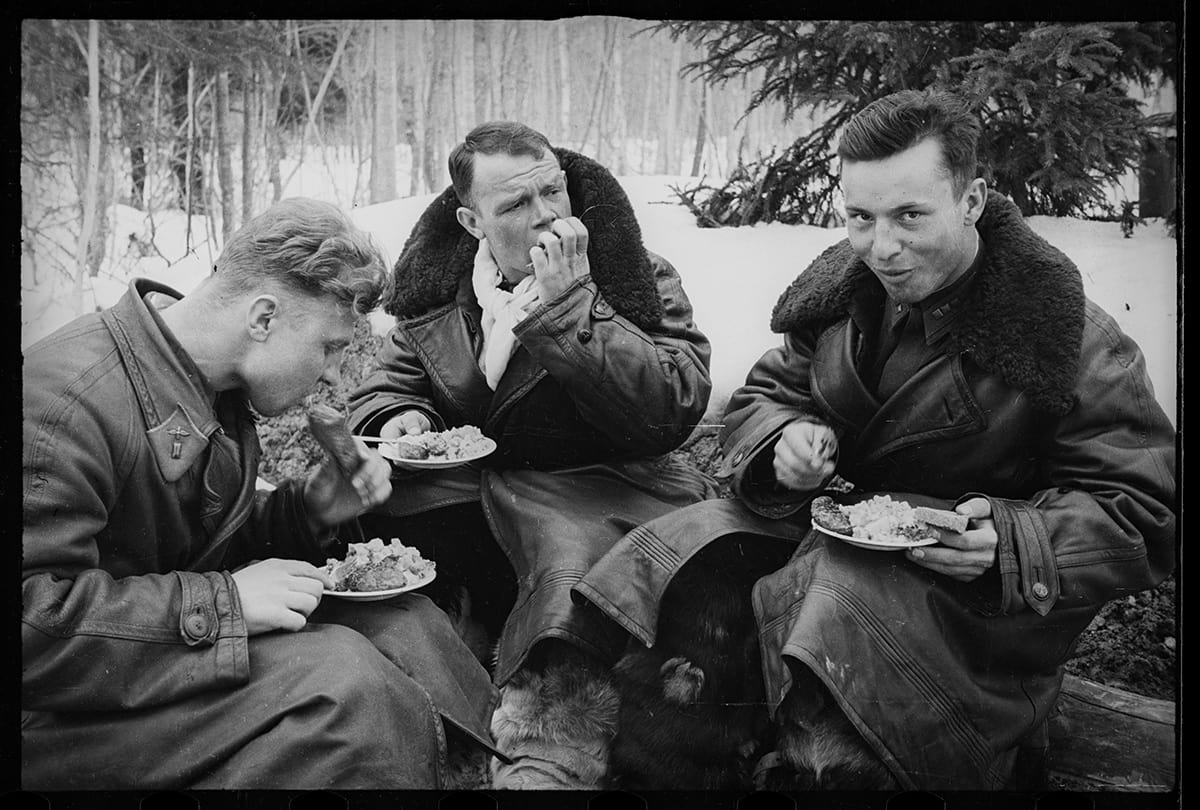
Soviet fighter pilots having lunch. The Kalinin front, USSR. February - March 1942
Soviet fighter pilots having lunch. The Kalinin front, USSR. February - March 1942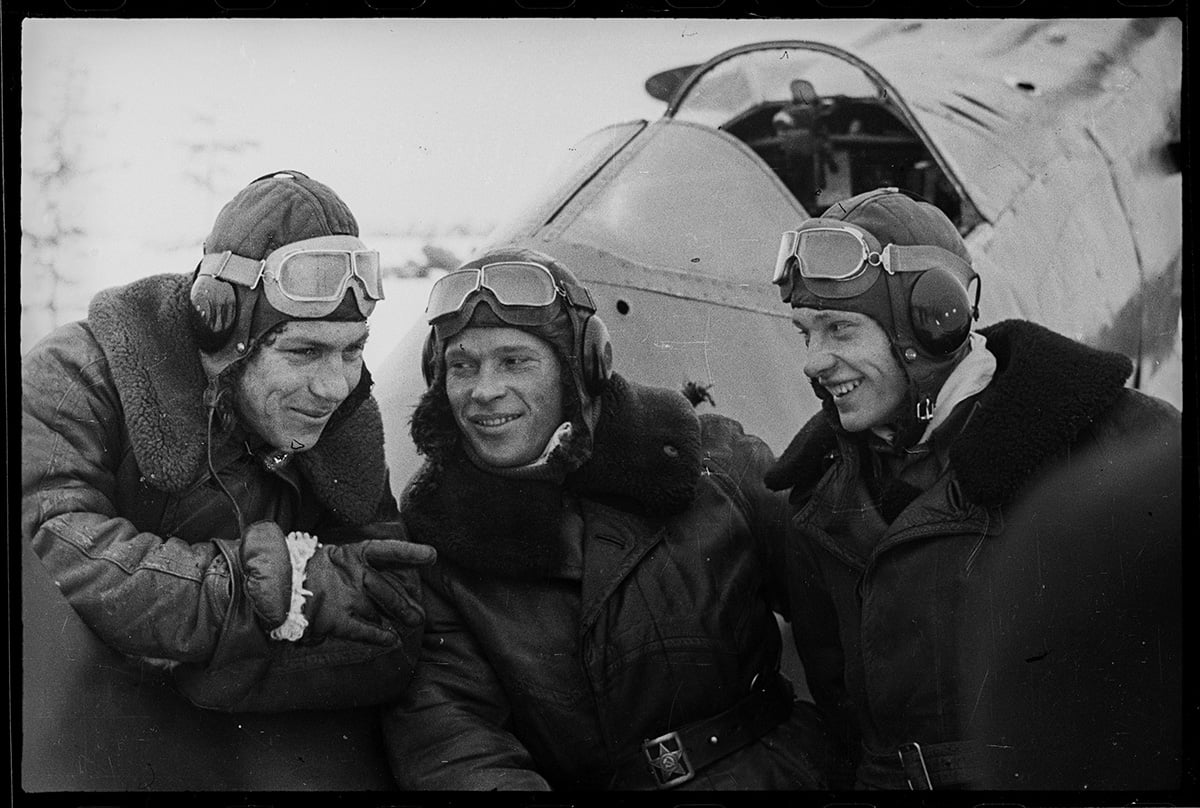
Three Sergeys: Makarov, Timofeyev and Dolgushin. Pilots of the 180-fighter aviation regiment at the MiG-3 aircraft. The Kalinin front, USSR. February 1942
Three Sergeys: Makarov, Timofeyev and Dolgushin. Pilots of the 180-fighter aviation regiment at the MiG-3 aircraft. The Kalinin front, USSR. February 1942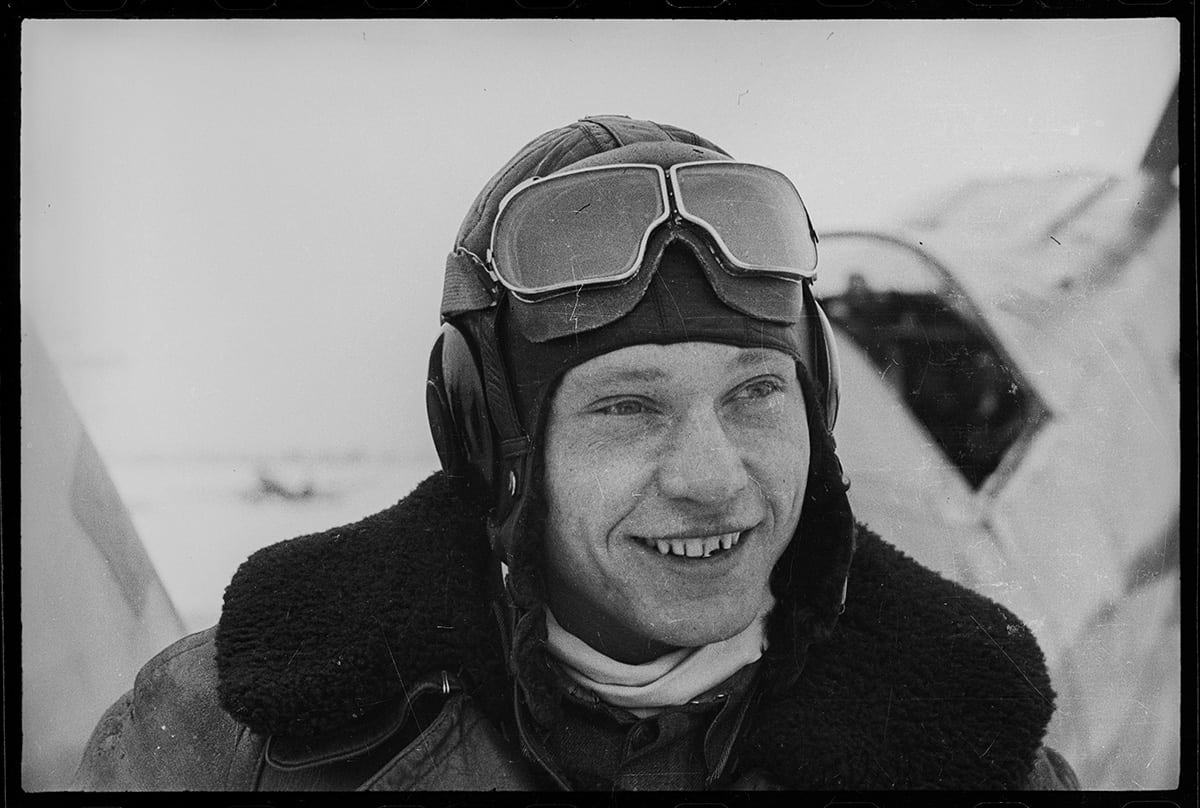
Lieutenant Sergei Dolgushin, commander of the 180th Fighter Aviation Regiment of the 46th Aviation Division, with a MiG-3 in the background. The Kalinin Front, USSR. February 1942.
Lieutenant Sergei Dolgushin, commander of the 180th Fighter Aviation Regiment of the 46th Aviation Division, with a MiG-3 in the background. The Kalinin Front, USSR. February 1942.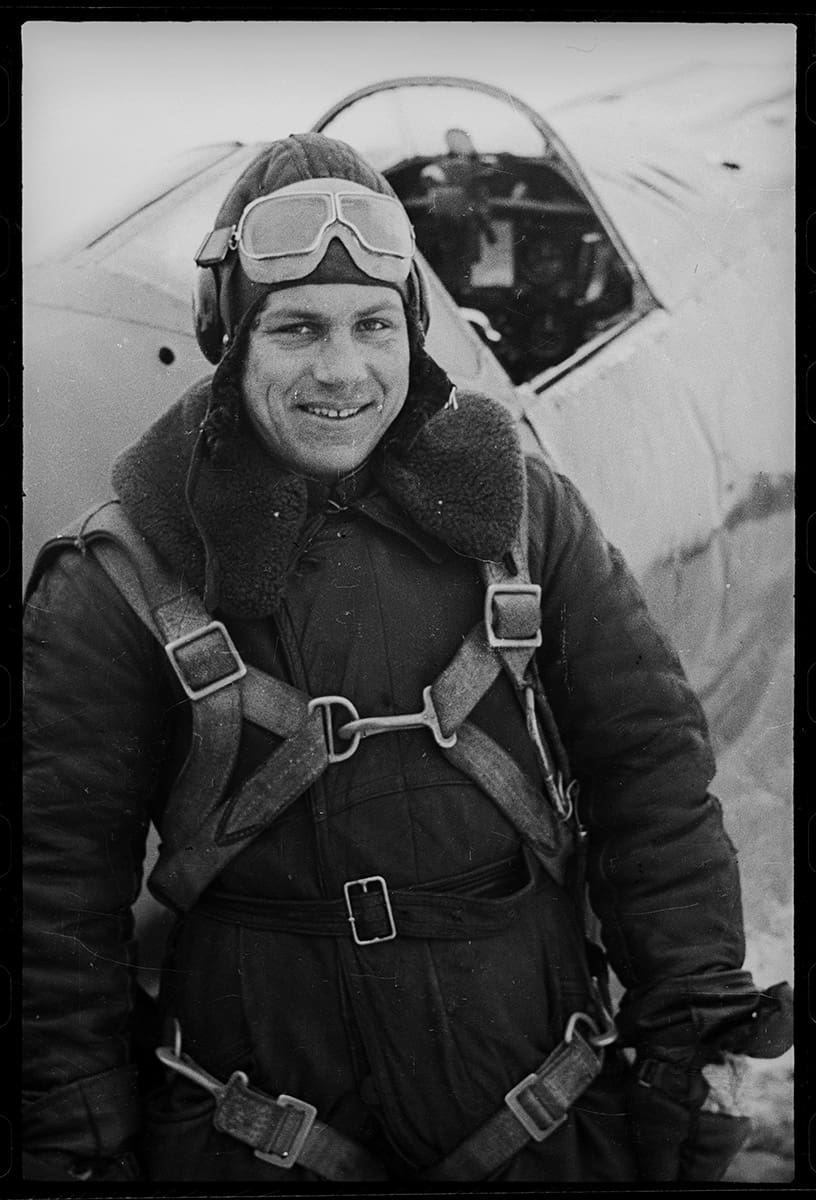
Lieutenant S.V. Makarov, commander of the 180-fighter aviation regiment, at the MiG-3 aircraft. 10 February 1942. Lieutenant S.V. Makarov was killed in aerial combat. The Kalinin front, USSR. February 1942.
Lieutenant S.V. Makarov, commander of the 180-fighter aviation regiment, at the MiG-3 aircraft. 10 February 1942. Lieutenant S.V. Makarov was killed in aerial combat. The Kalinin front, USSR. February 1942.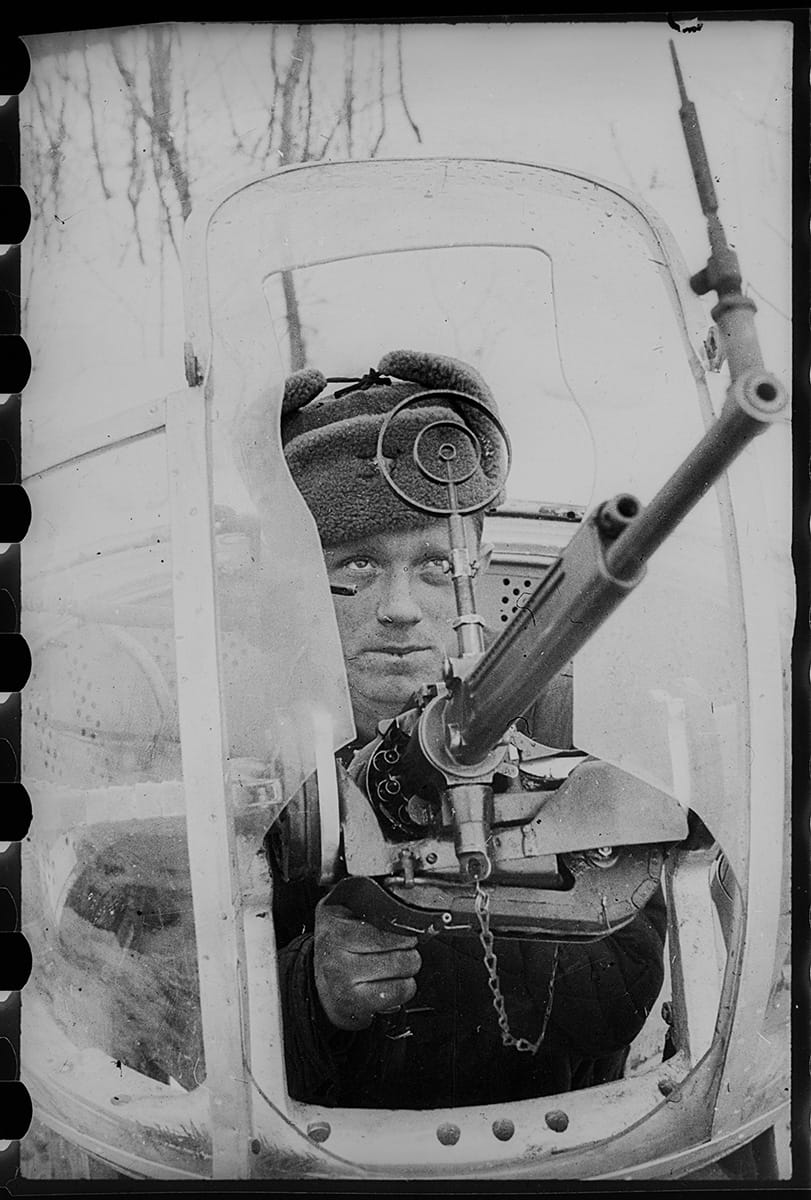
One of the best Weapons Technicians of the 5th Fighter Regiment M.A.Mikhailov, awarded with the medal "For Combat Merits", checks the work of a ShKAS machine gun. The Kalinin front, USSR. February - March 1942
One of the best Weapons Technicians of the 5th Fighter Regiment M.A.Mikhailov, awarded with the medal "For Combat Merits", checks the work of a ShKAS machine gun. The Kalinin front, USSR. February - March 1942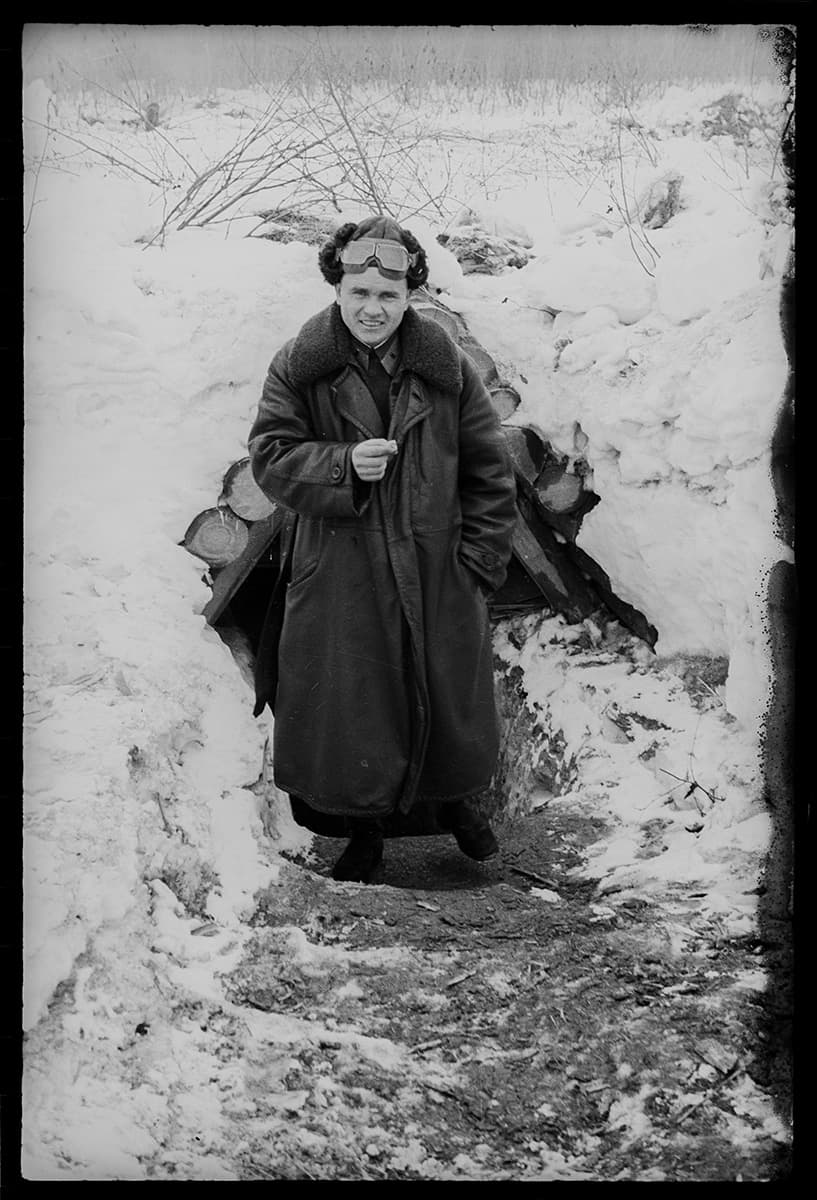
A Soviet fighter pilot leaving a dugout. The Kalinin front, USSR. February - March 1942
A Soviet fighter pilot leaving a dugout. The Kalinin front, USSR. February - March 1942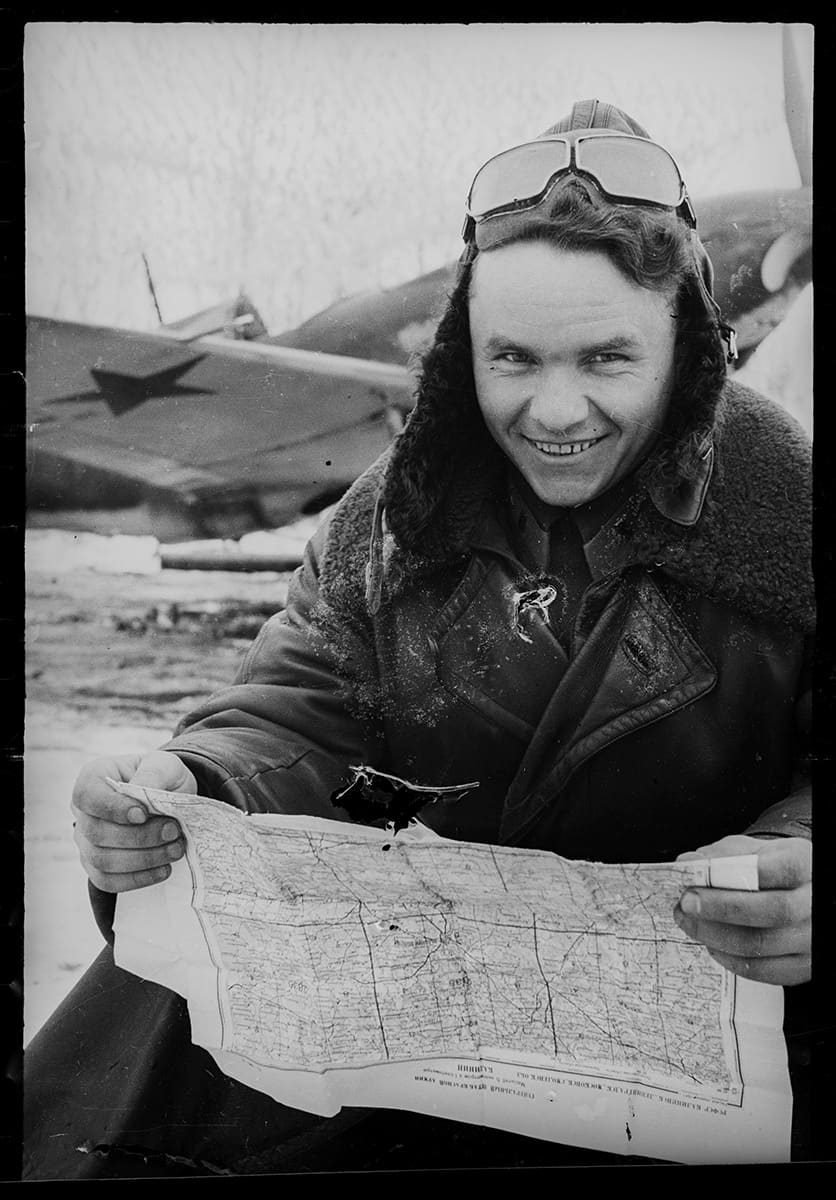
A fighter pilot looking at a map of Kalinin before a combat flight with LaGG-3 aircraft in the background. The Kalinin front, USSR. February - March 1942
A fighter pilot looking at a map of Kalinin before a combat flight with LaGG-3 aircraft in the background. The Kalinin front, USSR. February - March 1942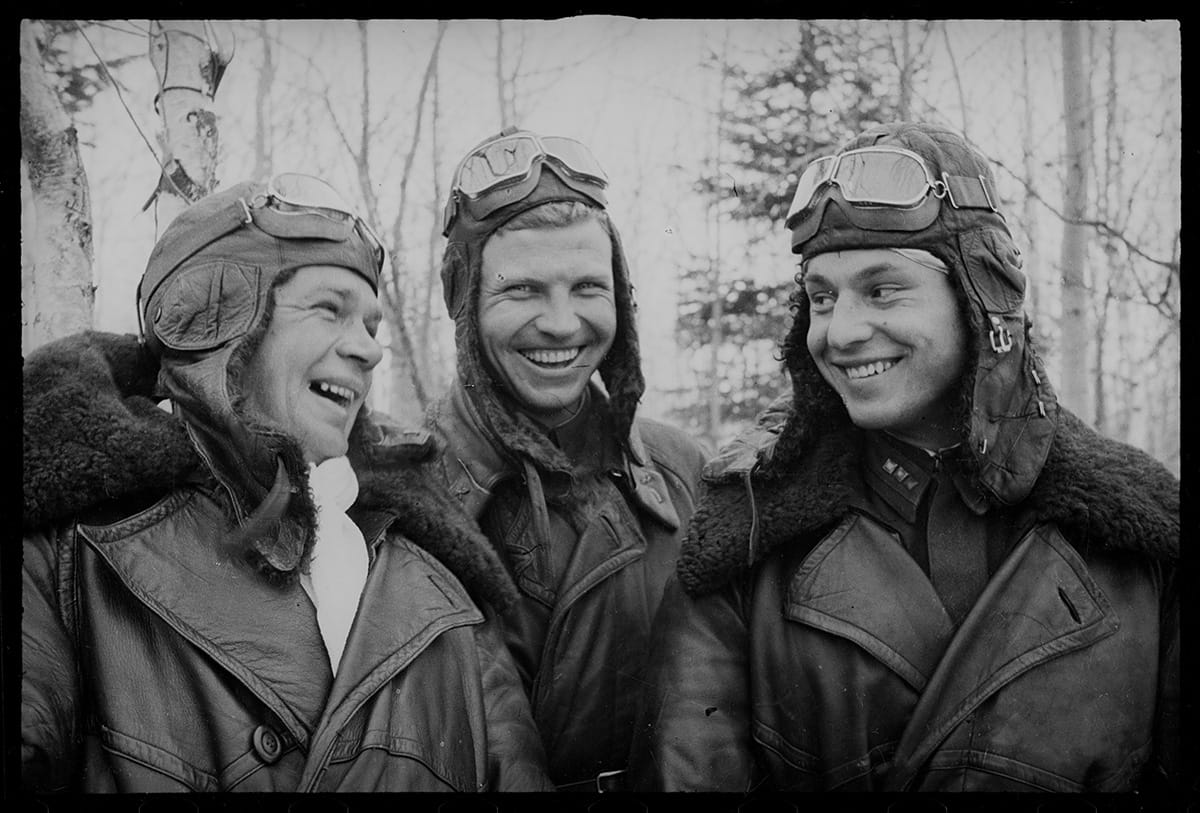
Soviet fighter pilots. The Kalinin front, USSR. February - March 1942
Soviet fighter pilots. The Kalinin front, USSR. February - March 1942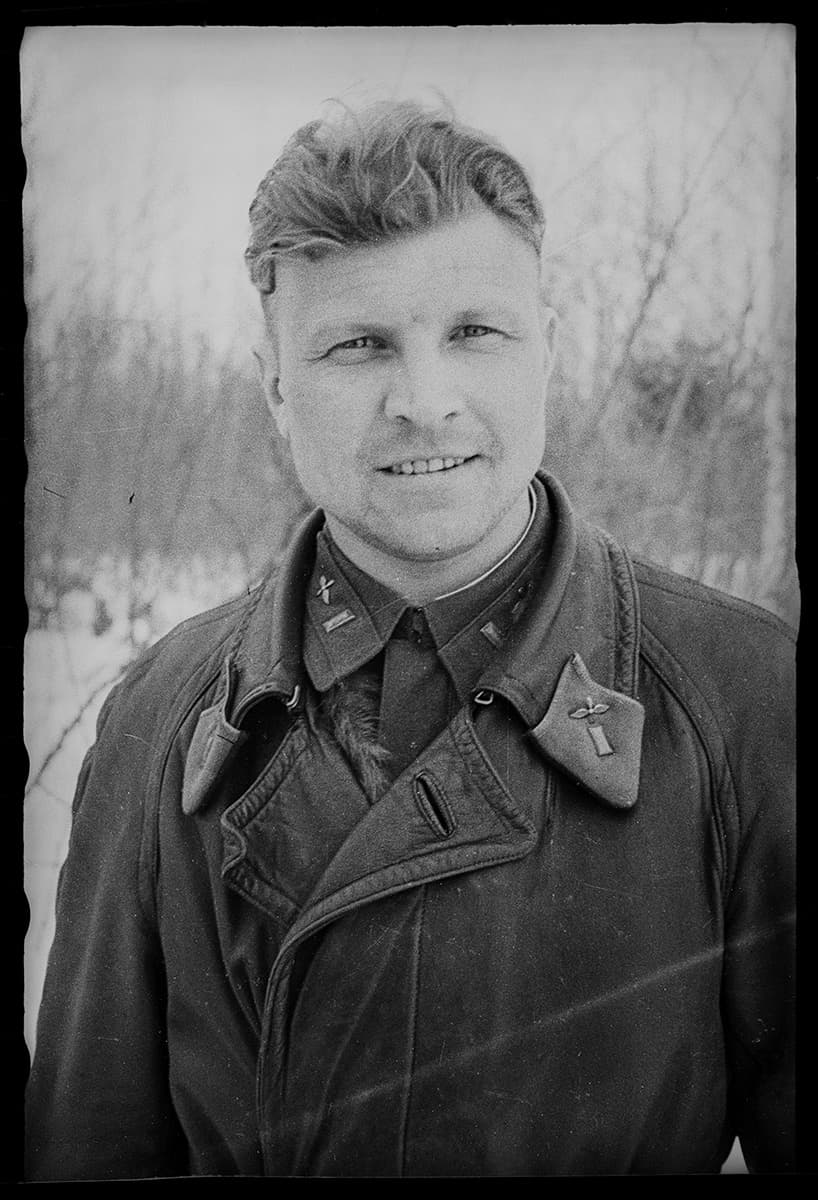
Portrait of a Soviet fighter pilot. The Kalinin front, USSR. February - March 1942
Portrait of a Soviet fighter pilot. The Kalinin front, USSR. February - March 1942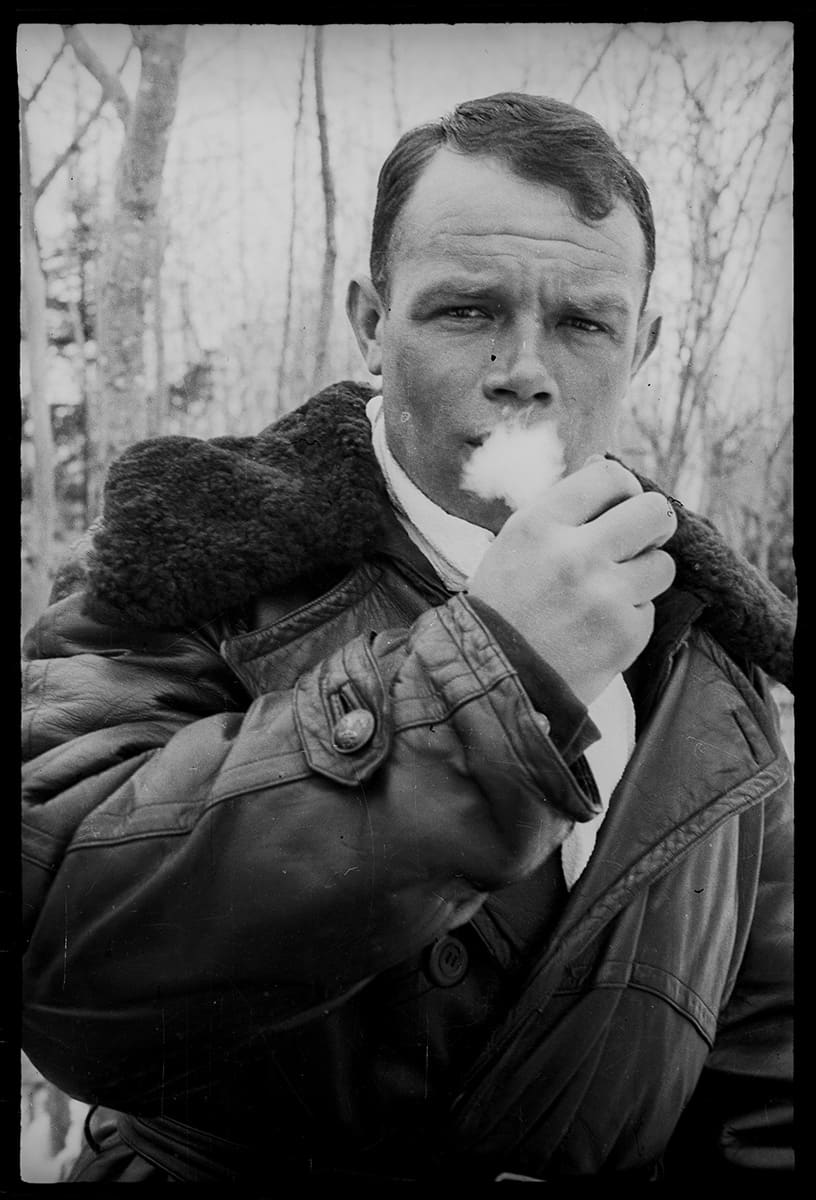
Portrait of a Soviet fighter pilot. The Kalinin front, USSR. February - March 1942
Portrait of a Soviet fighter pilot. The Kalinin front, USSR. February - March 1942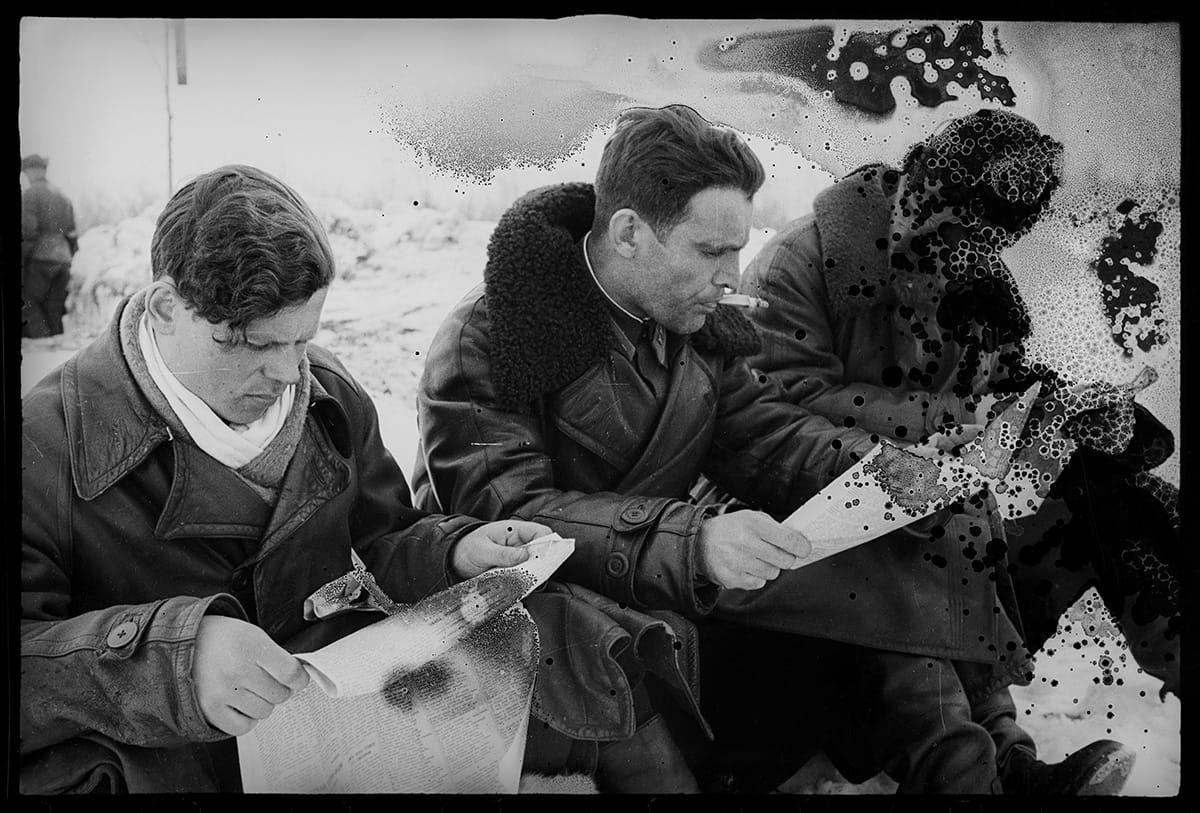
Soviet fighter pilots reading a newspaper. The Kalinin front, USSR. February - March 1942 (negative damaged by mould)
Soviet fighter pilots reading a newspaper. The Kalinin front, USSR. February - March 1942 (negative damaged by mould)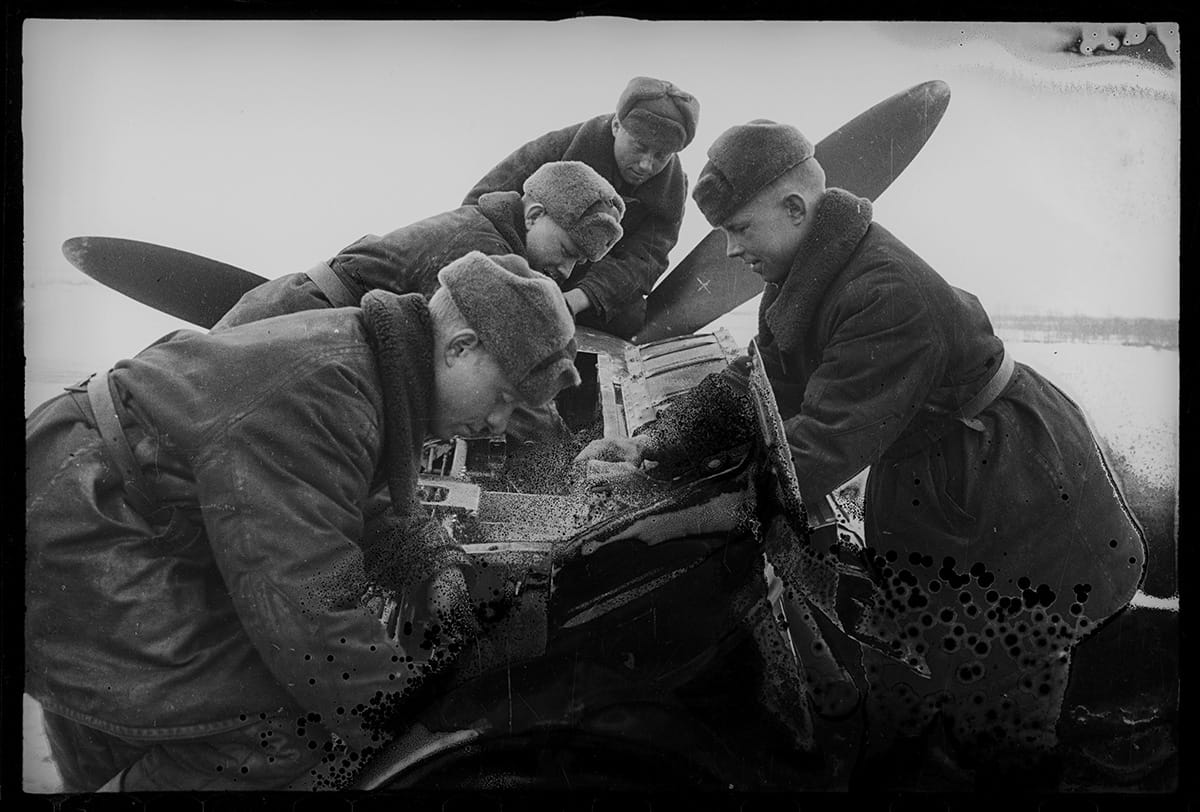
Aircraft technicians servicing an aircraft. The Kalinin front, USSR. February - March 1942 (negative damaged by mould)
Aircraft technicians servicing an aircraft. The Kalinin front, USSR. February - March 1942 (negative damaged by mould)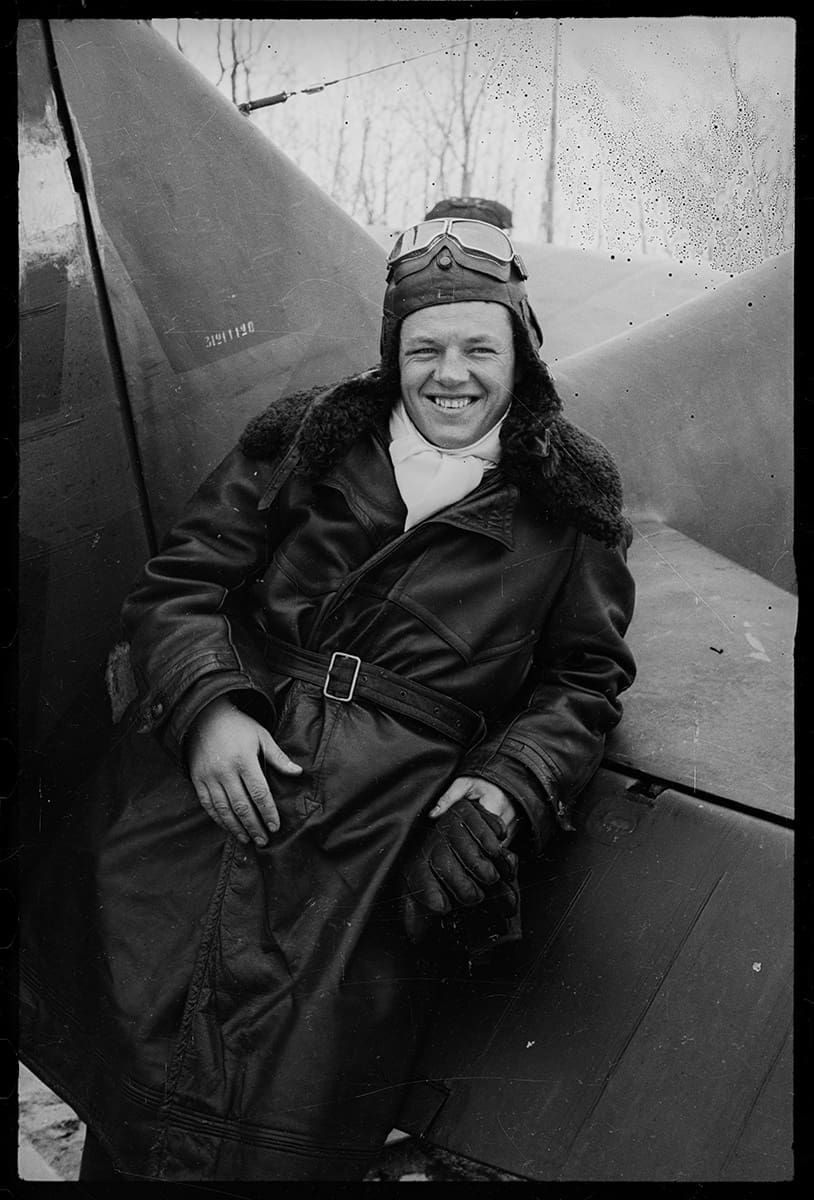
Portrait of a Soviet fighter pilot. The Kalinin front, USSR. February - March 1942
Portrait of a Soviet fighter pilot. The Kalinin front, USSR. February - March 1942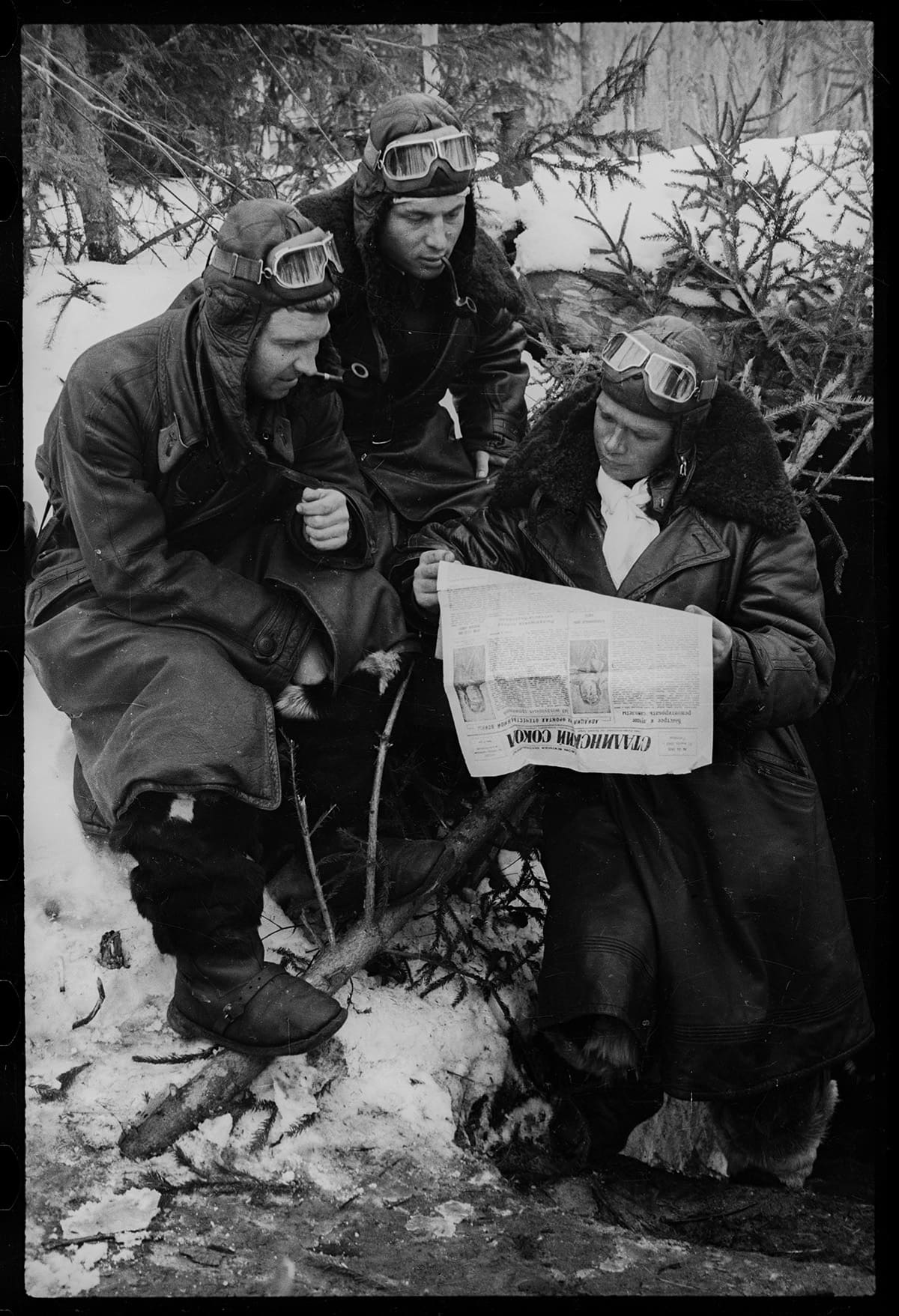
Soviet fighter pilots reading the latest issue of the newspaper "Stalinsky Sokol" ("Stalin's Falcon") N34 (83) March 1942. The Kalinin front, USSR. March 1942
Soviet fighter pilots reading the latest issue of the newspaper "Stalinsky Sokol" ("Stalin's Falcon") N34 (83) March 1942. The Kalinin front, USSR. March 1942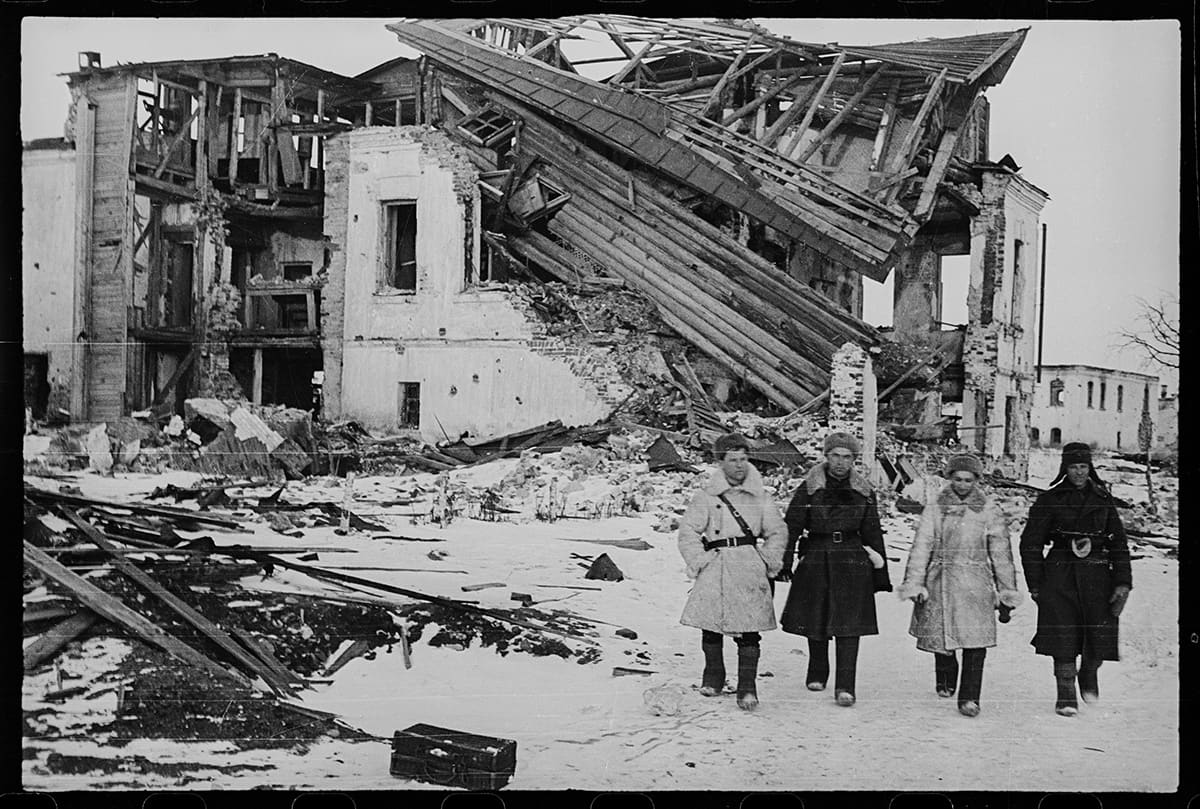
On the street of liberated Rzhev. Rzhev, The Kalinin front. March 1943
On the street of liberated Rzhev. Rzhev, The Kalinin front. March 1943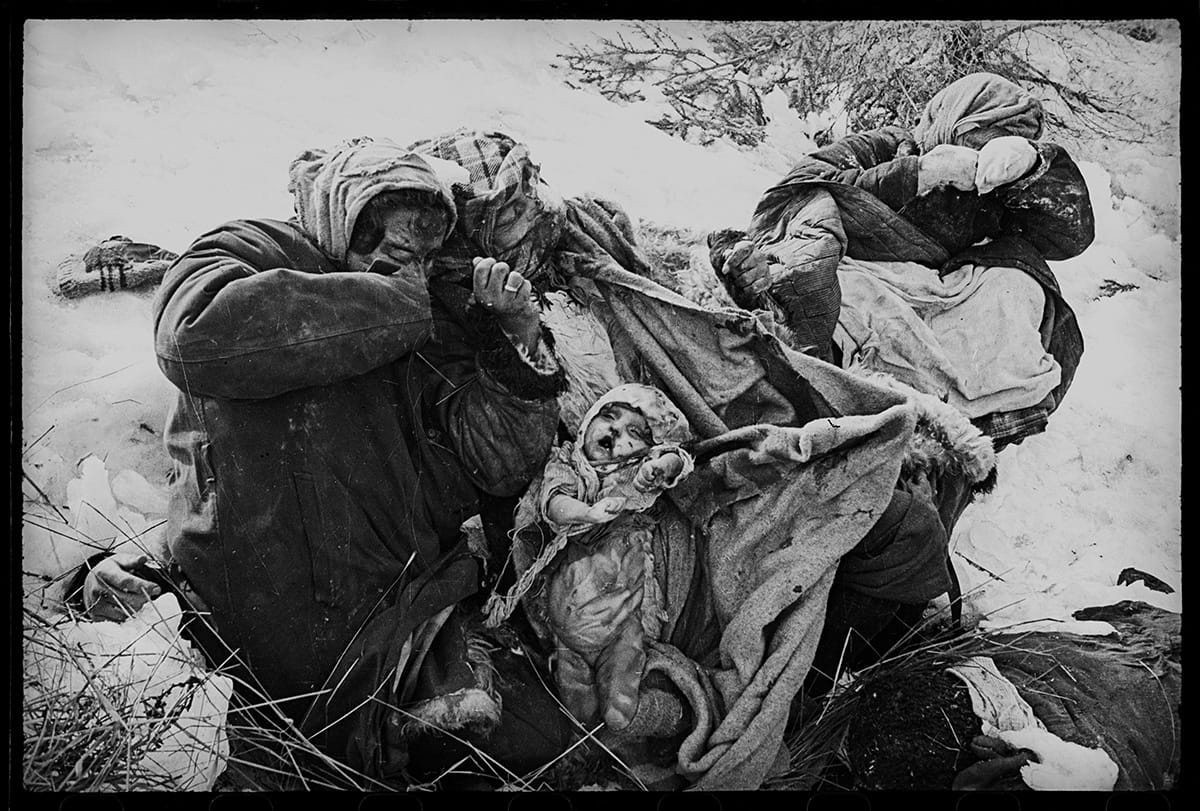
Atrocities. Bodies of murdered civilians in liberated Rzhev. Rzhev, The Kalinin front. March 1943
Atrocities. Bodies of murdered civilians in liberated Rzhev. Rzhev, The Kalinin front. March 1943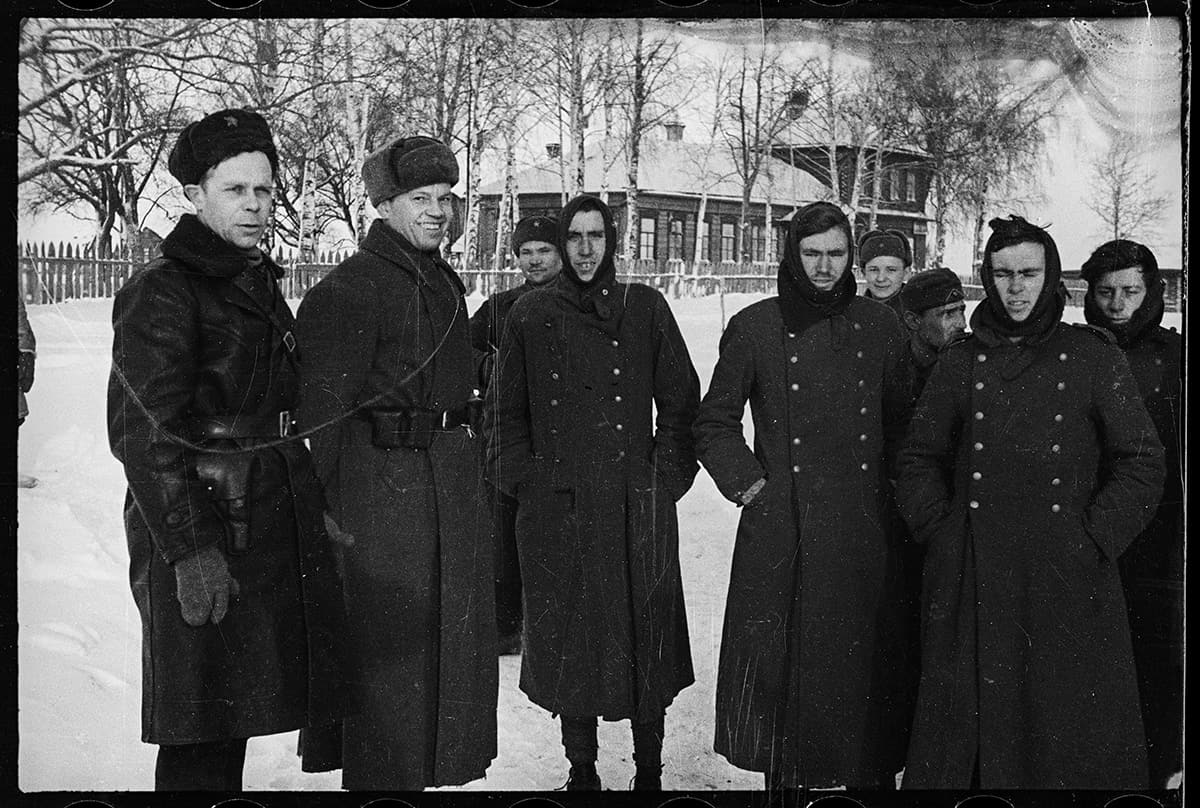
German prisoners in a liberated village. The Kalinin front. 1942
German prisoners in a liberated village. The Kalinin front. 1942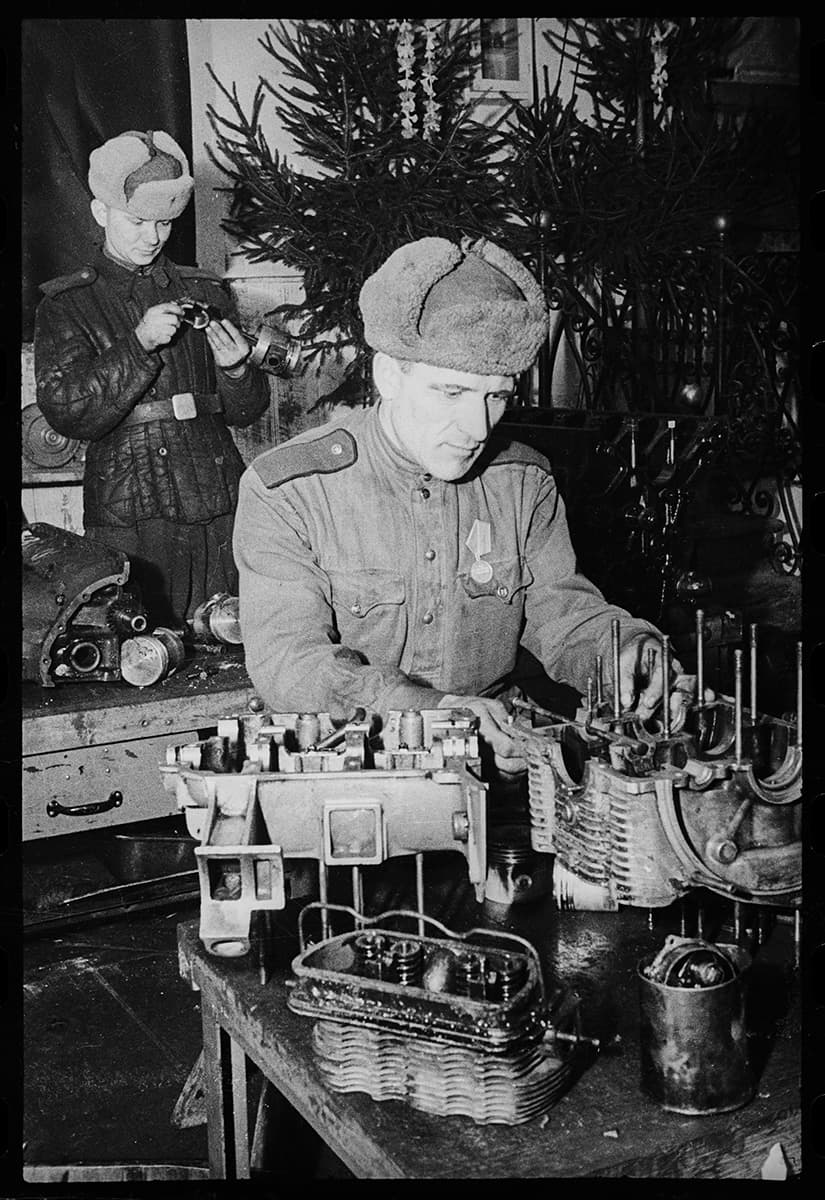
Red Army soldiers repairing an engine (with the Christma tree in the background). 1943-45
Red Army soldiers repairing an engine (with the Christma tree in the background). 1943-45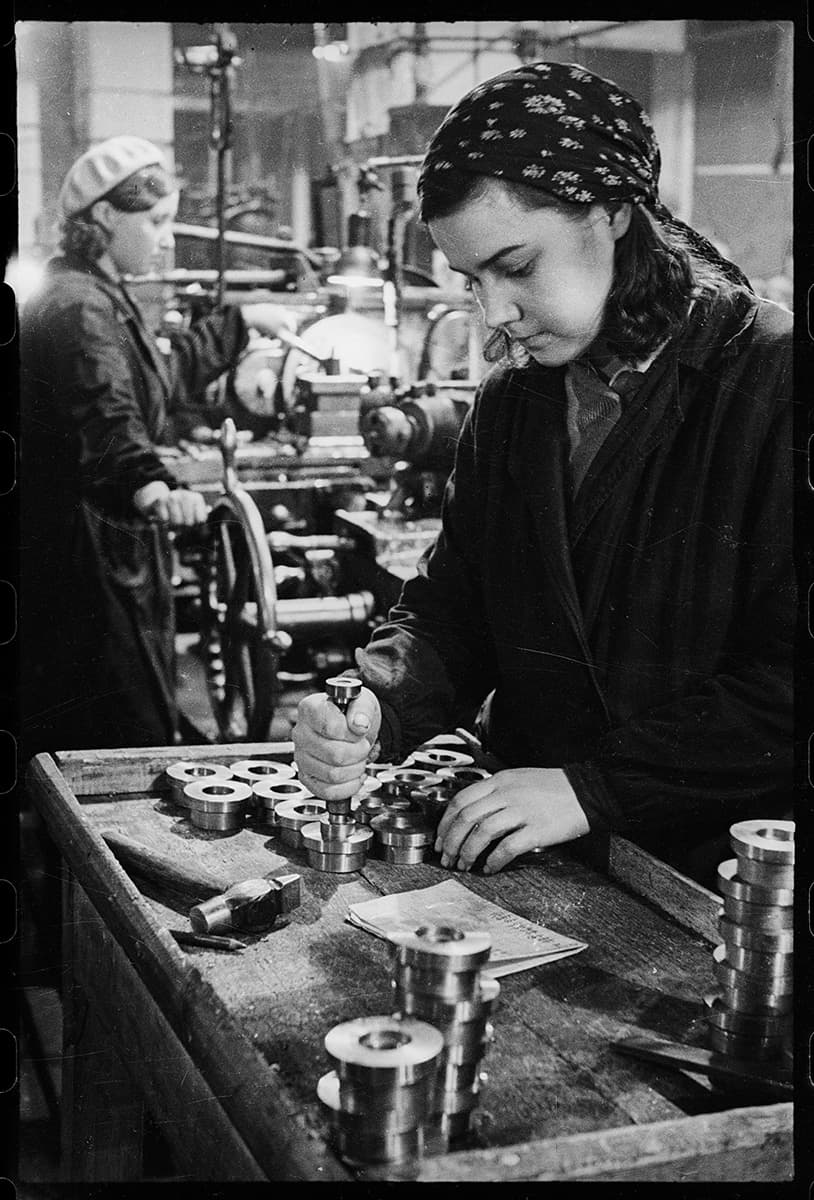
Work on the home front at the N plant in Moscow. Moscow, USSR. 1941-42
Work on the home front at the N plant in Moscow. Moscow, USSR. 1941-42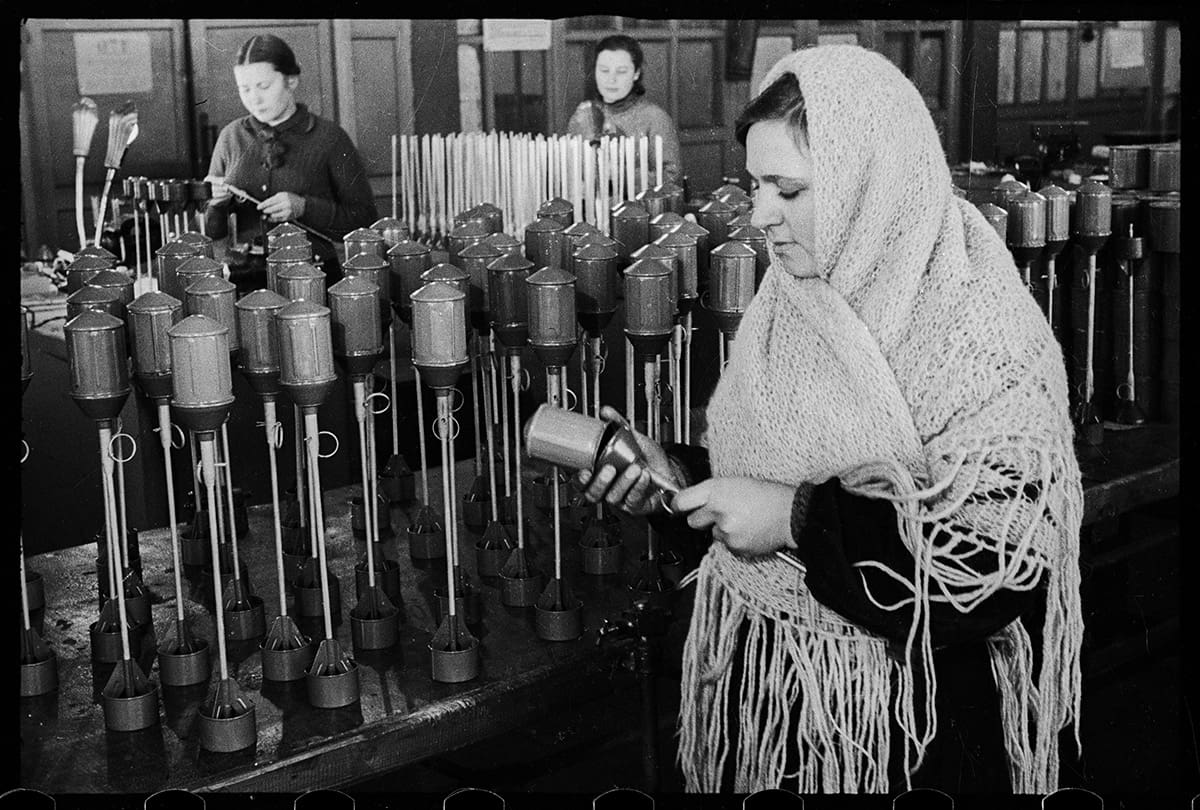
Work in the home front at the N plant in Moscow. Prepare ammunition. Women workers assemble VPGS-41 rifle grenades. Moscow, USSR. 1942
Work in the home front at the N plant in Moscow. Prepare ammunition. Women workers assemble VPGS-41 rifle grenades. Moscow, USSR. 1942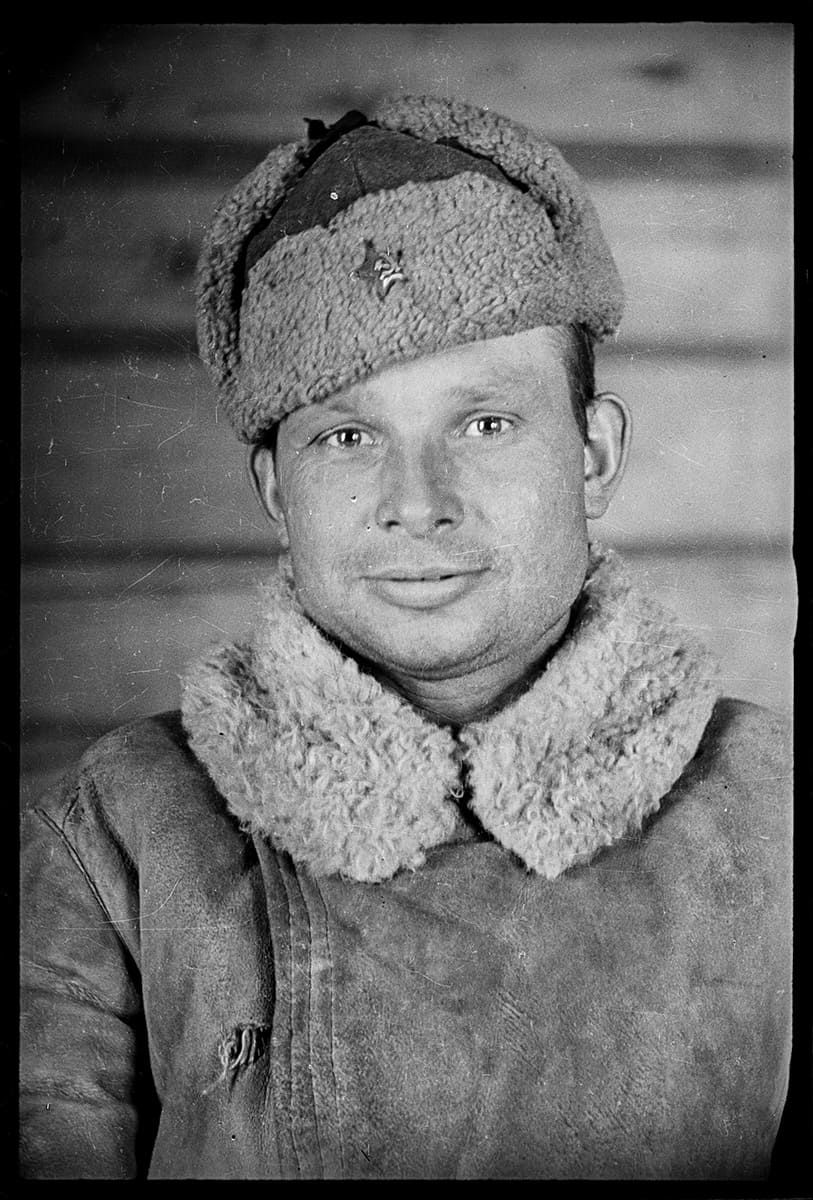
Portrait of a Red Army soldier. The Kalinin front. Winter of 1942-43
Portrait of a Red Army soldier. The Kalinin front. Winter of 1942-43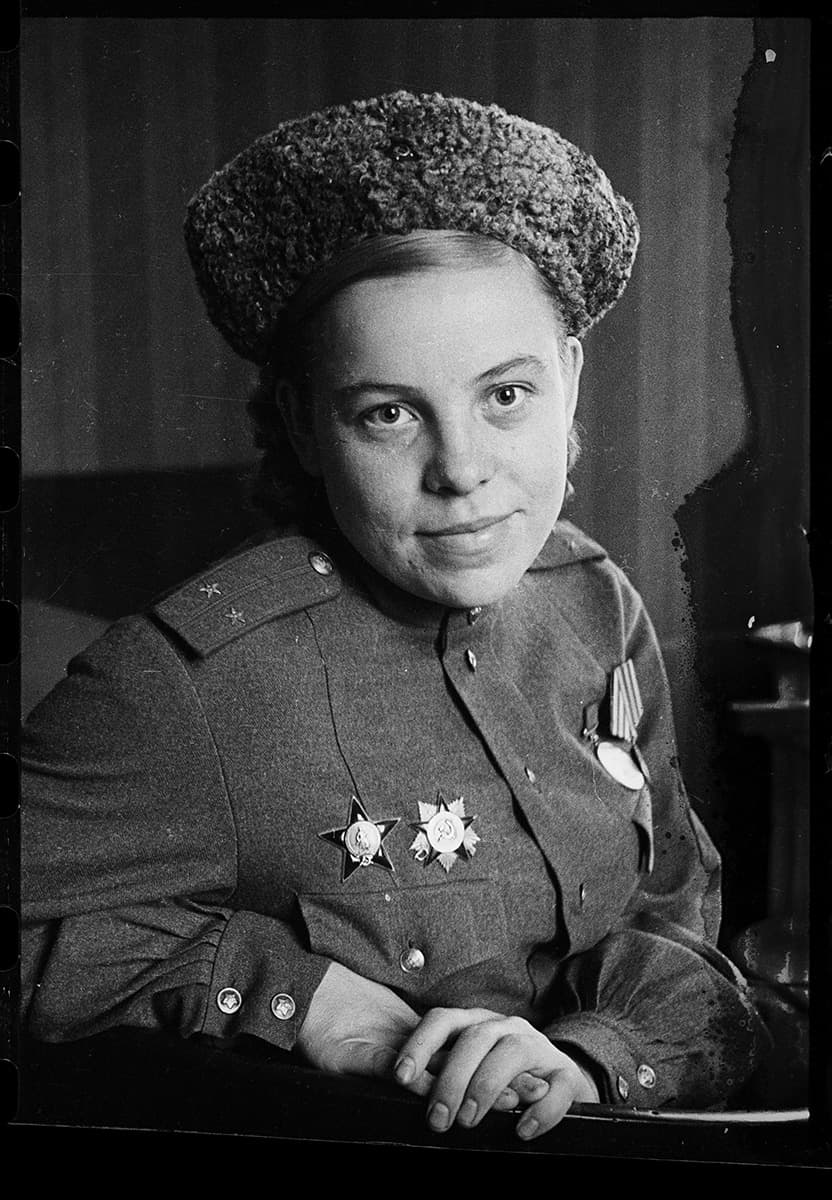
Portrait of a Red Army female in the rank of lieutenant. 1943-45
Portrait of a Red Army female in the rank of lieutenant. 1943-45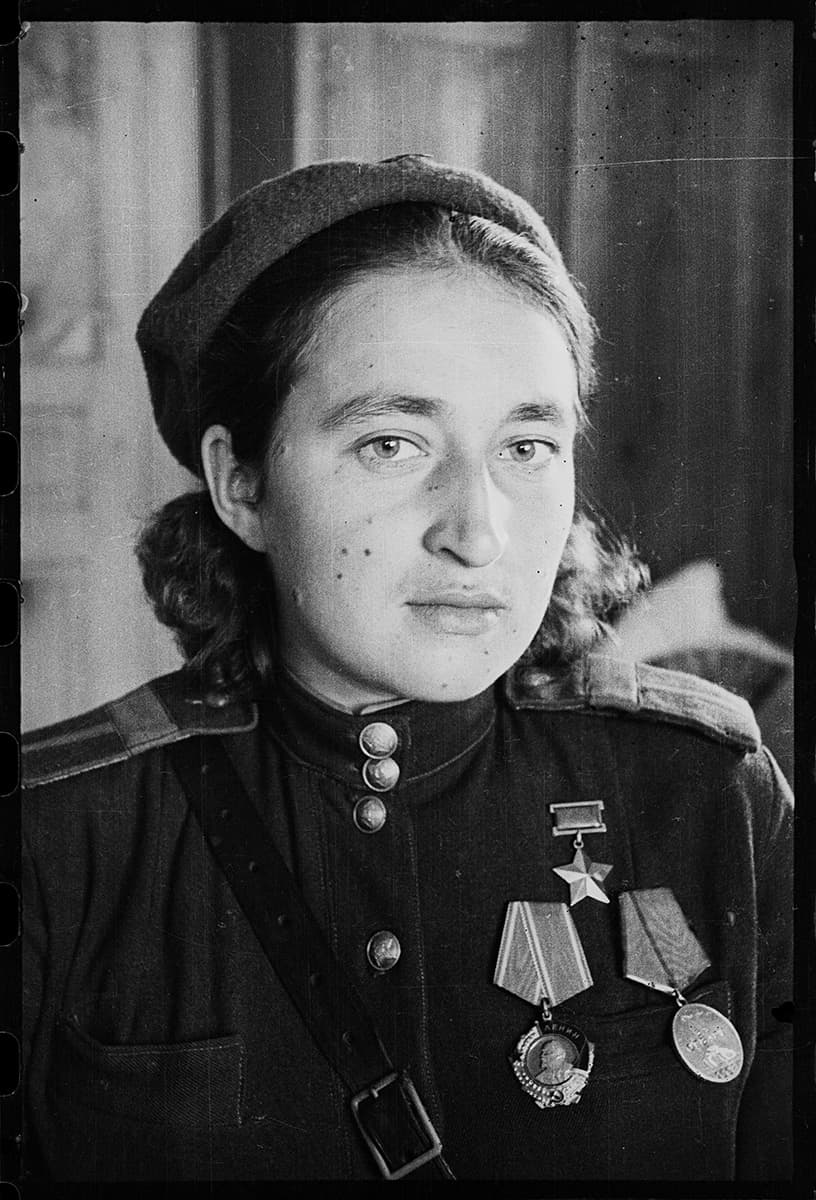
Hero of the Soviet Union - Maria Zakharovna Scherbachenko (1922 - 2016), a nurse of the 835th Infantry Regiment of the 237th Infantry Division (40th Army of the Voronezh Front). On 4th of October 1943, she carried 112 injured soldiers from the battlefield and provided them with first aid. She also transported severely wounded soldiers across the Dnieper River to the first aid station. The beginning of 1944.
Hero of the Soviet Union - Maria Zakharovna Scherbachenko (1922 - 2016), a nurse of the 835th Infantry Regiment of the 237th Infantry Division (40th Army of the Voronezh Front). On 4th of October 1943, she carried 112 injured soldiers from the battlefield and provided them with first aid. She also transported severely wounded soldiers across the Dnieper River to the first aid station. The beginning of 1944.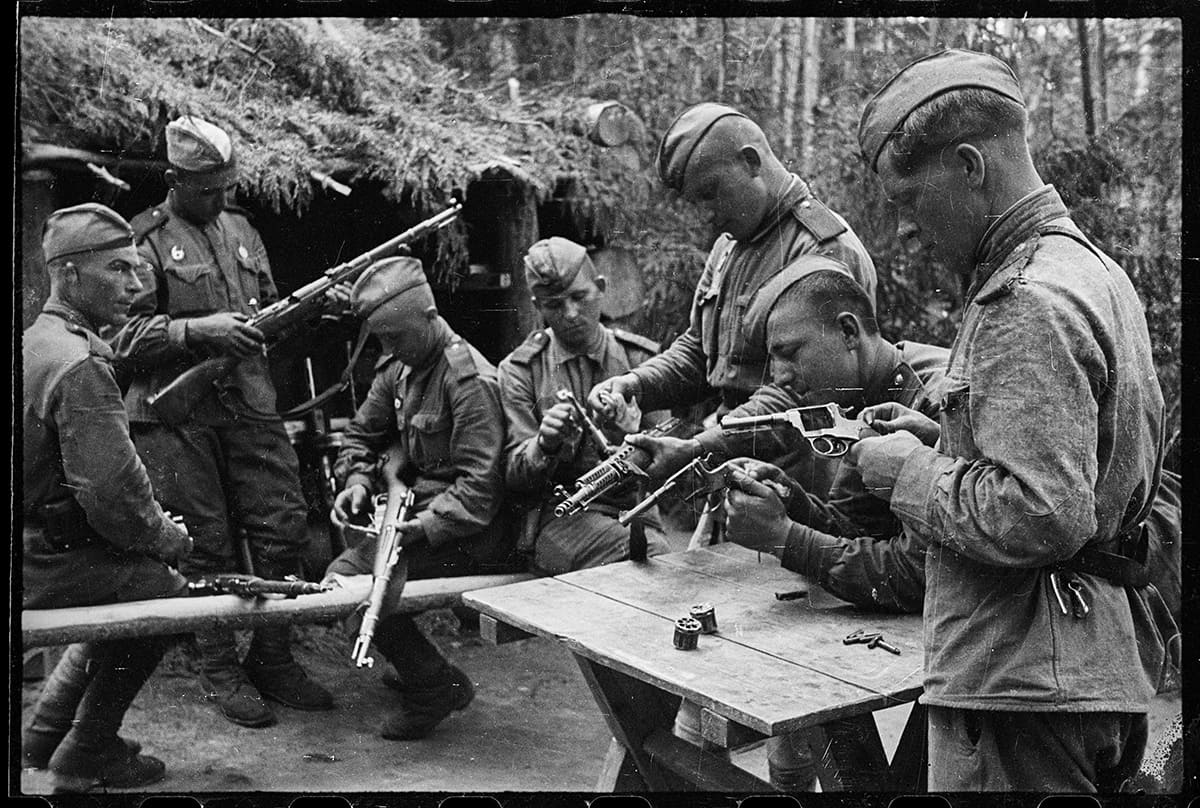
Red Army soldiers cleaning and checking their weapons before a battle. 1943-44
Red Army soldiers cleaning and checking their weapons before a battle. 1943-44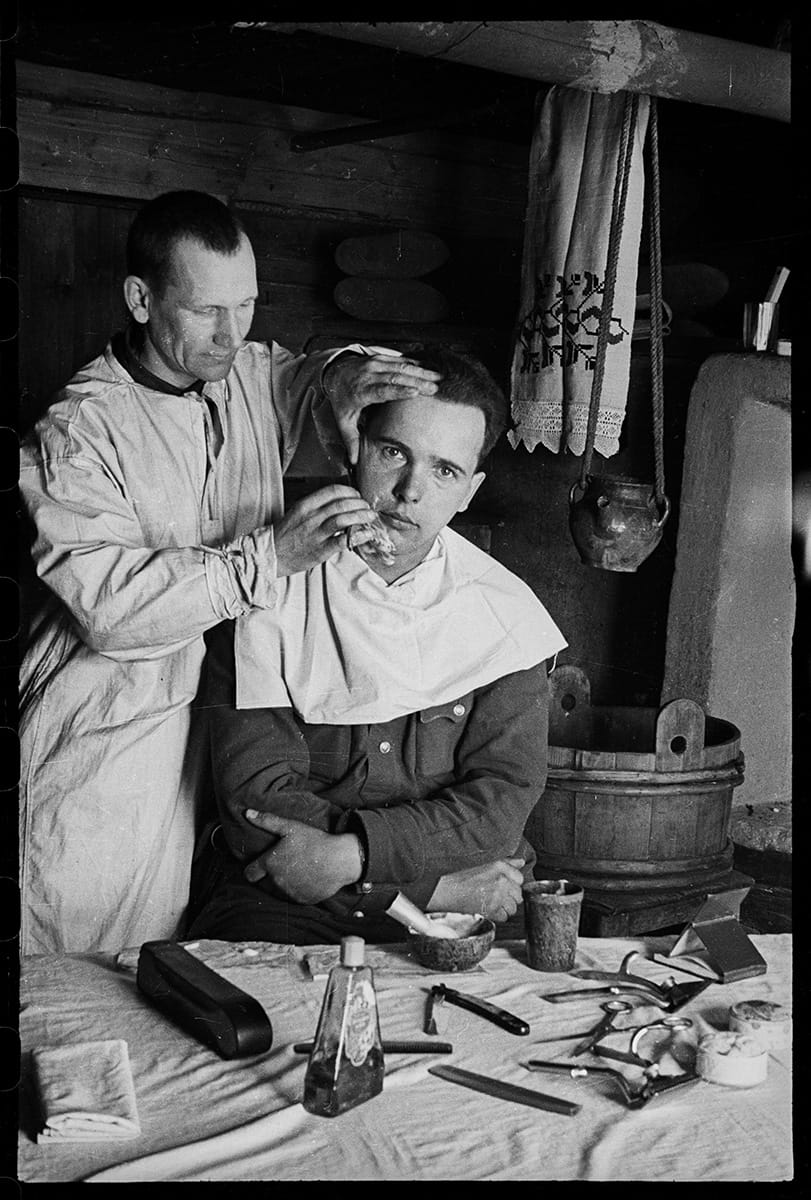
A front hairdresser's shop. The Kalinin front. 1942
A front hairdresser's shop. The Kalinin front. 1942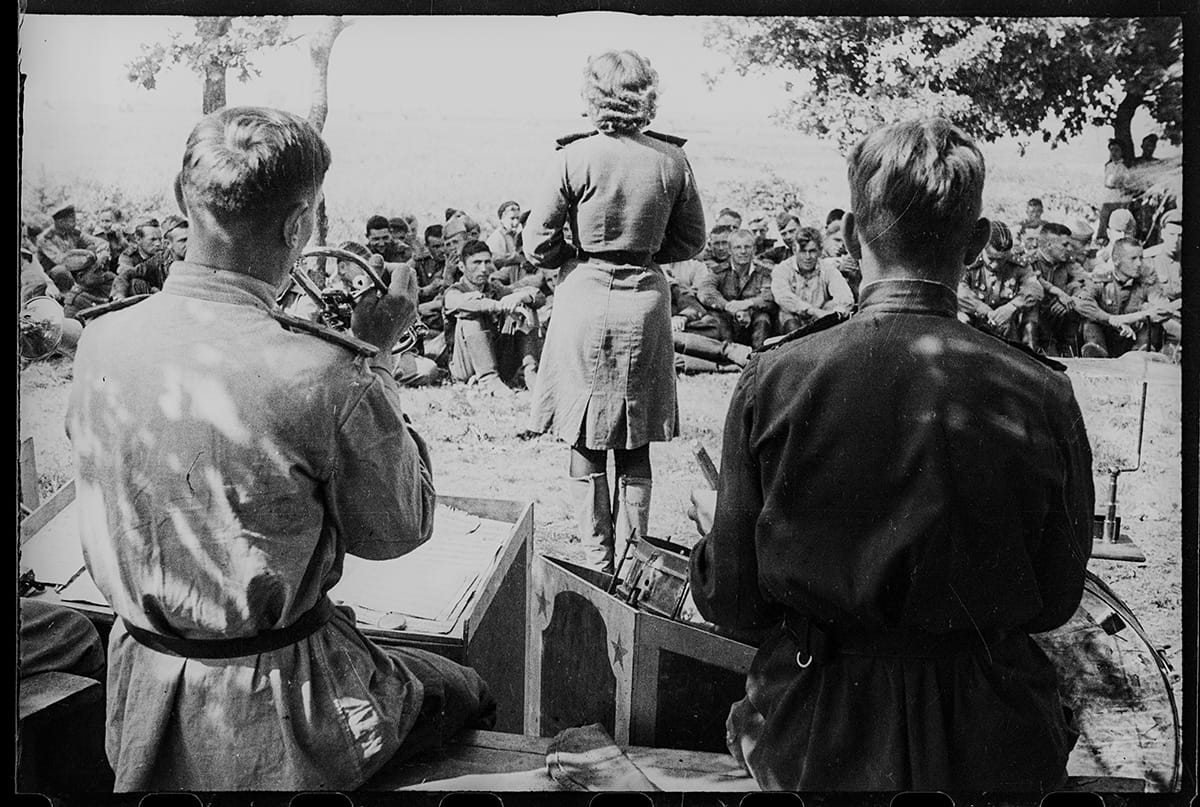
A jazz ensemble performing at an airfield. 1943-45
A jazz ensemble performing at an airfield. 1943-45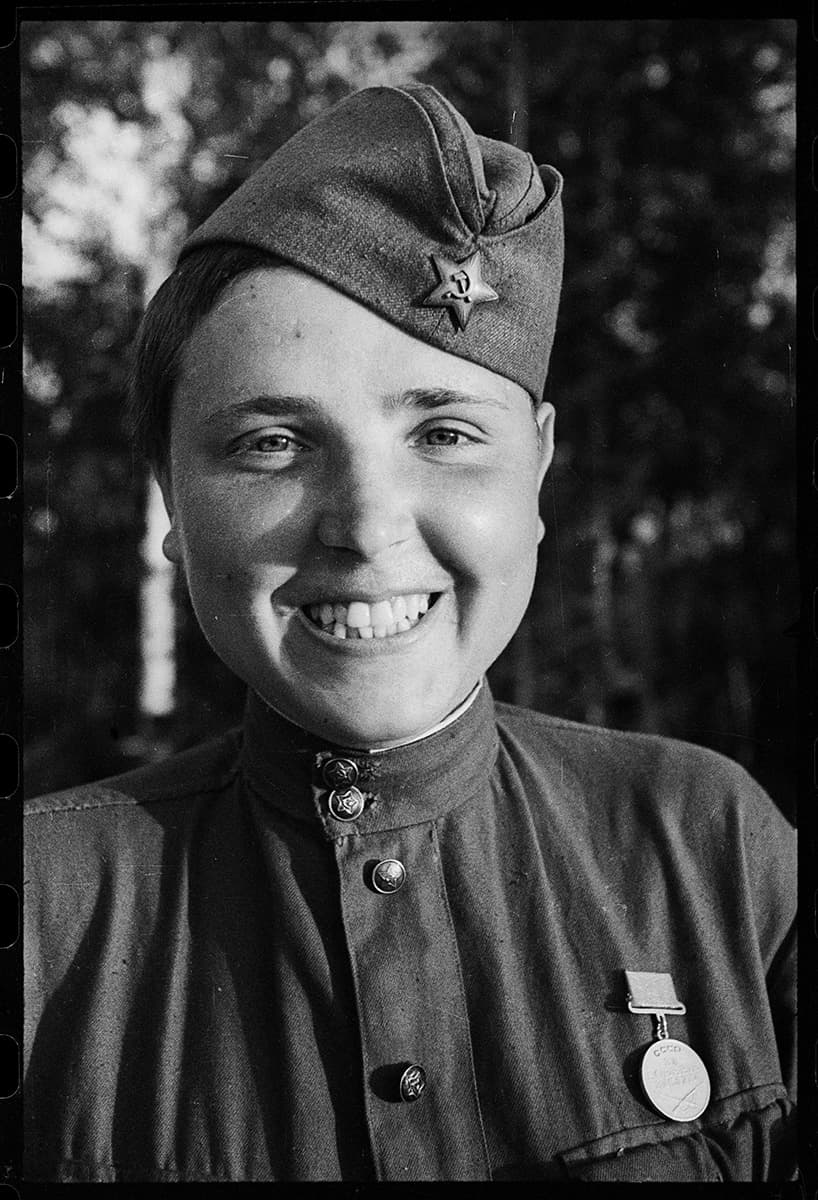
Portrait of a Red Army female soldier. 1st Ukrainian Front. 1943-44
Portrait of a Red Army female soldier. 1st Ukrainian Front. 1943-44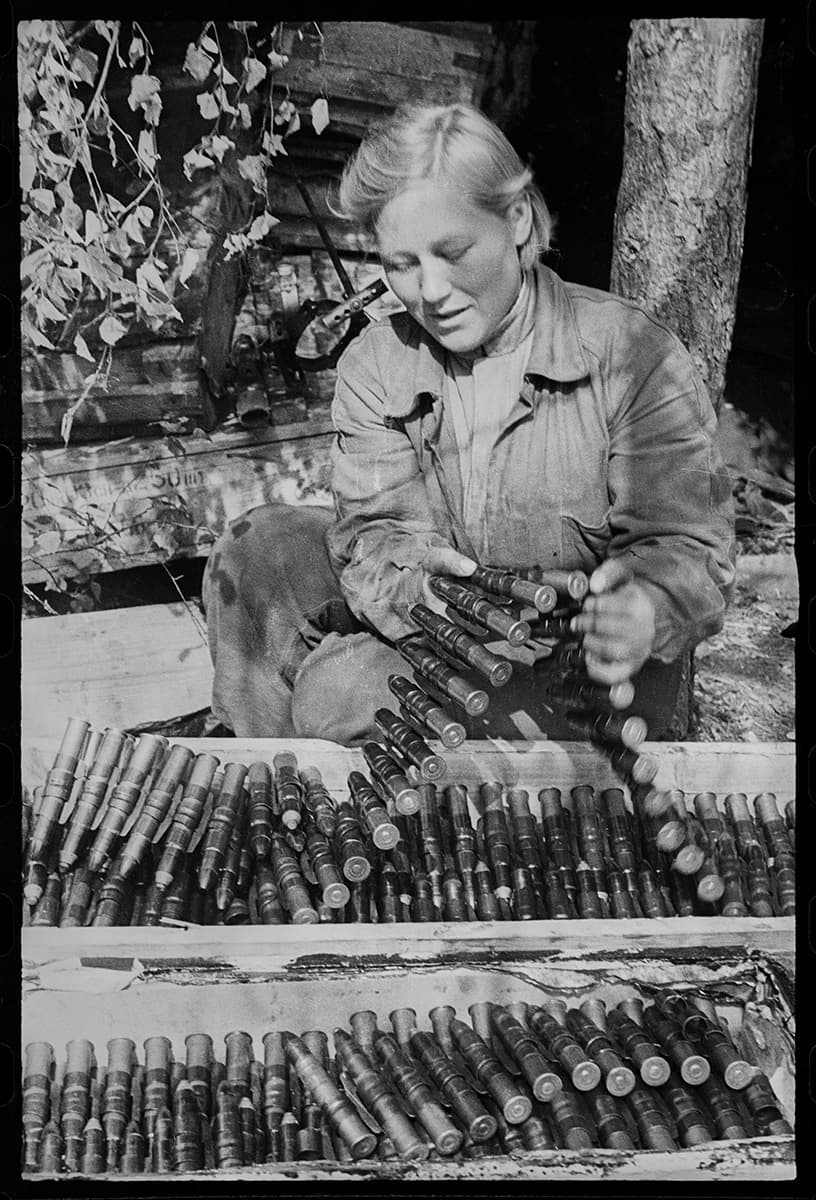
A Red Army female soldier pulling a machine gun belt from a wooden box. 1st Ukrainian Front, USSR. 1943
A Red Army female soldier pulling a machine gun belt from a wooden box. 1st Ukrainian Front, USSR. 1943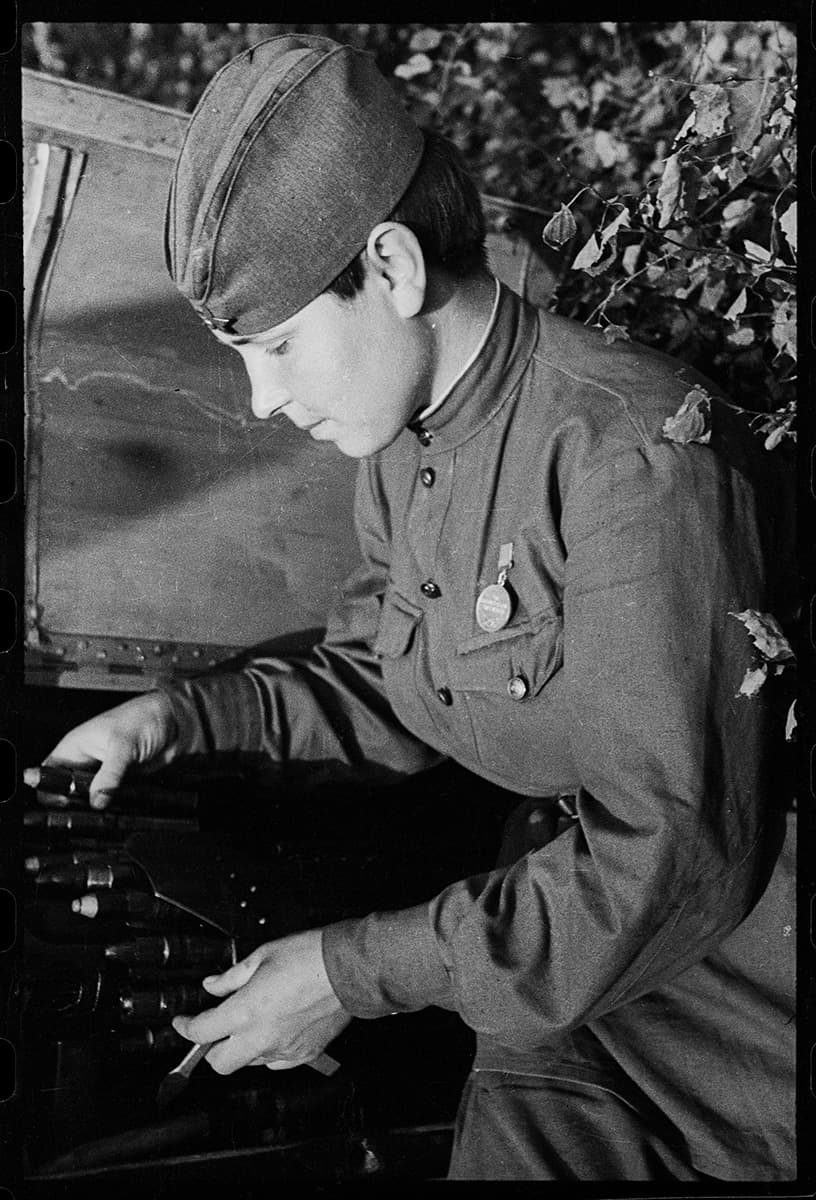
A Red Army female soldier pulling a machine gun belt from a wooden box. 1st Ukrainian Front, USSR. 1943
A Red Army female soldier pulling a machine gun belt from a wooden box. 1st Ukrainian Front, USSR. 1943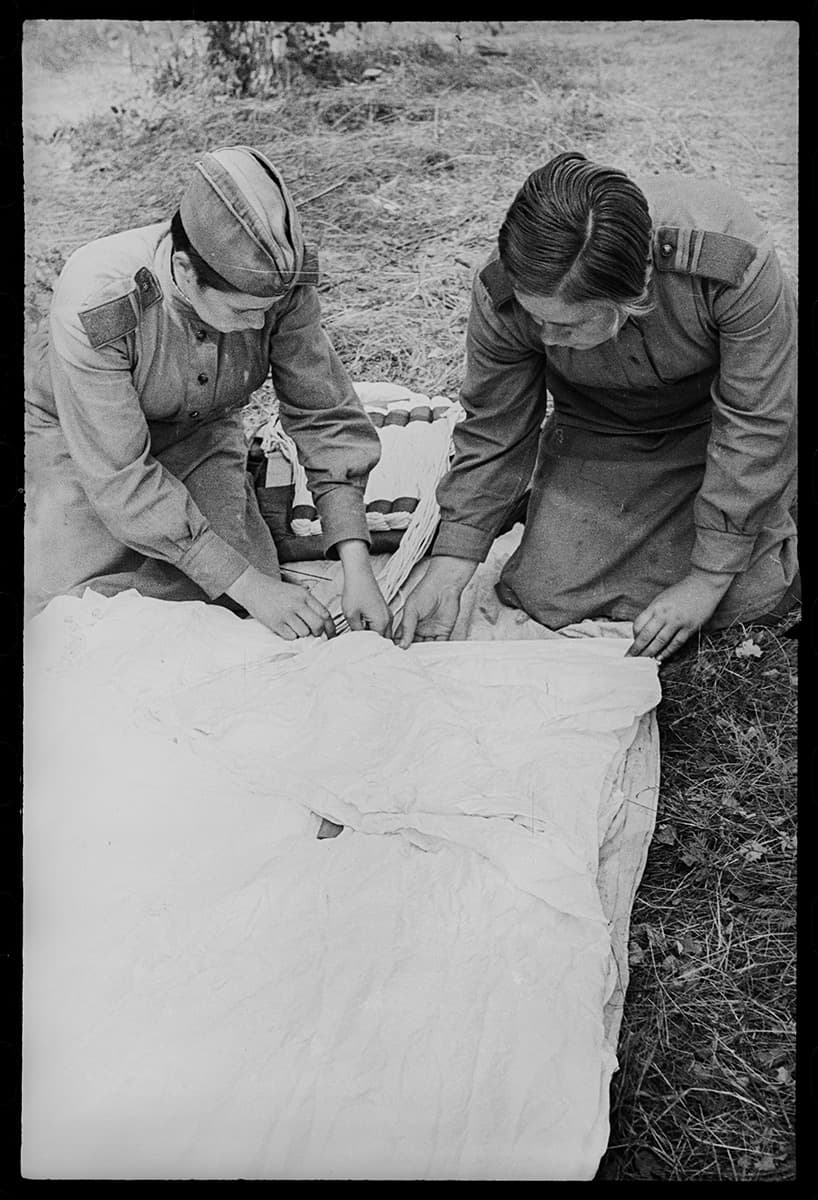
Red Army female soldiers packing a parachute. The 1st Ukrainian Front. USSR. 1943
Red Army female soldiers packing a parachute. The 1st Ukrainian Front. USSR. 1943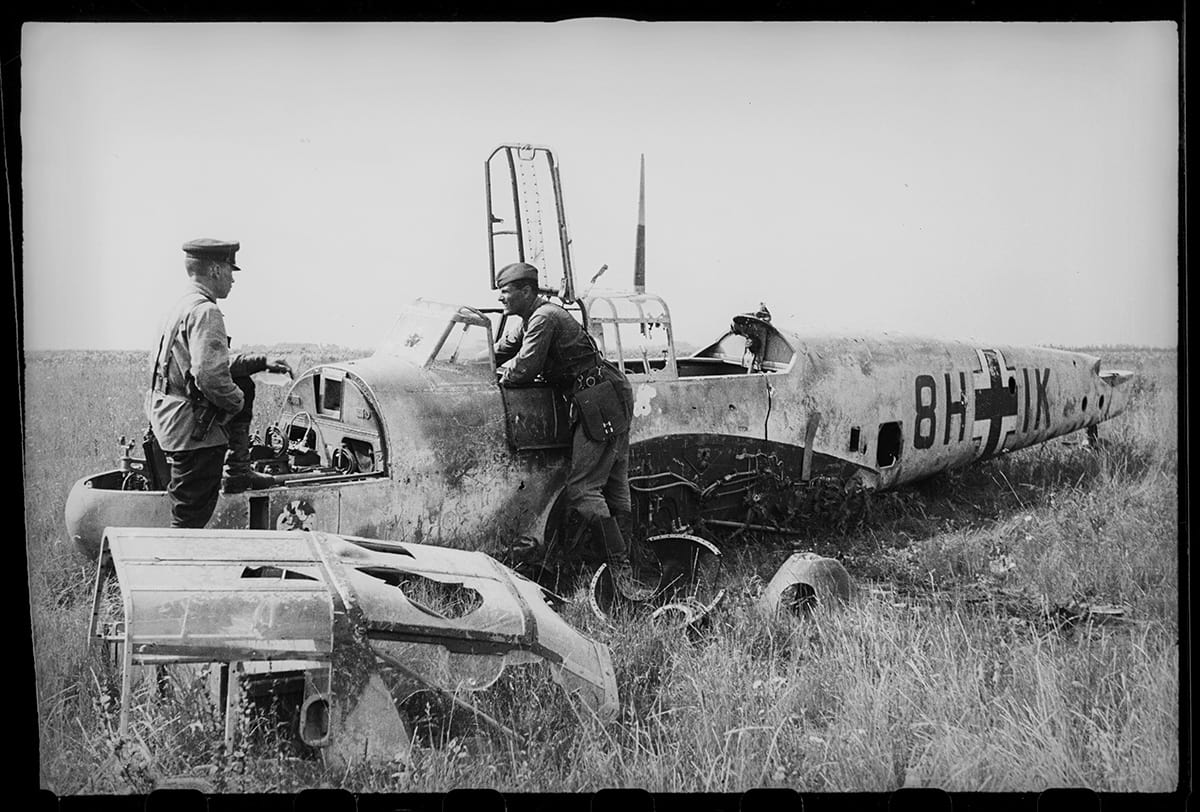
A Bf-110 aircraft (Messerschmidt) from 2(F)/33 2 Staffel of the 33rd Long Range Reconnaissance Group abandoned by the Germans. The Kalinin front. 1942
A Bf-110 aircraft (Messerschmidt) from 2(F)/33 2 Staffel of the 33rd Long Range Reconnaissance Group abandoned by the Germans. The Kalinin front. 1942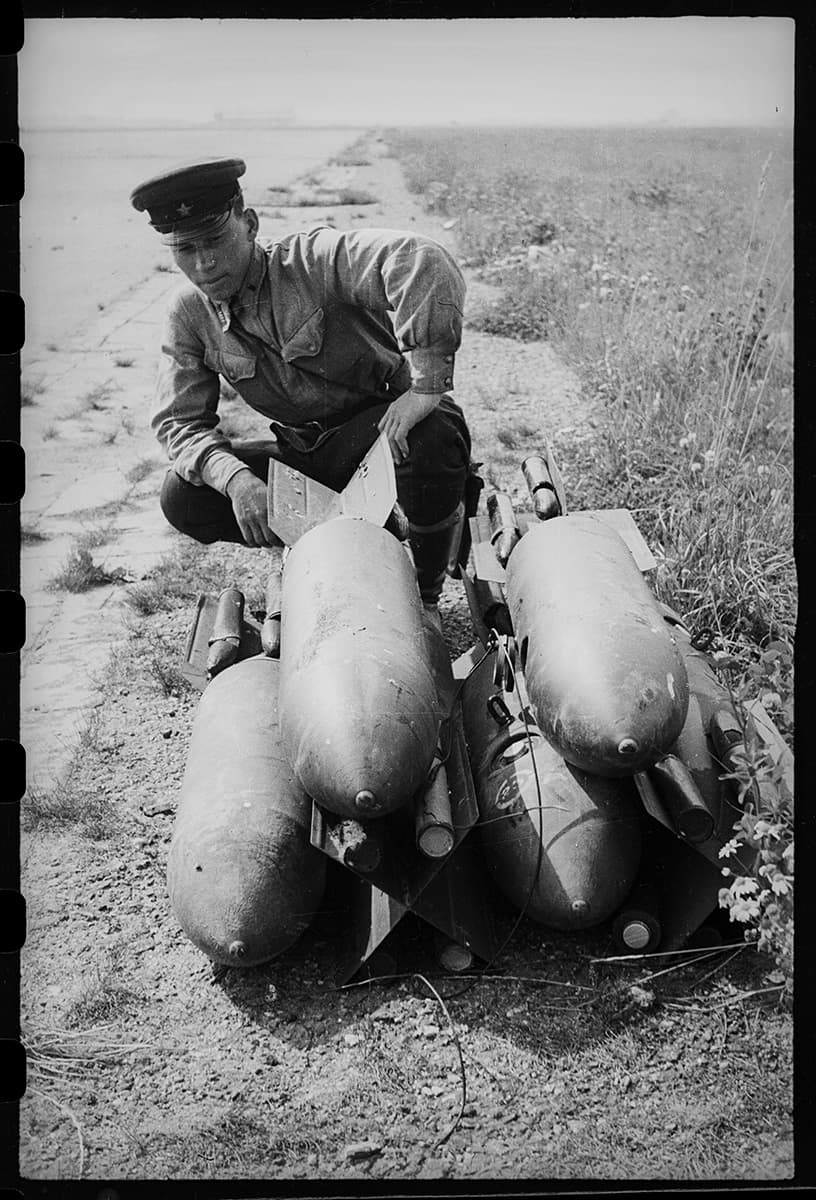
50kg German aerial bombs with EIal25 fuse. The bombs are fitted with explosive checkers. The Kalinin front. 1942
50kg German aerial bombs with EIal25 fuse. The bombs are fitted with explosive checkers. The Kalinin front. 1942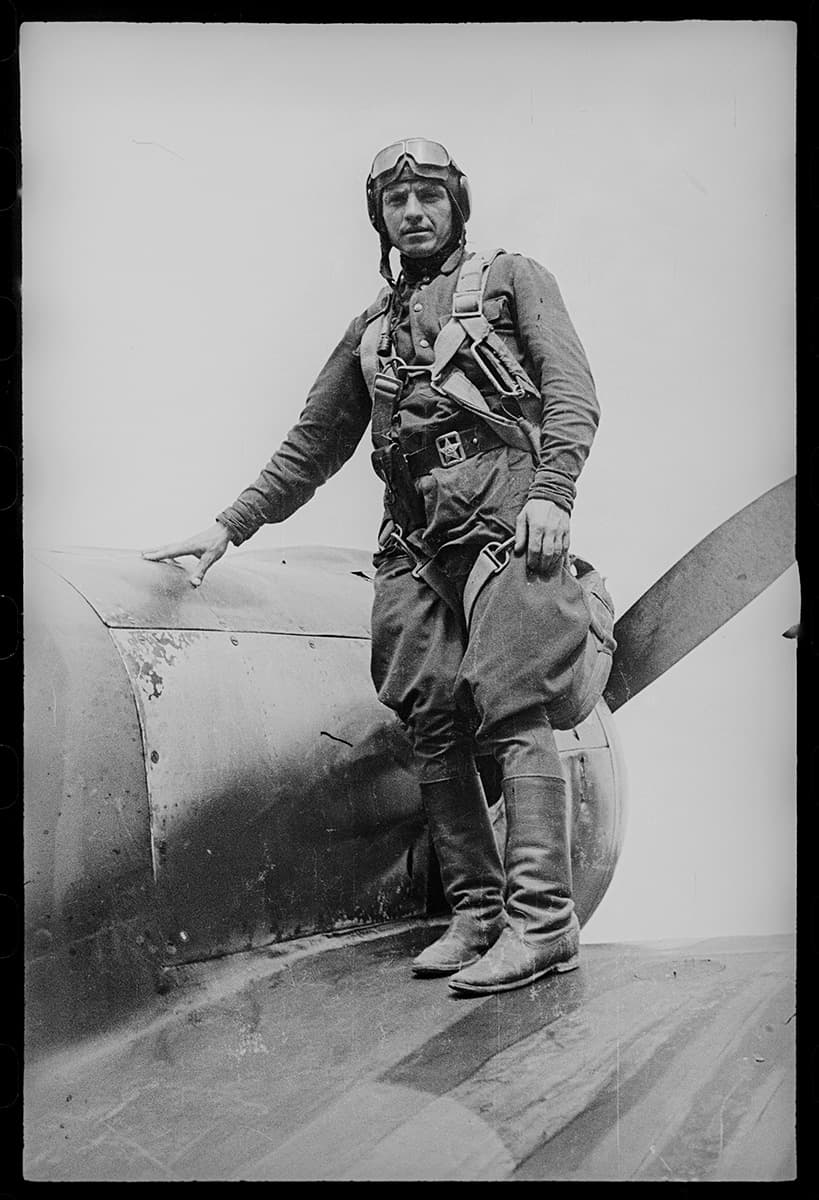
Preparing for take-off. A pilot standing on the wing of a La-5FN aircraft. USSR. 1943
Preparing for take-off. A pilot standing on the wing of a La-5FN aircraft. USSR. 1943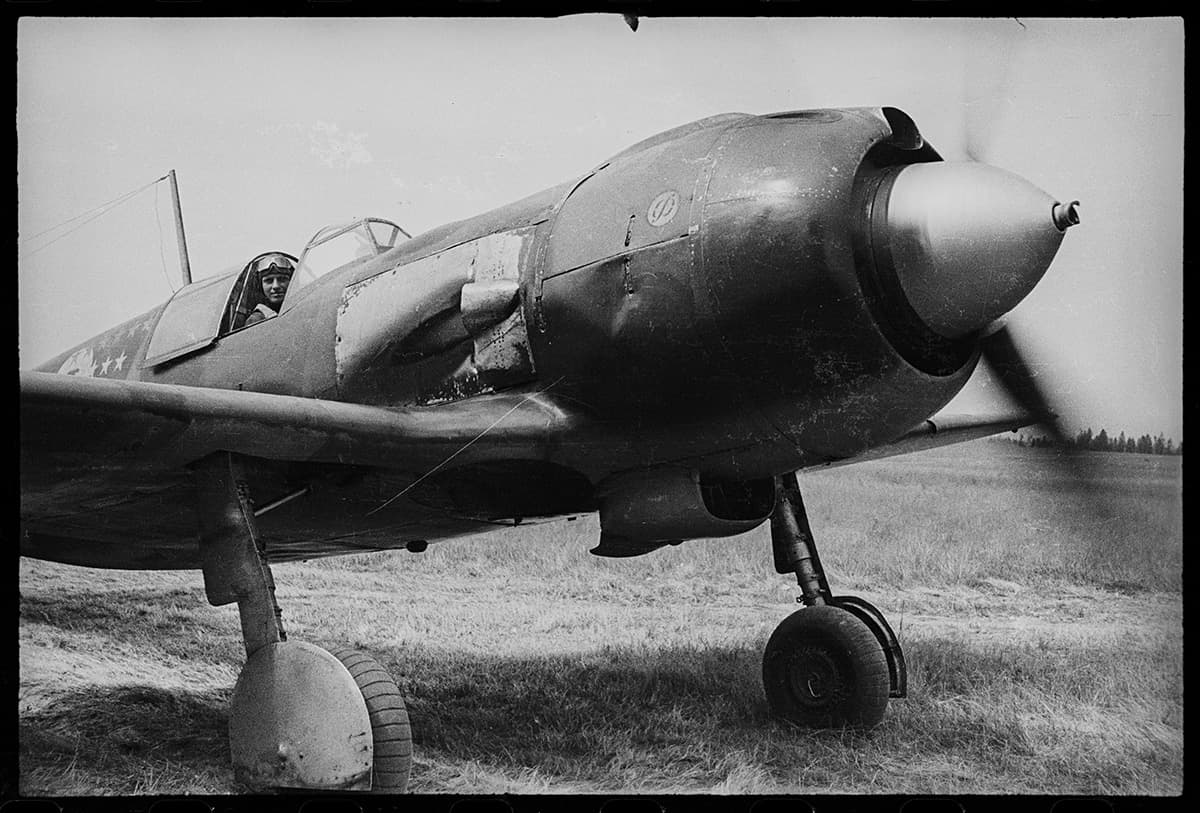
Preparation for takeoff of La-5F aircraft. USSR. 1943
Preparation for takeoff of La-5F aircraft. USSR. 1943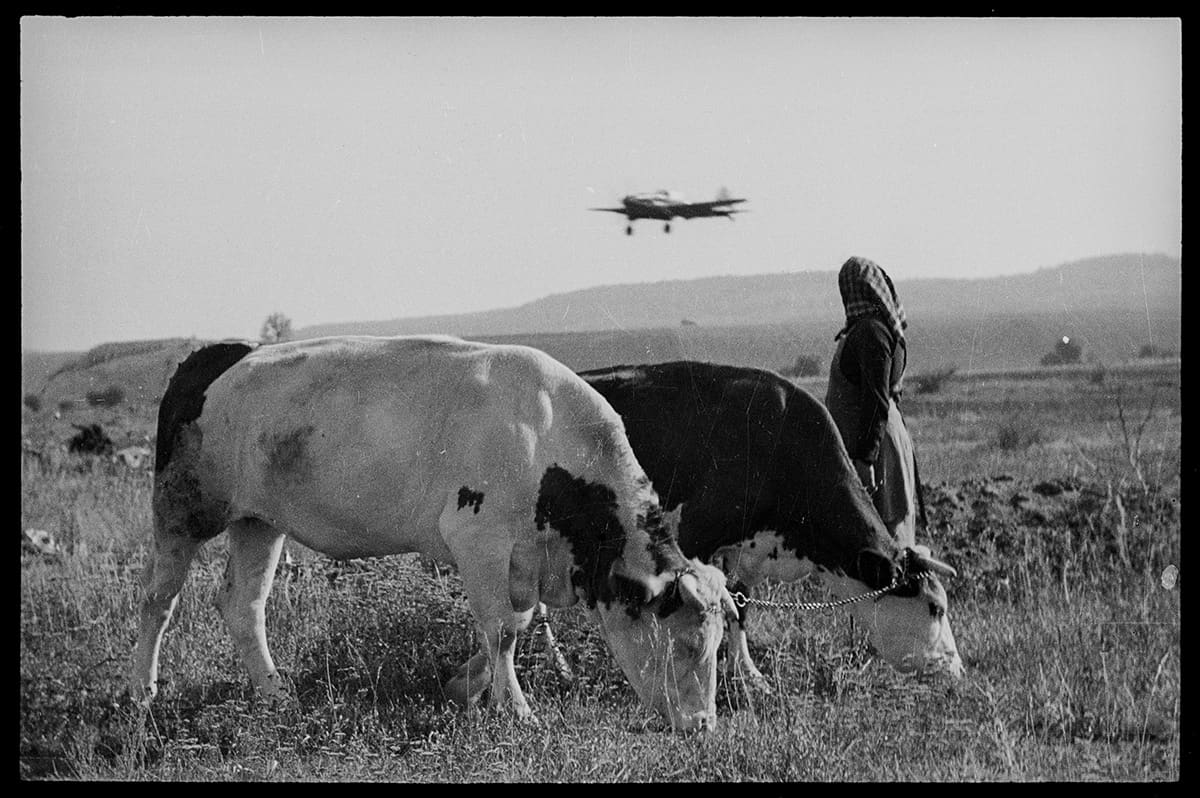
"Where the fights took place yesterday." 1st Ukrainian Front, USSR. 1943
"Where the fights took place yesterday." 1st Ukrainian Front, USSR. 1943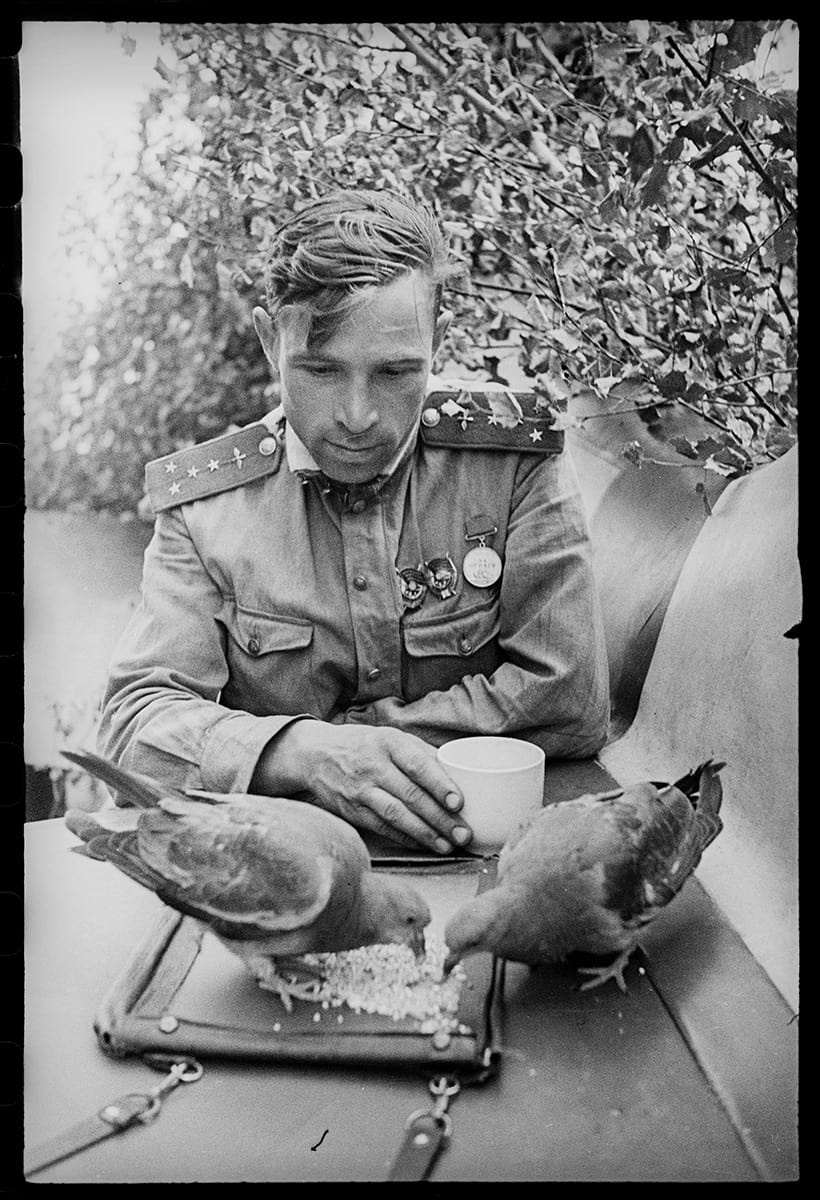
"A break between battles." Soviet fighter pilot Captain Viktor Vasilyevich Popov feeding pigeons on the tail of an aircraft. Popov served as a navigator of the 263rd Fighter Aviation Regiment and was awarded two Orders of the Red Banner and the Medal of Honour. The Kalinin front, USSR. 1943
"A break between battles." Soviet fighter pilot Captain Viktor Vasilyevich Popov feeding pigeons on the tail of an aircraft. Popov served as a navigator of the 263rd Fighter Aviation Regiment and was awarded two Orders of the Red Banner and the Medal of Honour. The Kalinin front, USSR. 1943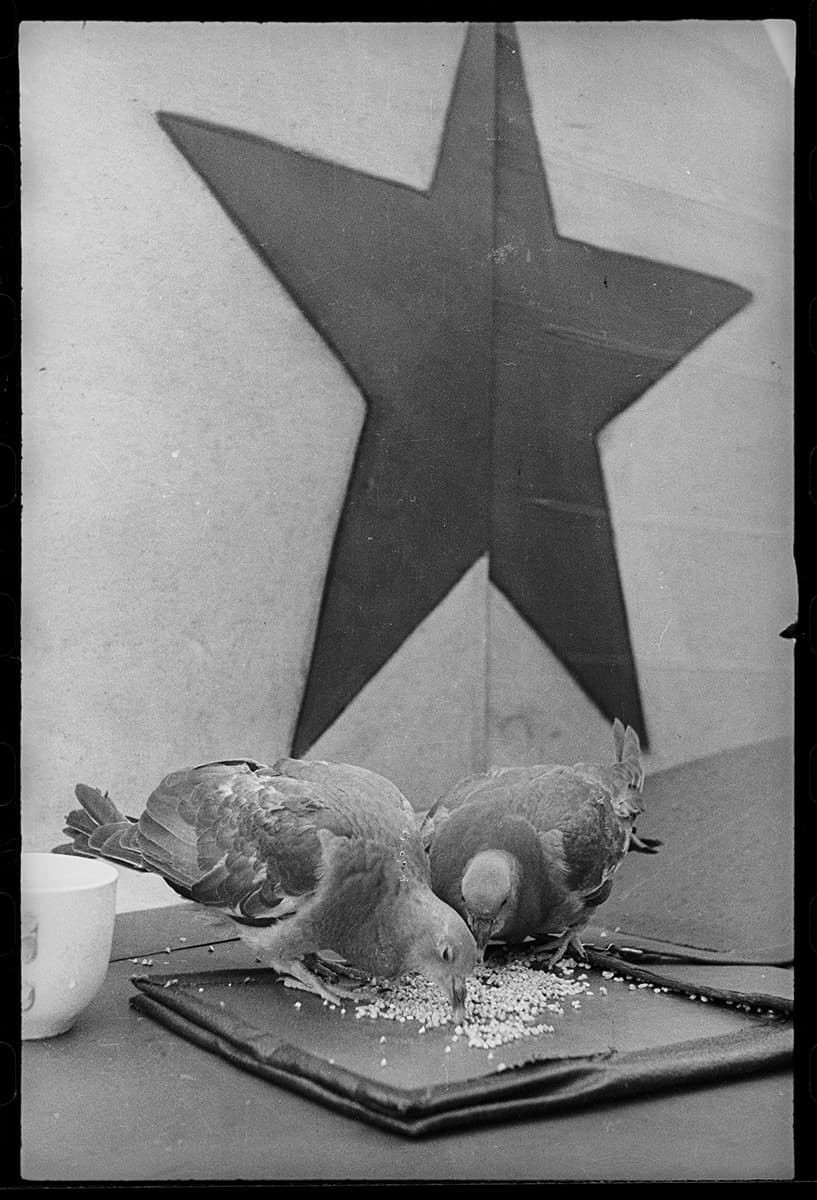
Pigeons. A Soviet pilot feeding pigeons. The Kalinin front, USSR. 1943
Pigeons. A Soviet pilot feeding pigeons. The Kalinin front, USSR. 1943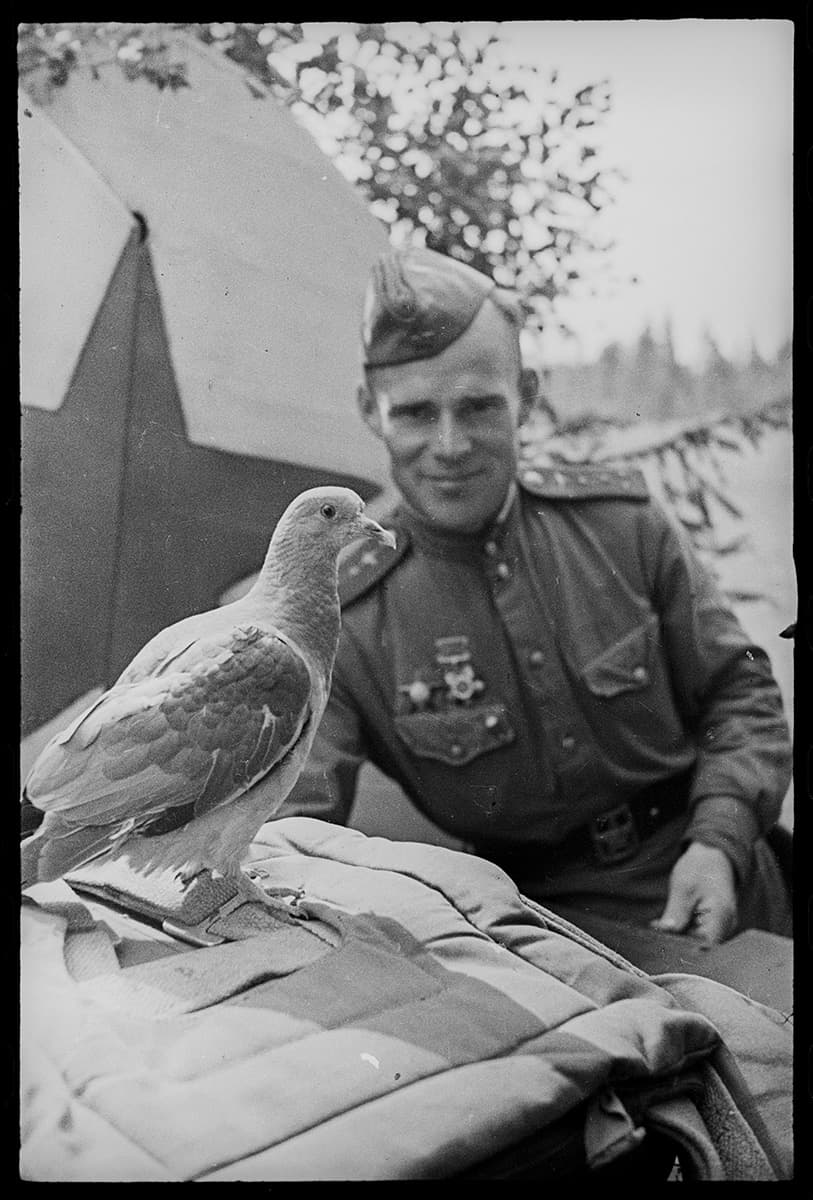
Pigeons. A Soviet pilot with the rank of captain feeding pigeons. The Kalinin front, USSR. 1943
Pigeons. A Soviet pilot with the rank of captain feeding pigeons. The Kalinin front, USSR. 1943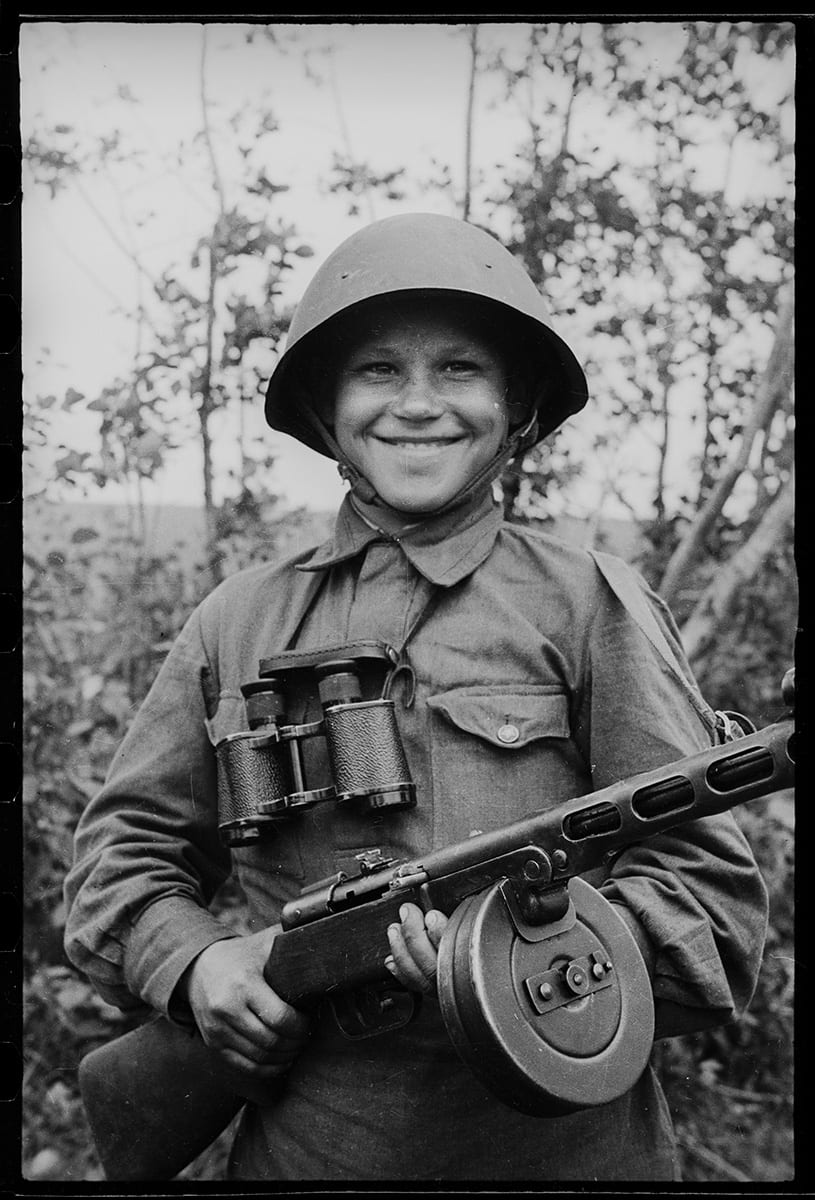
"Son of the Regiment." A child soldier in one of the units of the Red Army. The Kalinin front. 1942
"Son of the Regiment." A child soldier in one of the units of the Red Army. The Kalinin front. 1942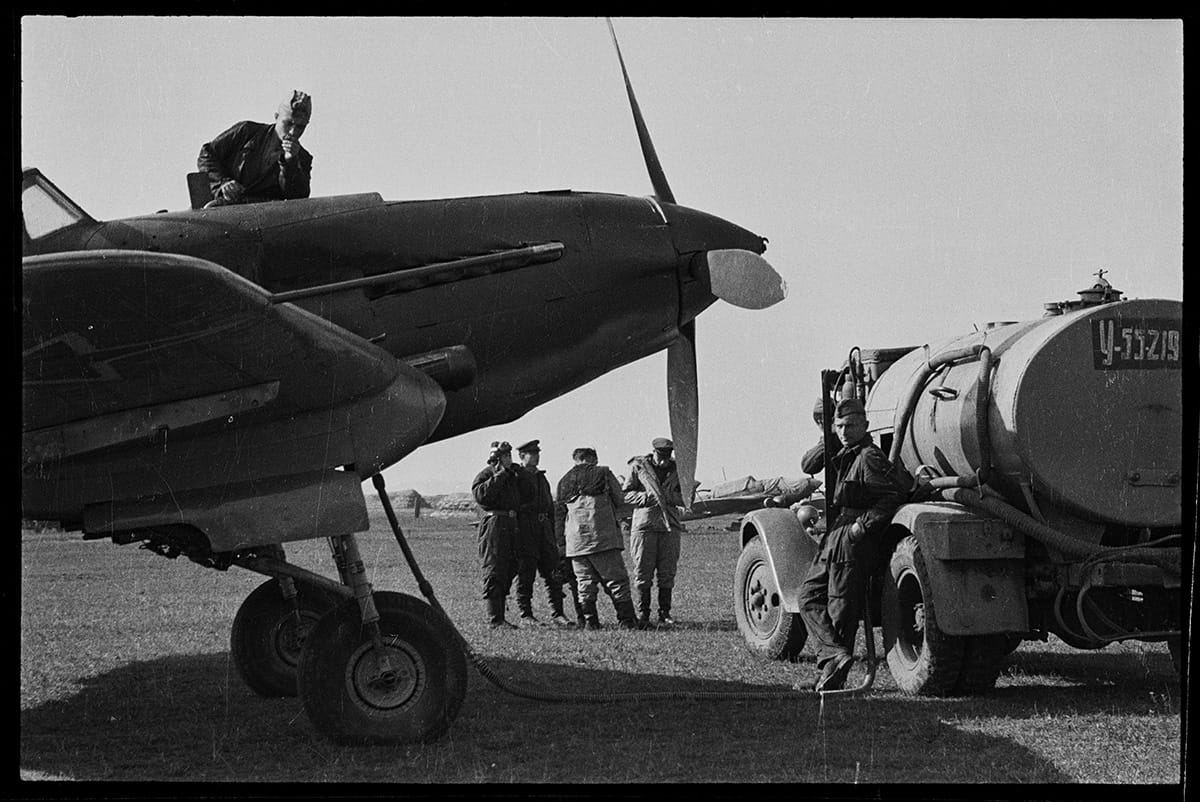
Refuelling a Soviet Il-2 fighter aircraft at a Soviet airfield. 1944-45
Refuelling a Soviet Il-2 fighter aircraft at a Soviet airfield. 1944-45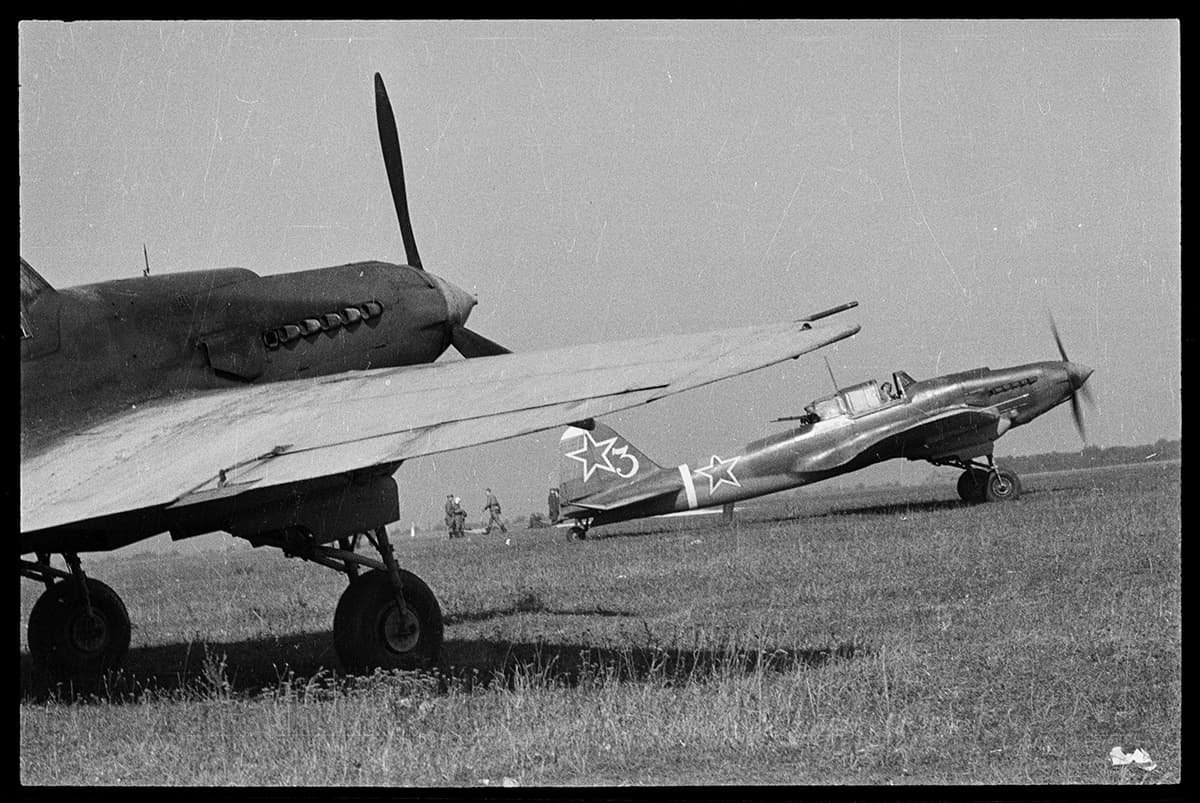
A Soviet Il-2 fighter aircraft with tail number 3 from the 140th Guards Air Assault Regiment of the 1st Guards Air Assault Corps warming up the engine before takeoff from the airfield. 1944-45
A Soviet Il-2 fighter aircraft with tail number 3 from the 140th Guards Air Assault Regiment of the 1st Guards Air Assault Corps warming up the engine before takeoff from the airfield. 1944-45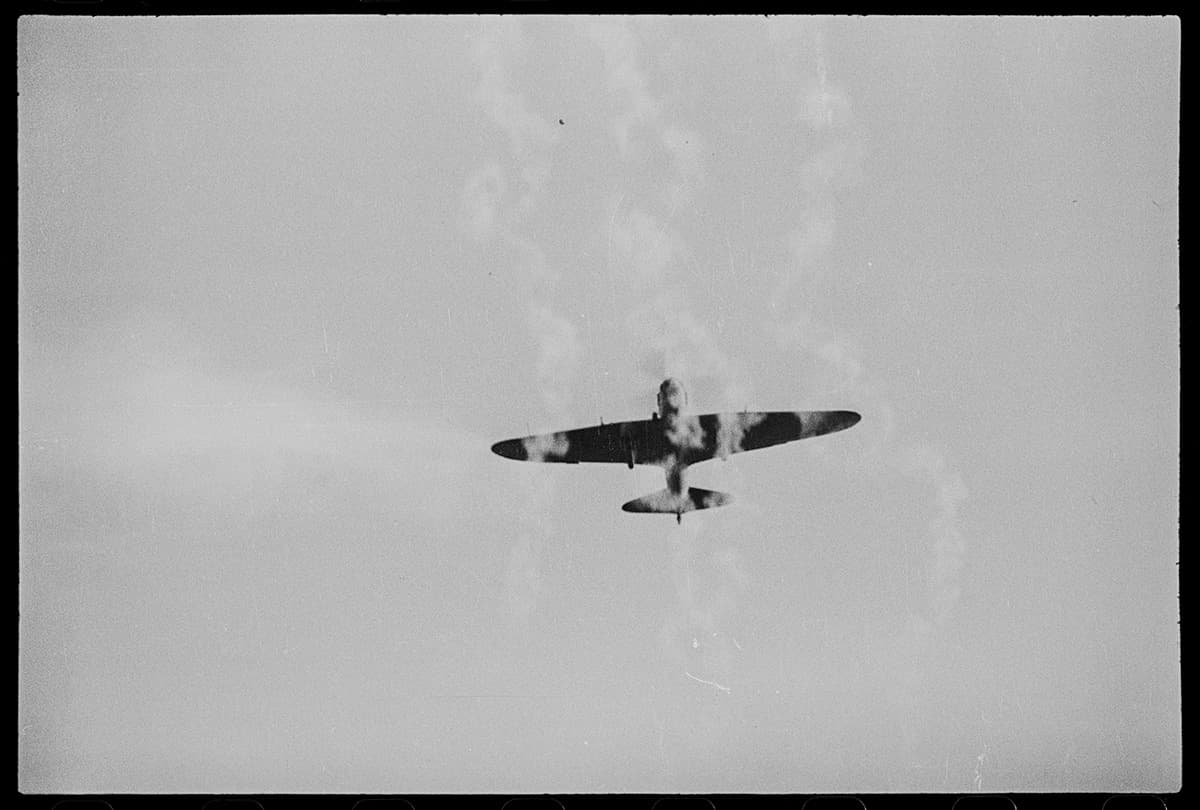
A Soviet Il-2 fighter aircraft from the 1st Guards Air Assault Corps in the sky. 1944-45
A Soviet Il-2 fighter aircraft from the 1st Guards Air Assault Corps in the sky. 1944-45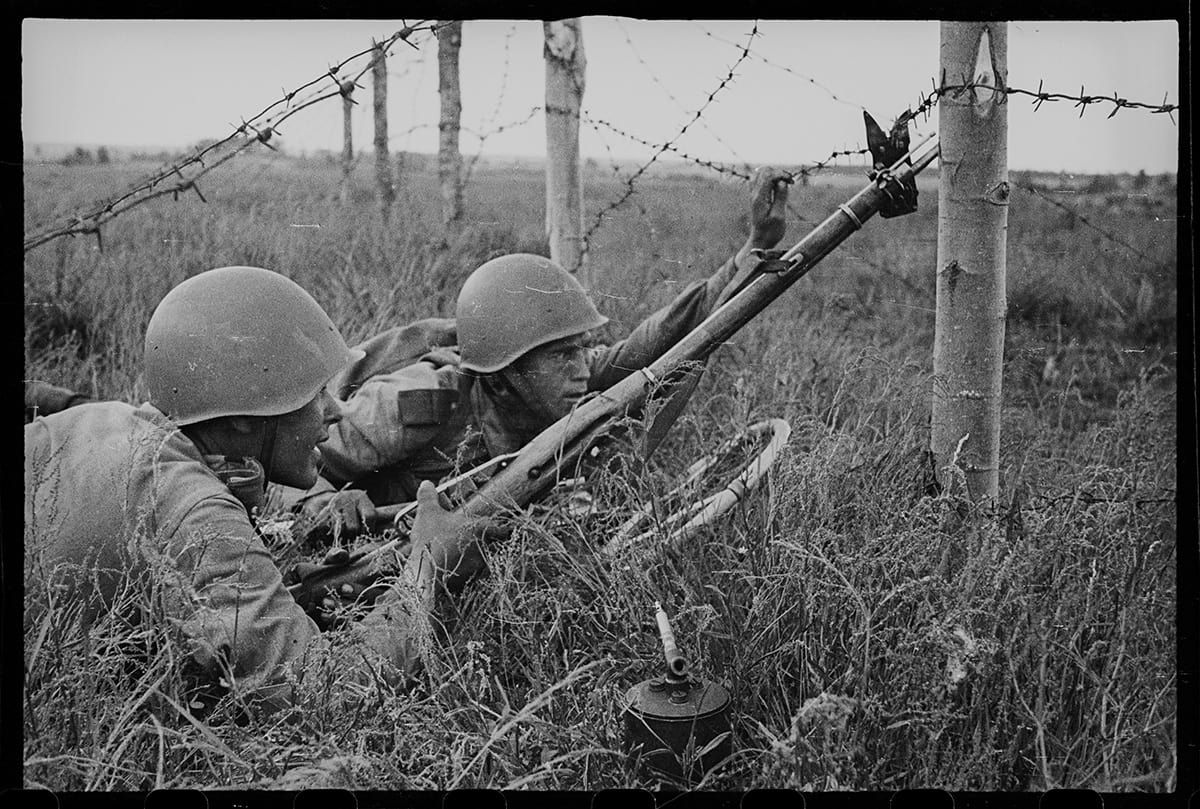
Removal of the barbed wire fence. The Kalinin front. 1943
Removal of the barbed wire fence. The Kalinin front. 1943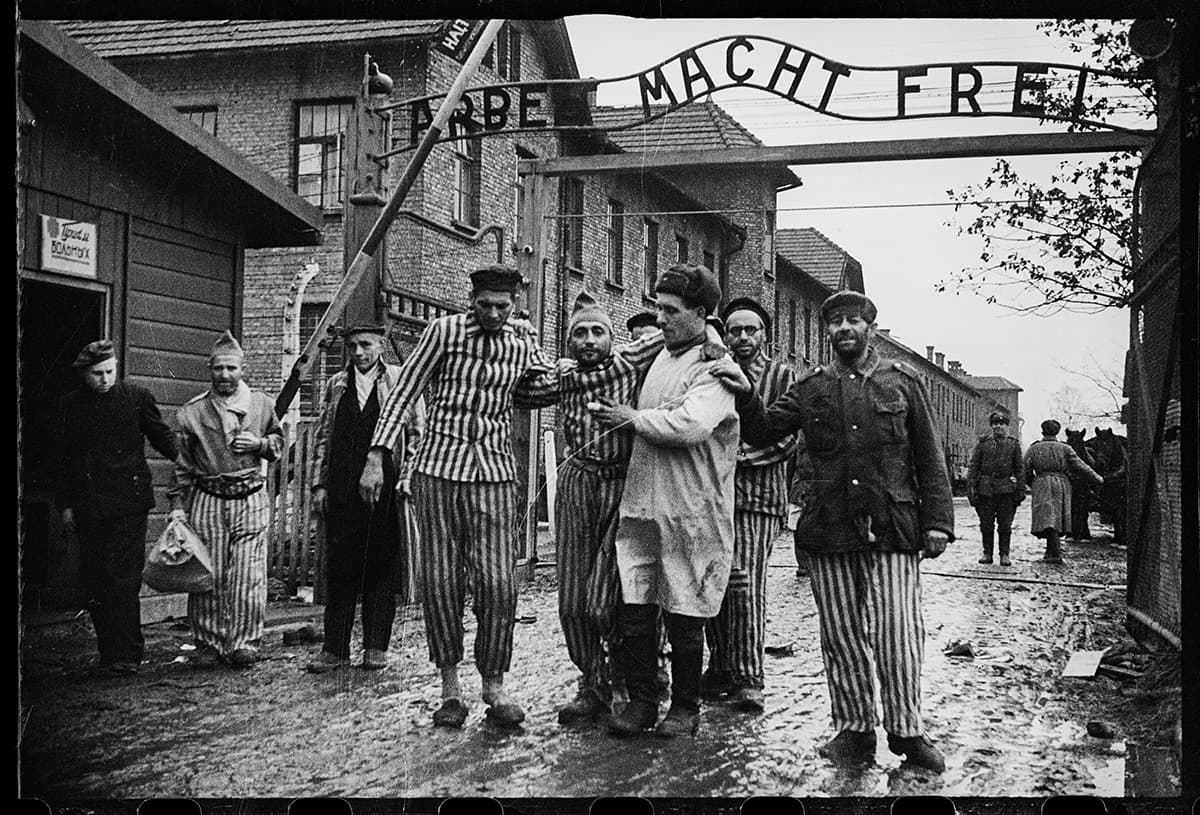
Oświęcim concentration camp (Auschwitz I). Liberation of prisoners from the camp. Red Army fighters lead the survivors out of the death camp. Poland. The end of January 1945
Oświęcim concentration camp (Auschwitz I). Liberation of prisoners from the camp. Red Army fighters lead the survivors out of the death camp. Poland. The end of January 1945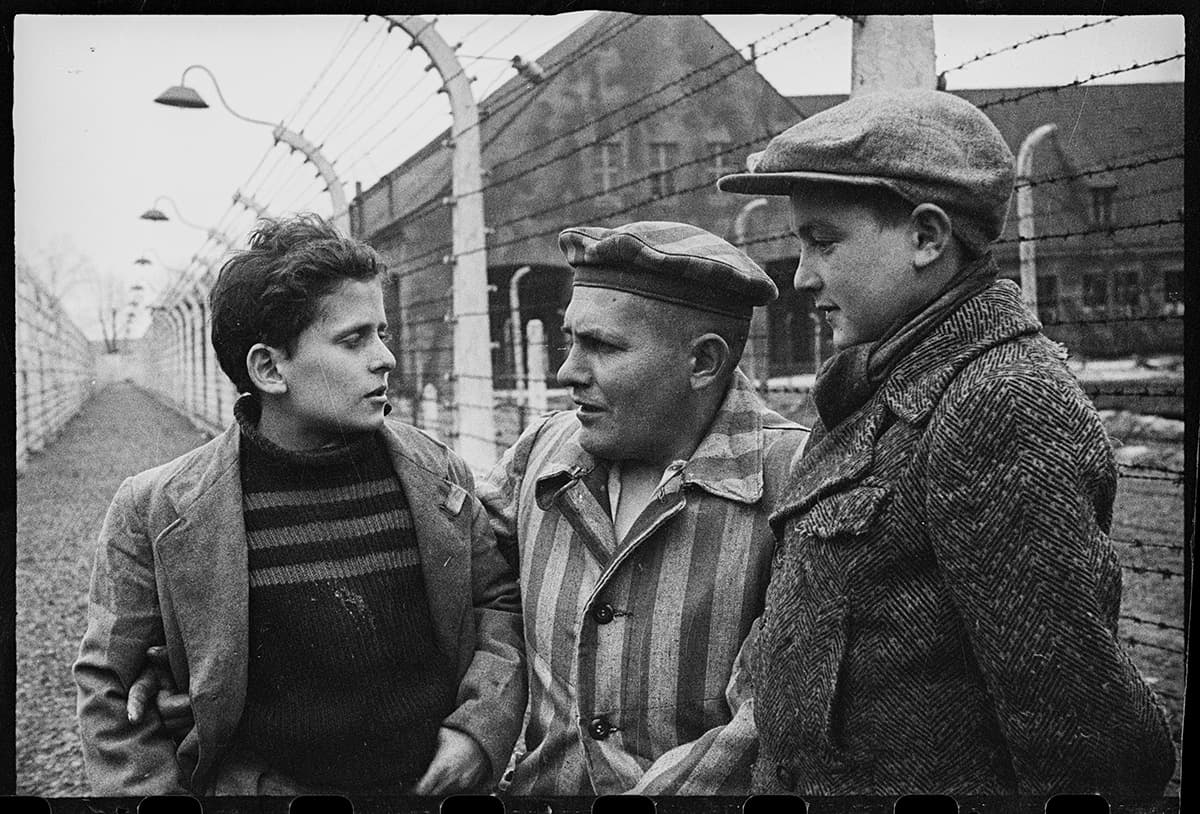
Oswiecim (Auschwitz I) concentration camp. Poland. End of January 1945
Oswiecim (Auschwitz I) concentration camp. Poland. End of January 1945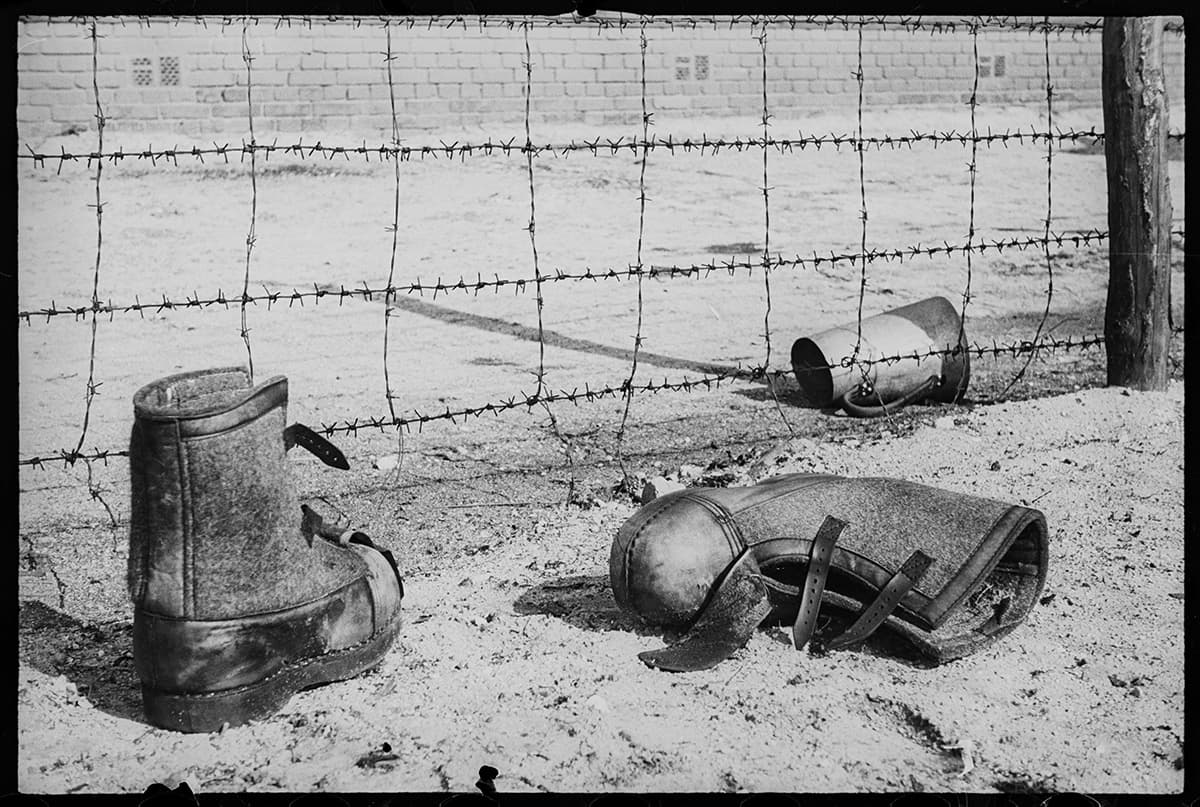
Majdanek concentration camp. Near the city of Lublin, Poland. End of July 1944
Majdanek concentration camp. Near the city of Lublin, Poland. End of July 1944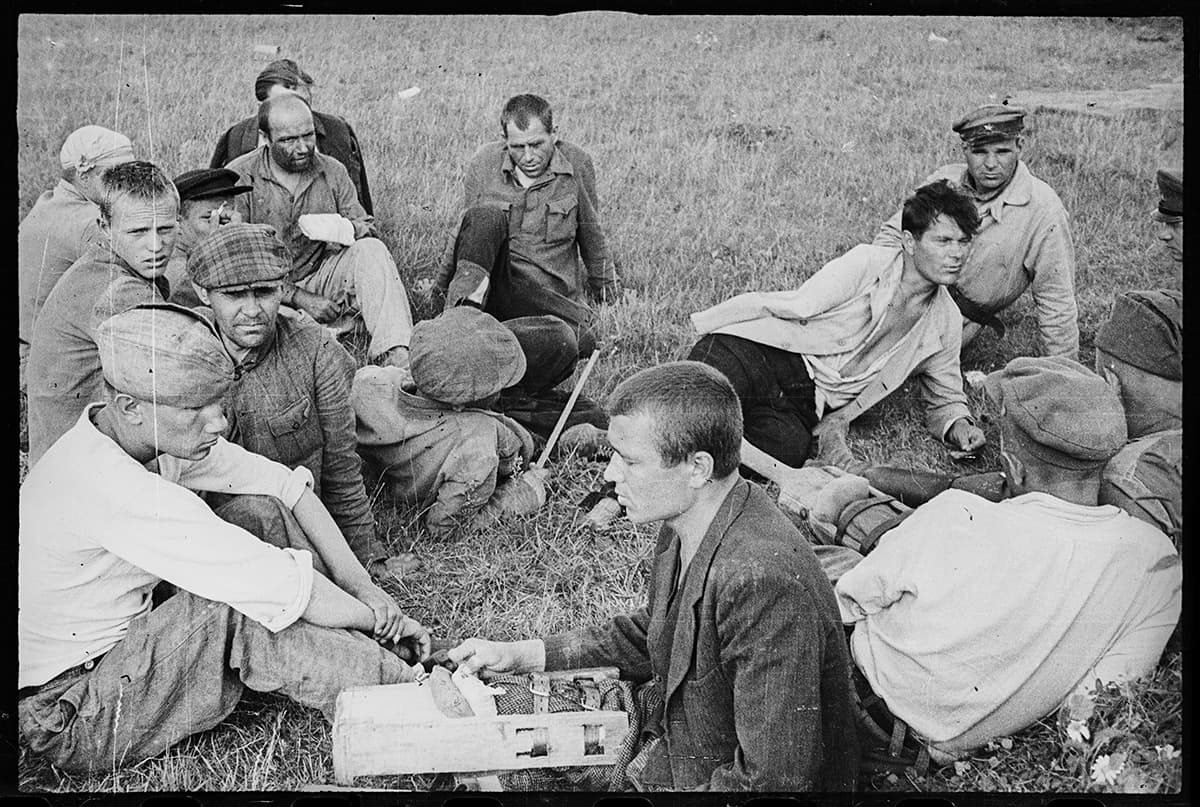
Survivors of the Majdanek concentration camp. Near Lublin, Poland. July 1944
Survivors of the Majdanek concentration camp. Near Lublin, Poland. July 1944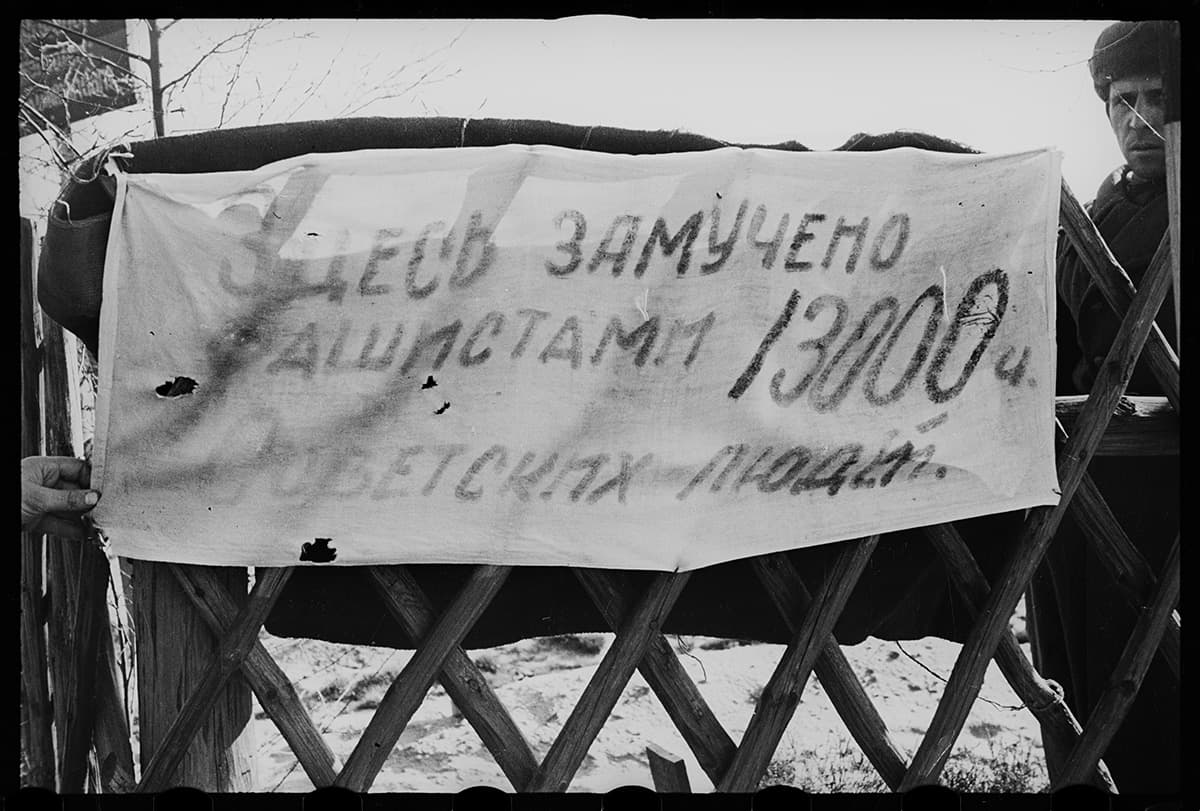
Majdanek concentration camp. A white piece of cloth with the words "The Nazis tortured 13,000 Soviet citizens here" displayed at the cemetery of Soviet citizens. Poland. July 1944
Majdanek concentration camp. A white piece of cloth with the words "The Nazis tortured 13,000 Soviet citizens here" displayed at the cemetery of Soviet citizens. Poland. July 1944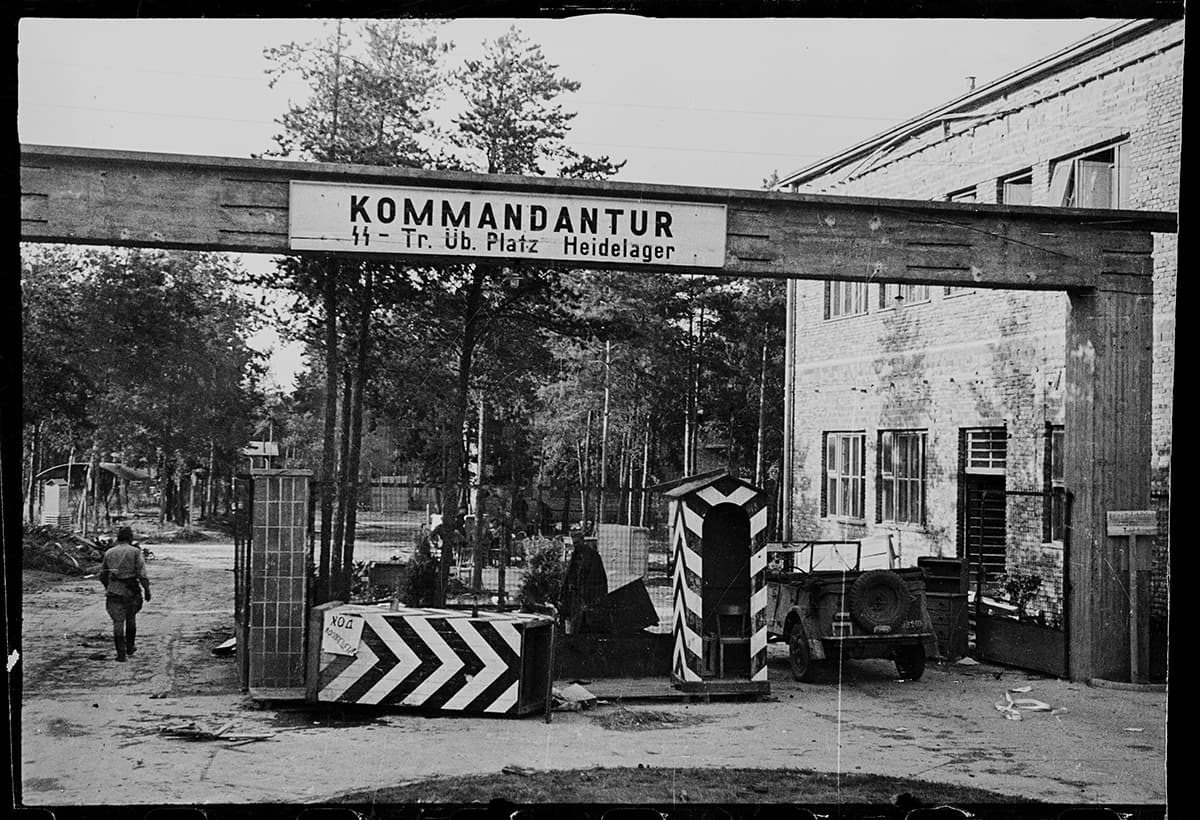
SS camp in the Dembit forest. Commandant's office of the SS training ground for troops "Haidelager". Poland. August-September 1944
SS camp in the Dembit forest. Commandant's office of the SS training ground for troops "Haidelager". Poland. August-September 1944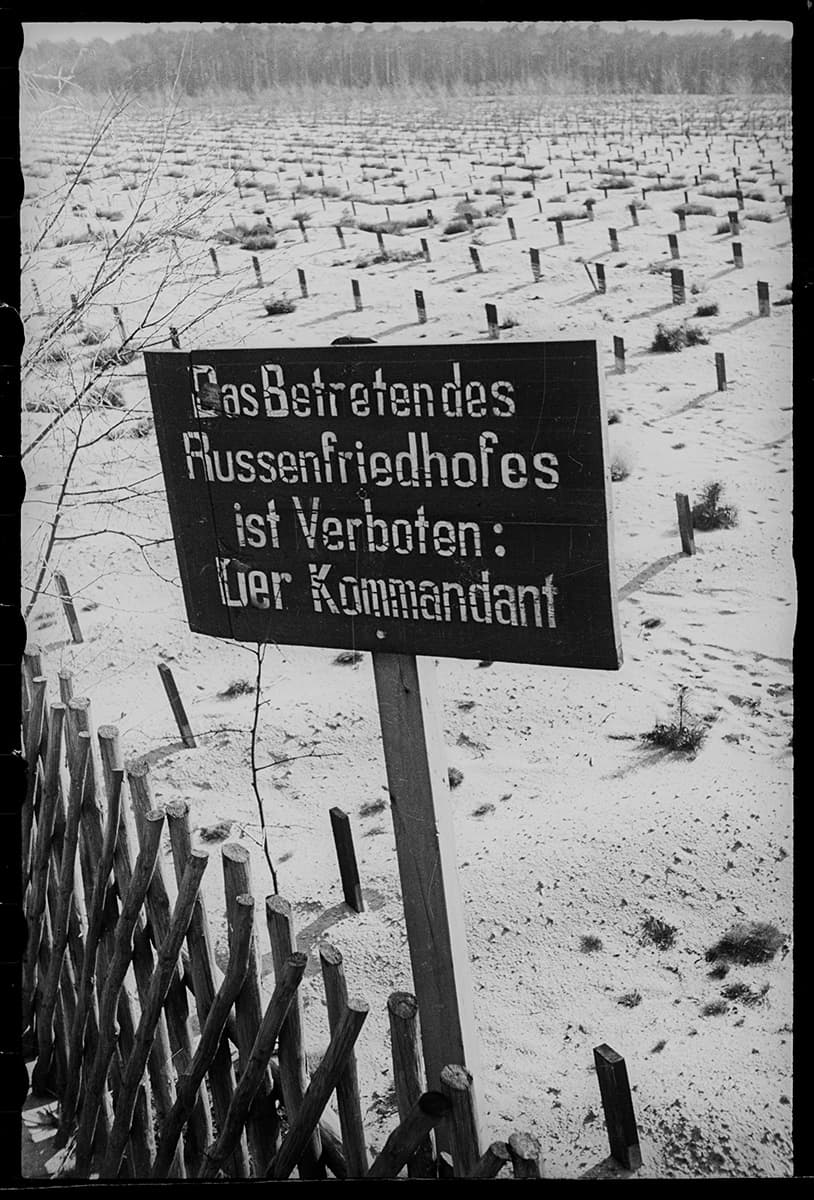
Majdanek concentration camp. Cemetery of Russian prisoners. Near Lublin, Poland. After 22 July 1944
Majdanek concentration camp. Cemetery of Russian prisoners. Near Lublin, Poland. After 22 July 1944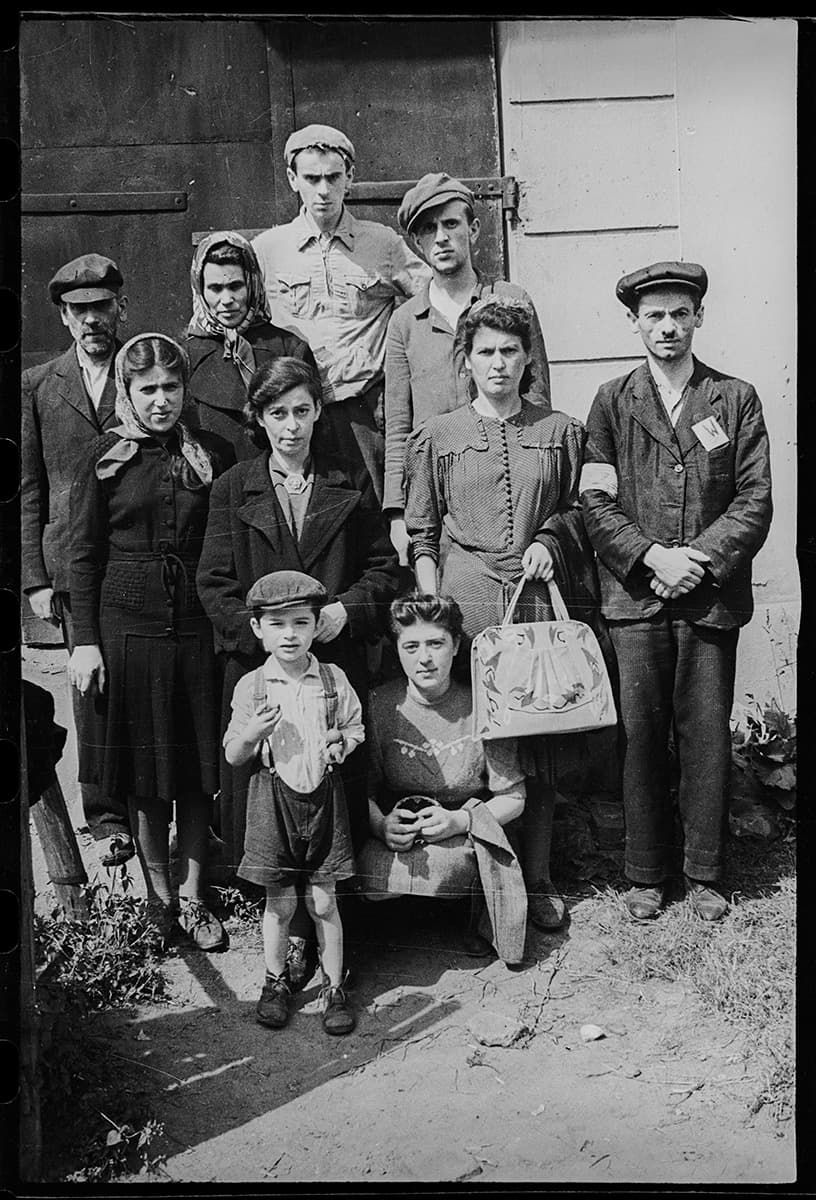
Civilians returning from the suburbs to liberated Volodymyr-Volynskyi. 1st Ukrainian Front, Ukraine. Late July - early August 1944
Civilians returning from the suburbs to liberated Volodymyr-Volynskyi. 1st Ukrainian Front, Ukraine. Late July - early August 1944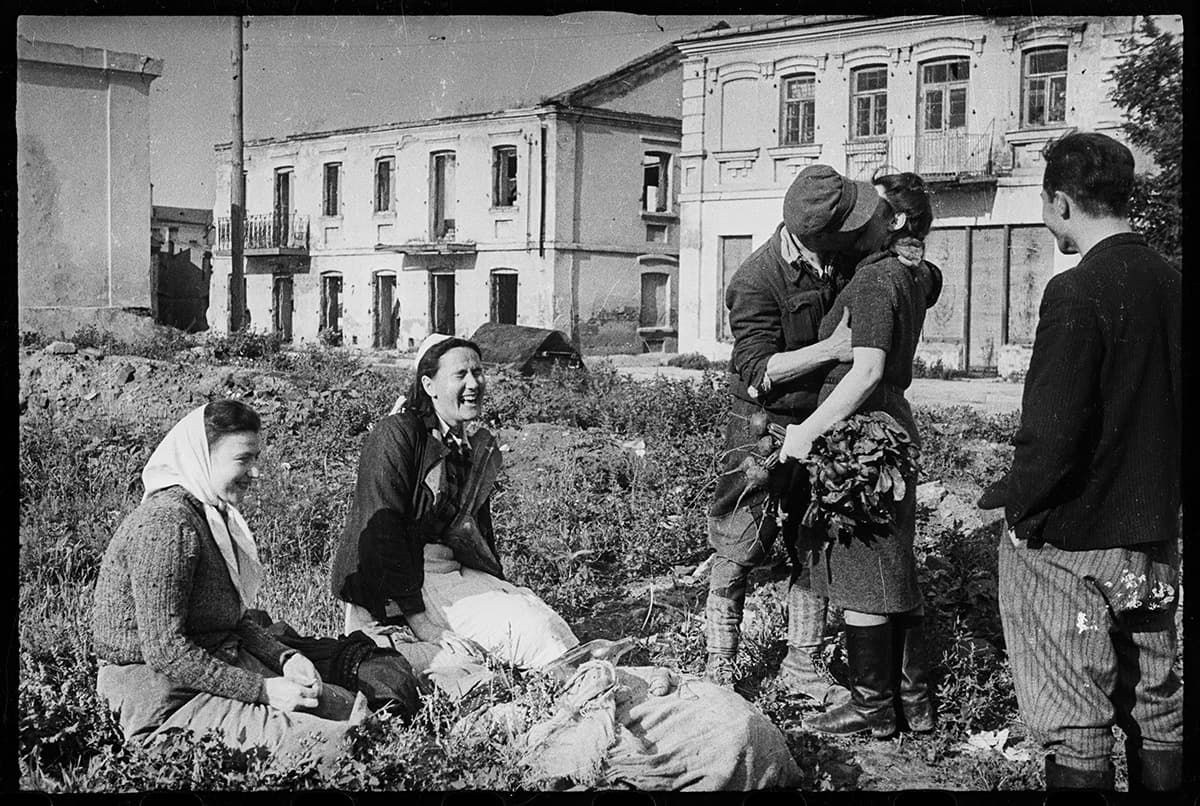
Civilians returning from the suburbs to liberated Volodymyr-Volynskyi. 1st Ukrainian Front, Ukraine. Late July - early August 1944
Civilians returning from the suburbs to liberated Volodymyr-Volynskyi. 1st Ukrainian Front, Ukraine. Late July - early August 1944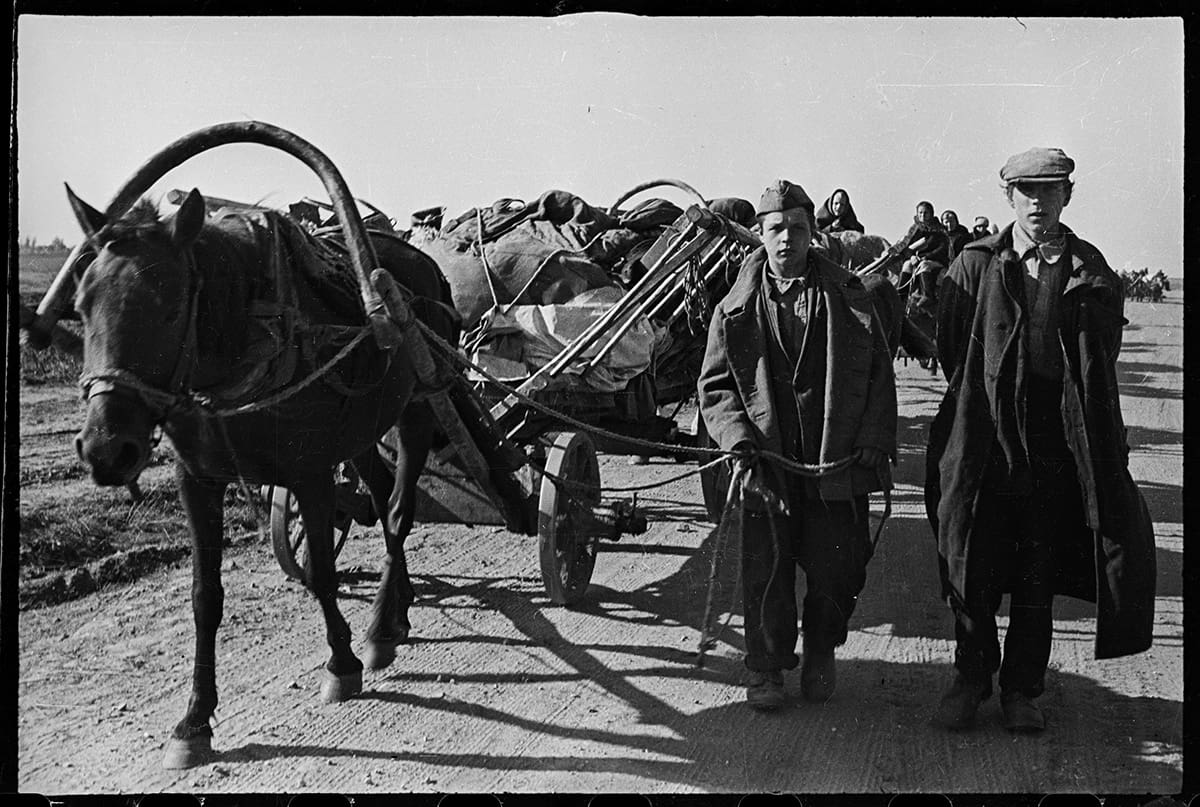
Residents return to liberated villages and towns. The exact date and place of filming are unknown
Residents return to liberated villages and towns. The exact date and place of filming are unknown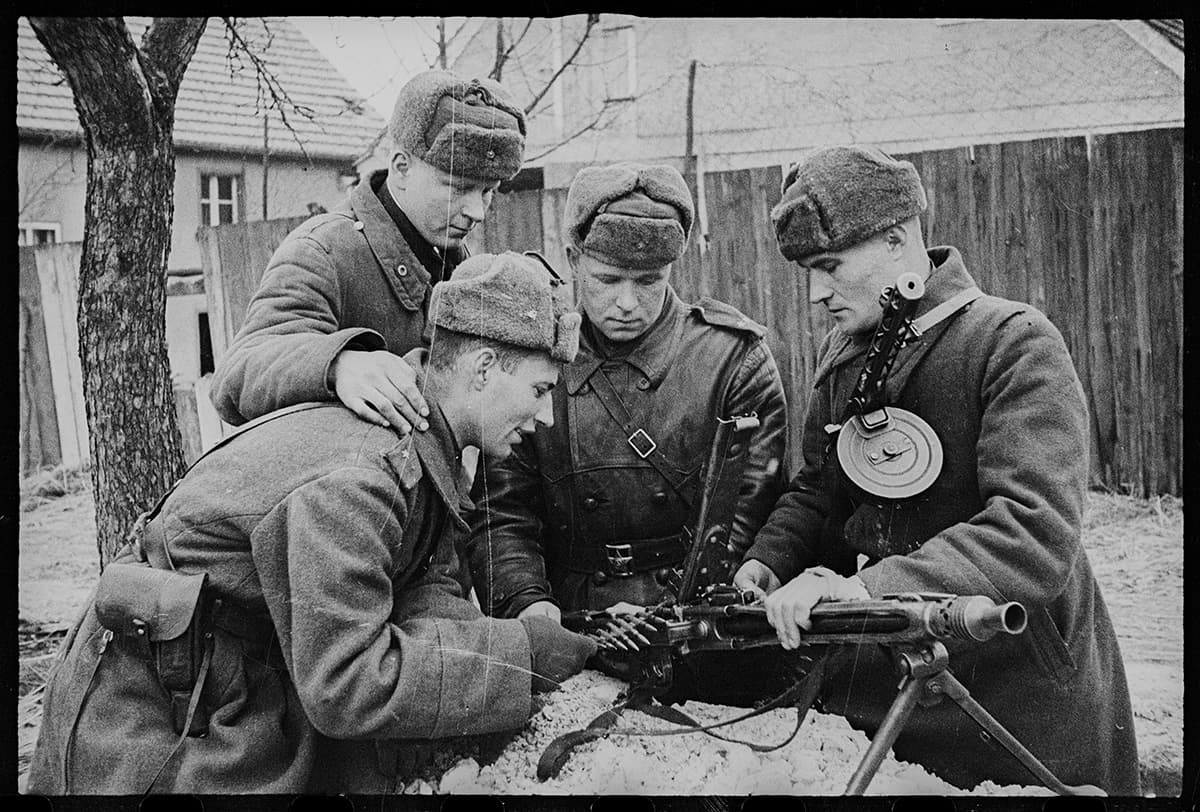
Soviet officers looking at a captured German MG-42 machine gun. Lieutenant Colonel Tarasov's unit on the Neisse River. 1st Ukrainian Front, Neisse river, Germany. 1944
Soviet officers looking at a captured German MG-42 machine gun. Lieutenant Colonel Tarasov's unit on the Neisse River. 1st Ukrainian Front, Neisse river, Germany. 1944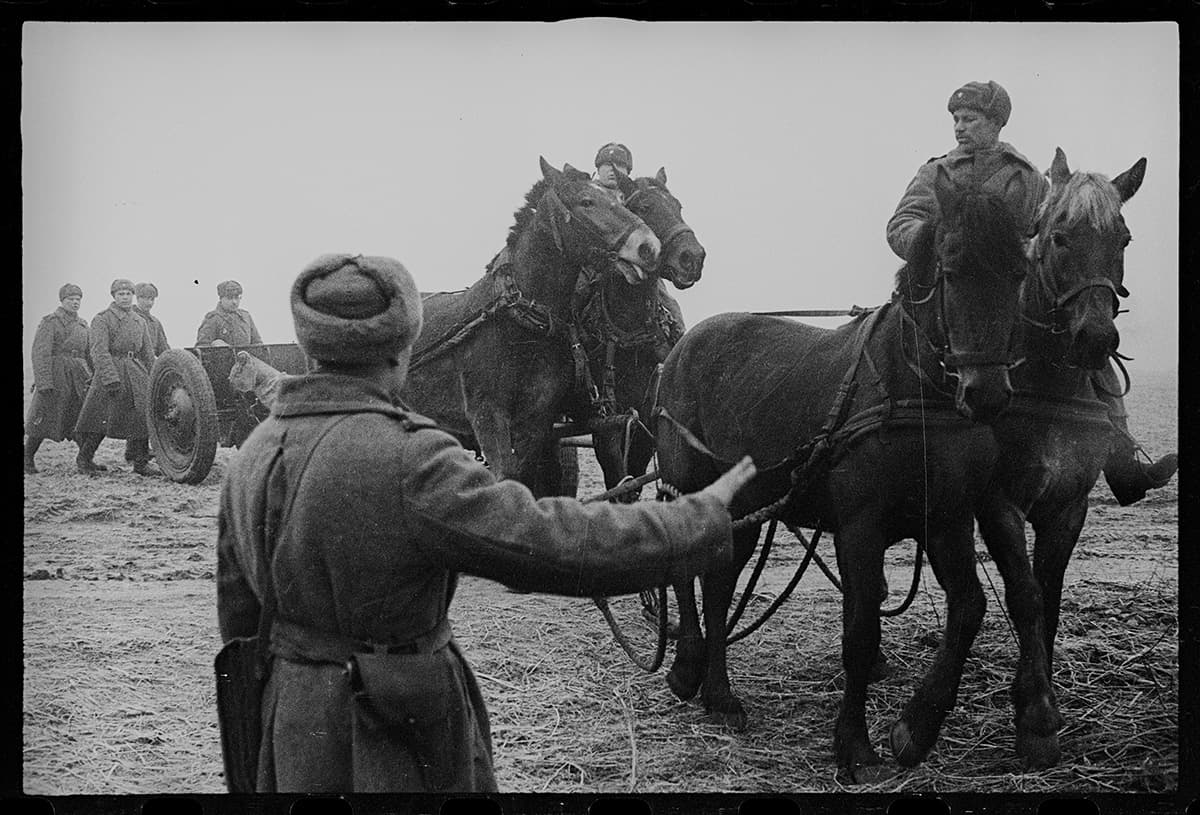
Colonel Tarasov's rifle unit. 1st Ukrainian Front. 1944
Colonel Tarasov's rifle unit. 1st Ukrainian Front. 1944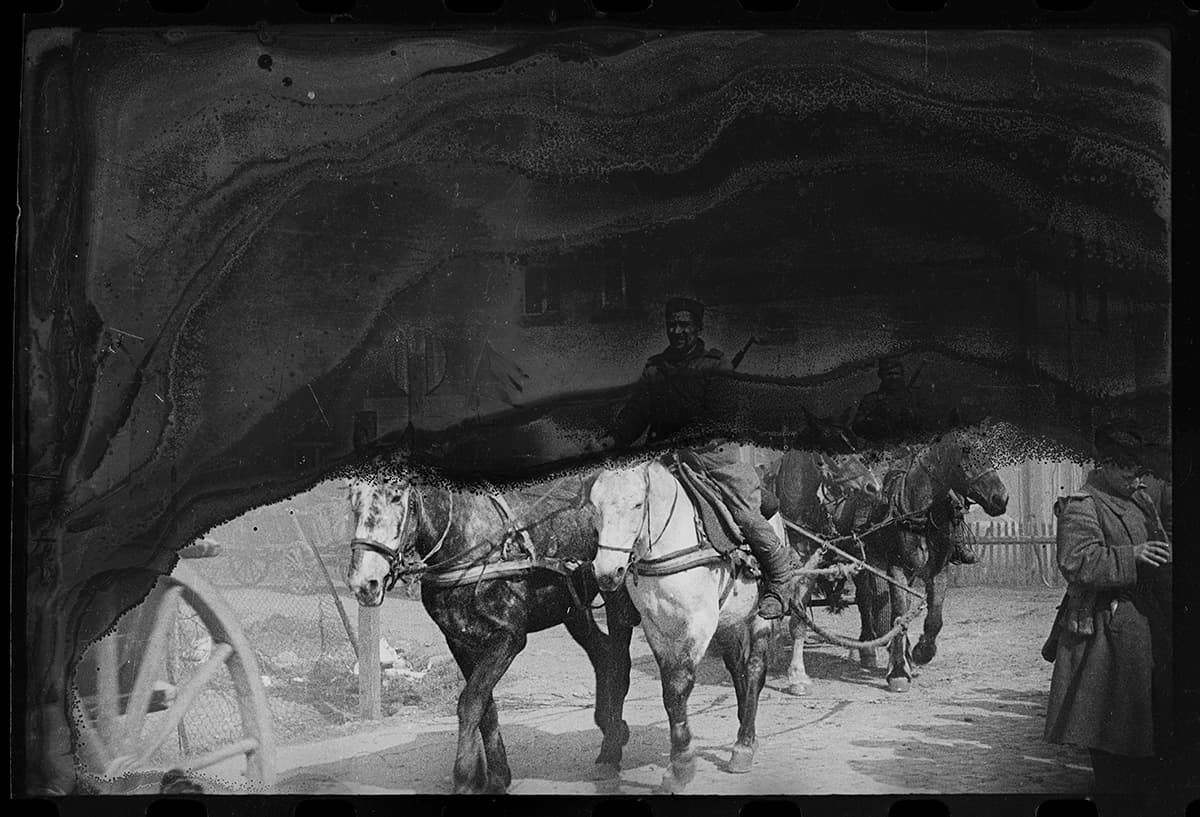
In the area of the Neisse River crossing. The 1st Ukrainian Front, Germany. April 1945 (negative damaged by mould)
In the area of the Neisse River crossing. The 1st Ukrainian Front, Germany. April 1945 (negative damaged by mould)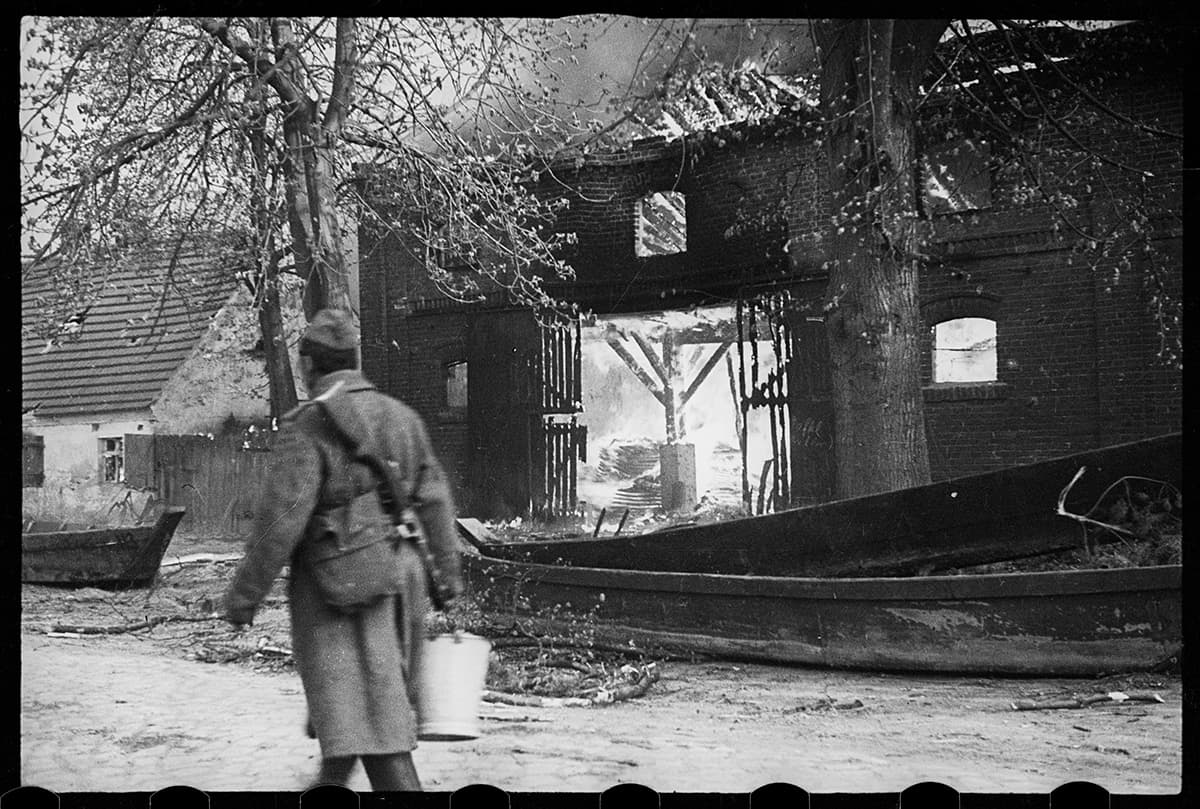
In the area of the Neisse River crossing. 1st Ukrainian Front, Germany. April 1945
In the area of the Neisse River crossing. 1st Ukrainian Front, Germany. April 1945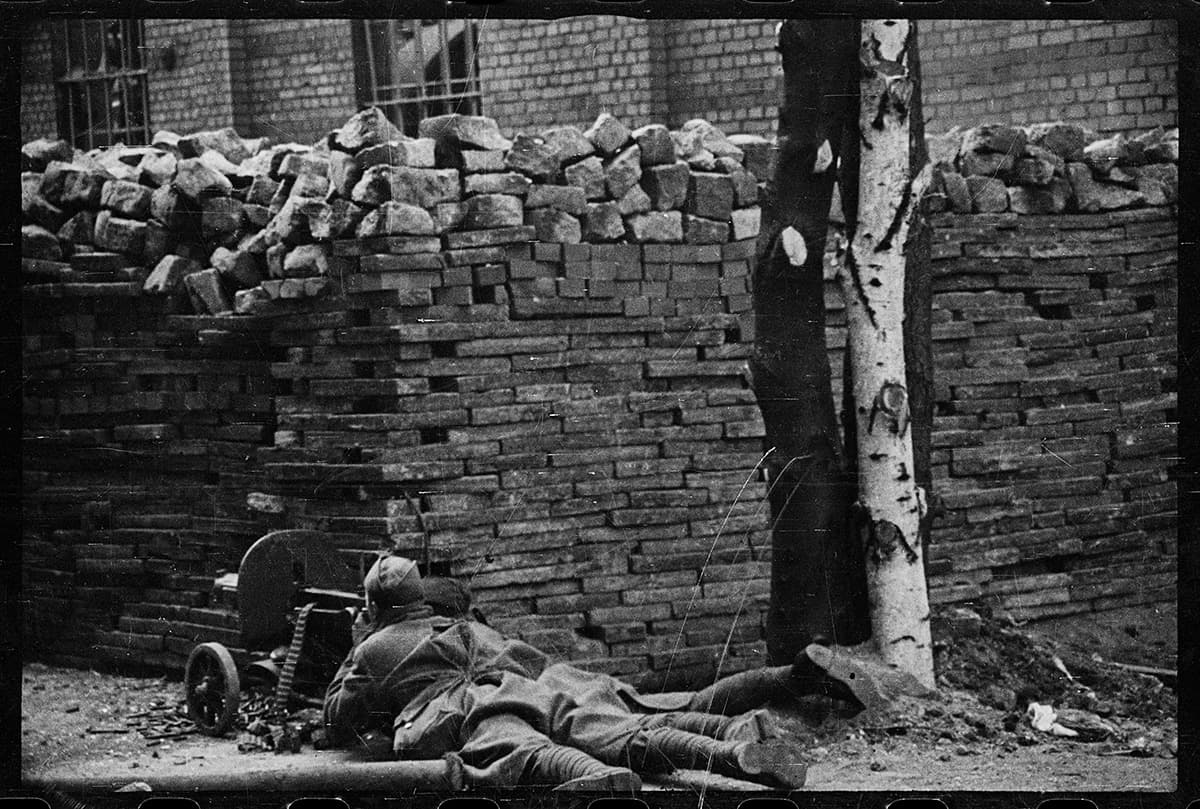
Soviet machine gunners fighting on the outskirts of Forst. Forst, Germany. 1945
Soviet machine gunners fighting on the outskirts of Forst. Forst, Germany. 1945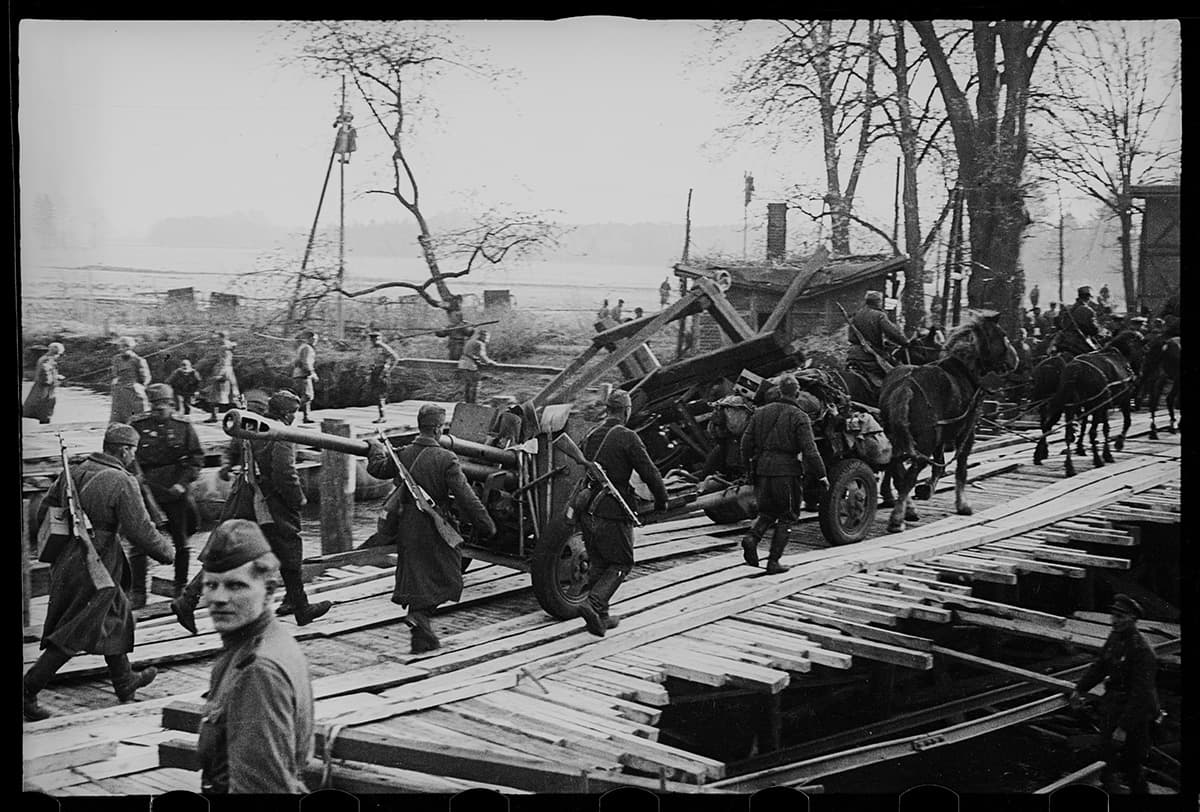
Panton crossing of the Neisse River. 1st Ukrainian Front, Germany. April 1945
Panton crossing of the Neisse River. 1st Ukrainian Front, Germany. April 1945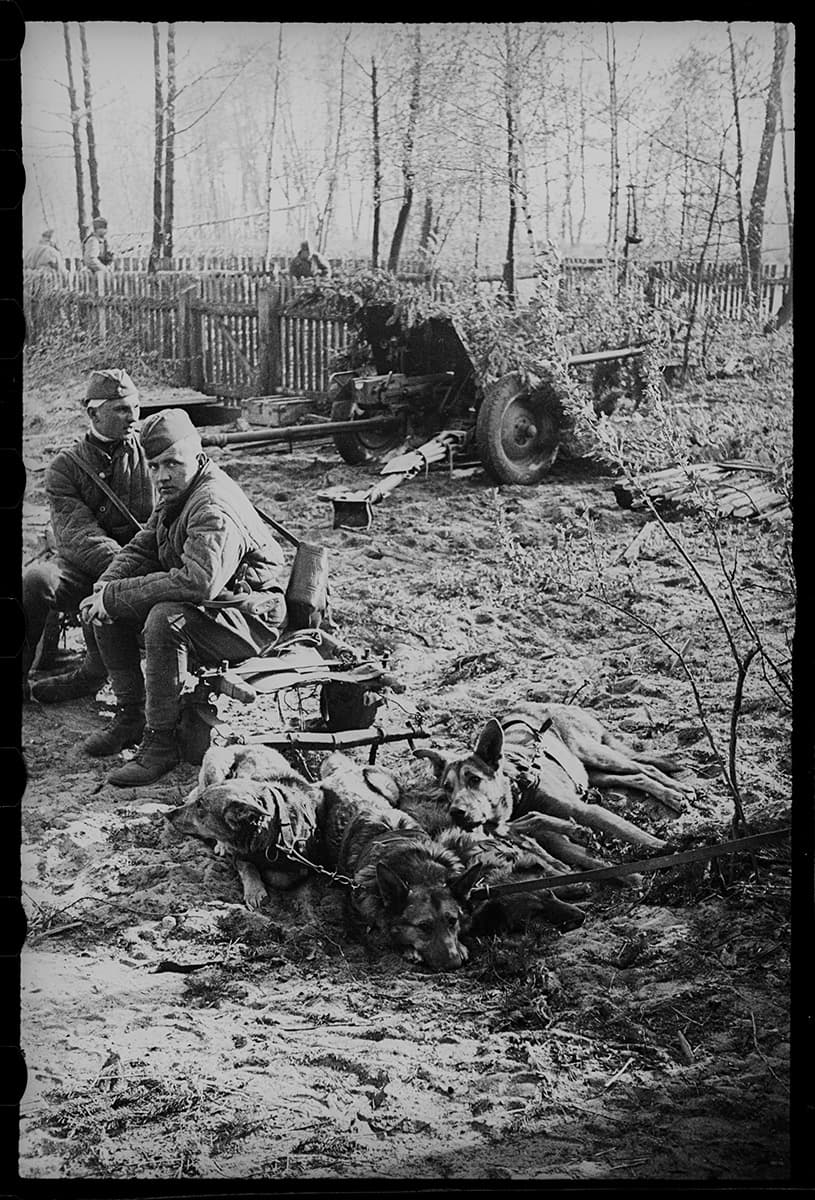
In the area of the Neisse River crossing. 1st Ukrainian Front, Germany. April 1945
In the area of the Neisse River crossing. 1st Ukrainian Front, Germany. April 1945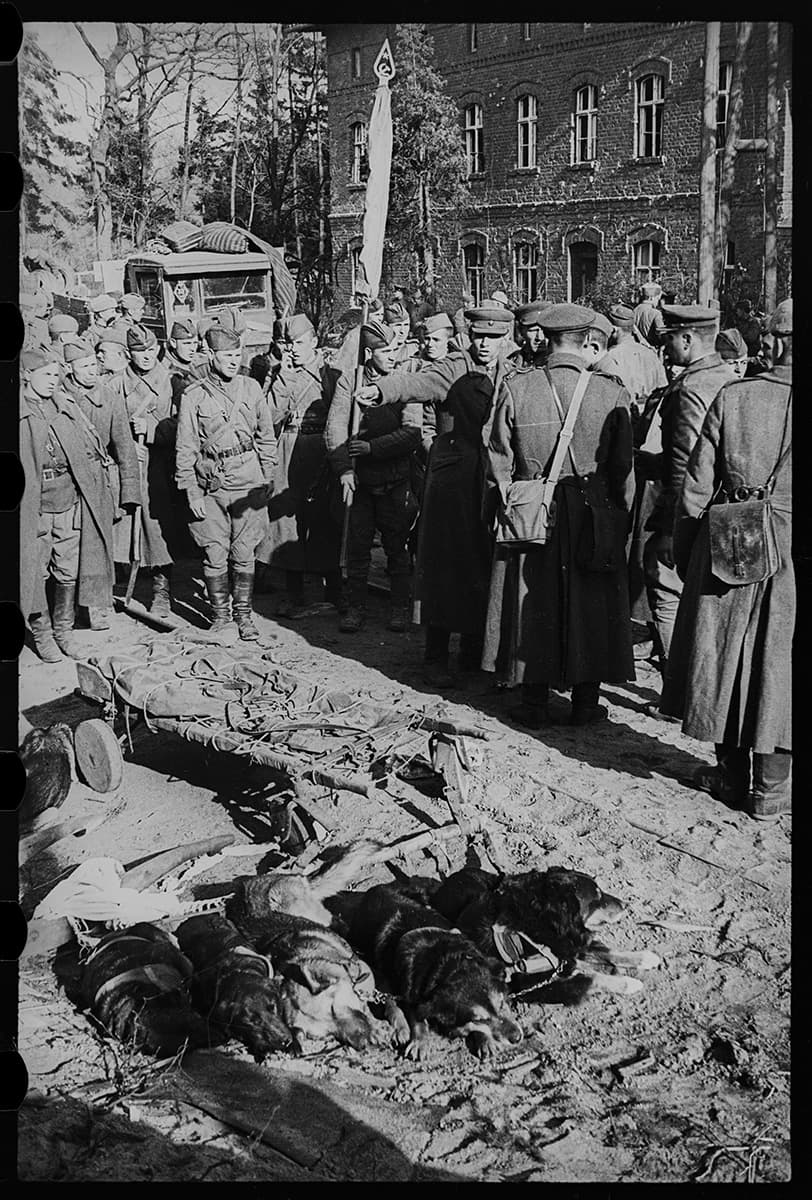
In the area of the Neisse River crossing. 1st Ukrainian Front, Germany. April 1945
In the area of the Neisse River crossing. 1st Ukrainian Front, Germany. April 1945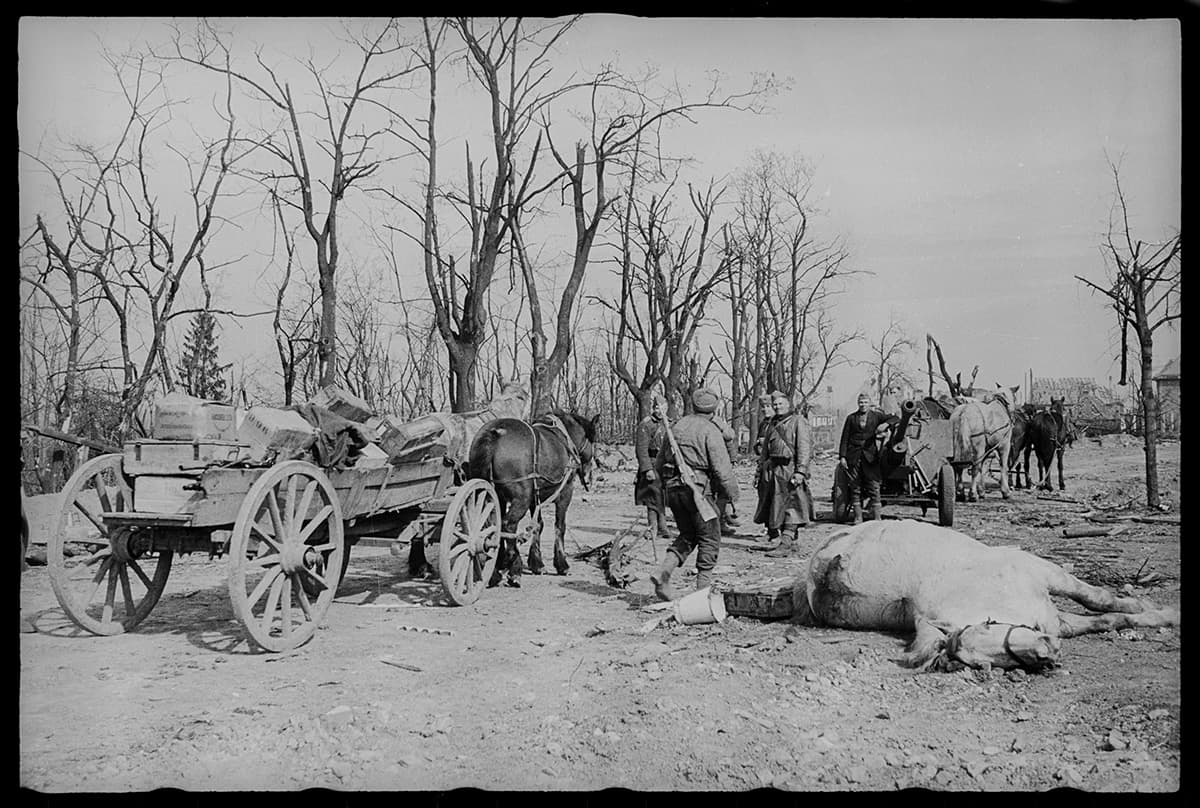
A street scene in a ruined city. Forst, Germany. 1945
A street scene in a ruined city. Forst, Germany. 1945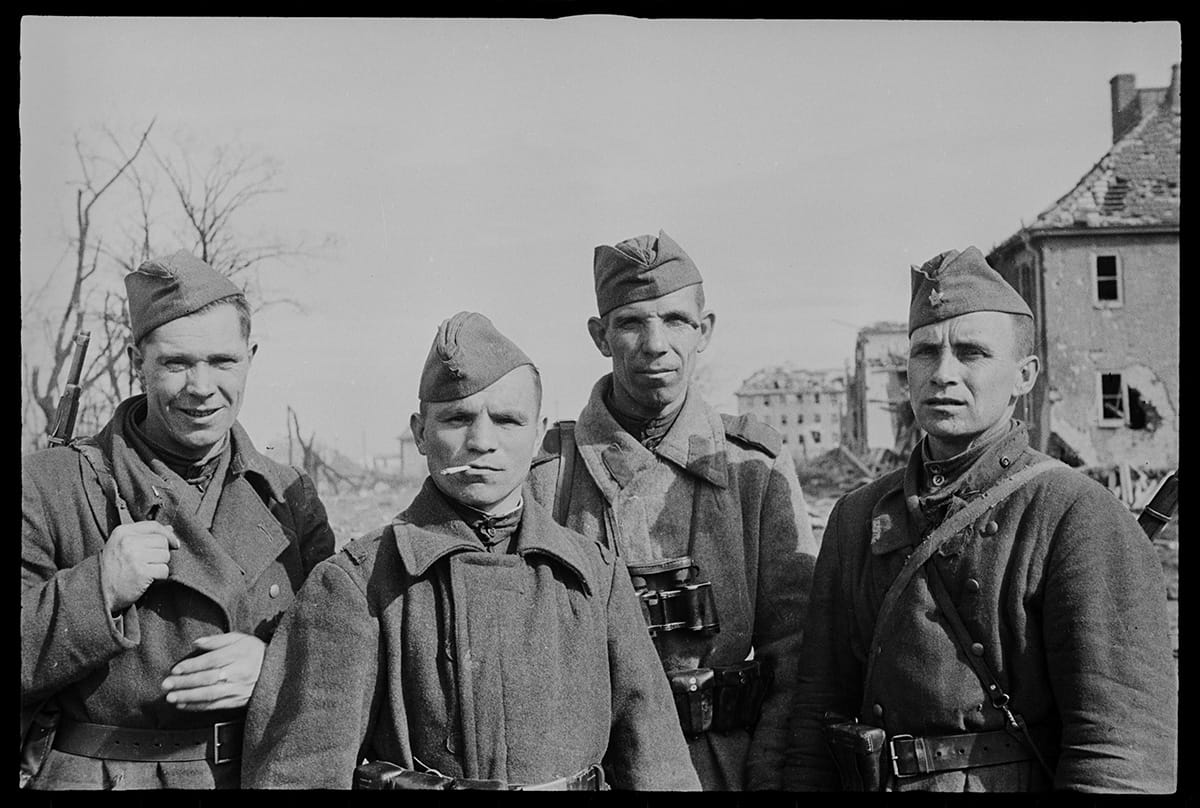
Portrait of Red Army soldiers. Forst, Germany. April 1945
Portrait of Red Army soldiers. Forst, Germany. April 1945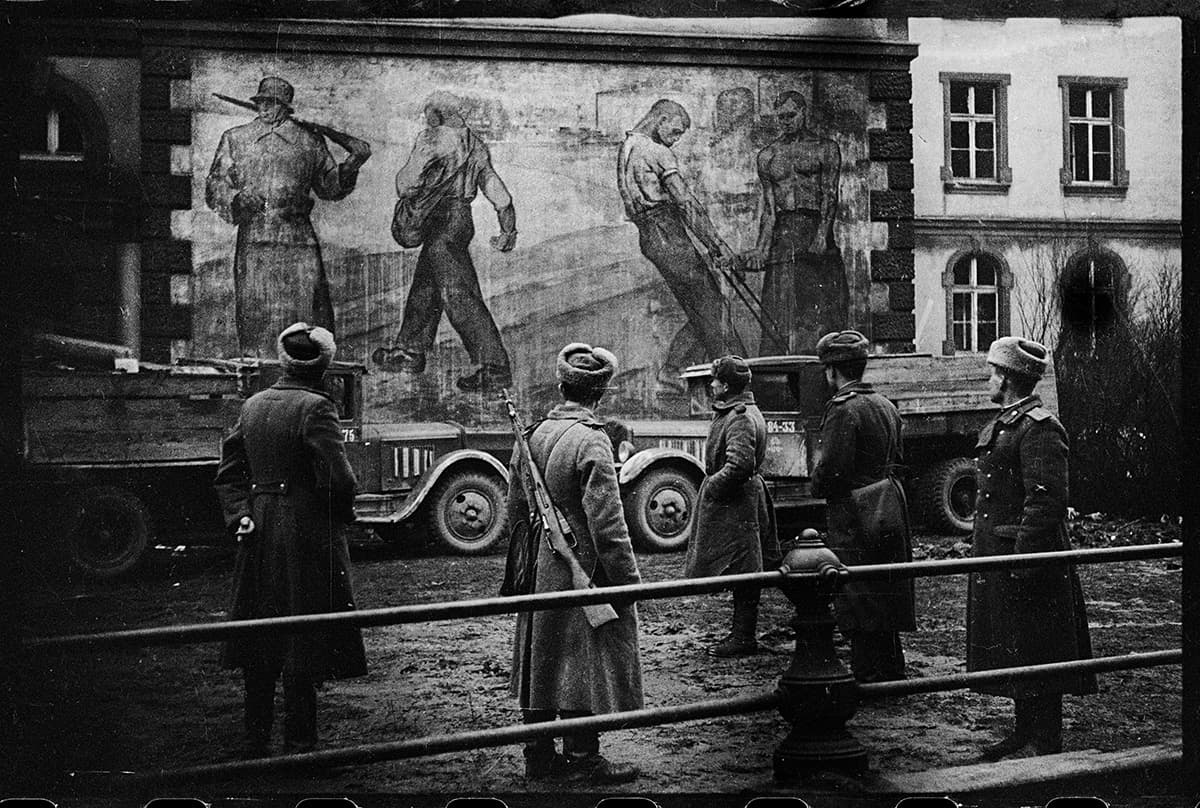
Reconstruction of coal mines in Poland. Poland. 1944-45
Reconstruction of coal mines in Poland. Poland. 1944-45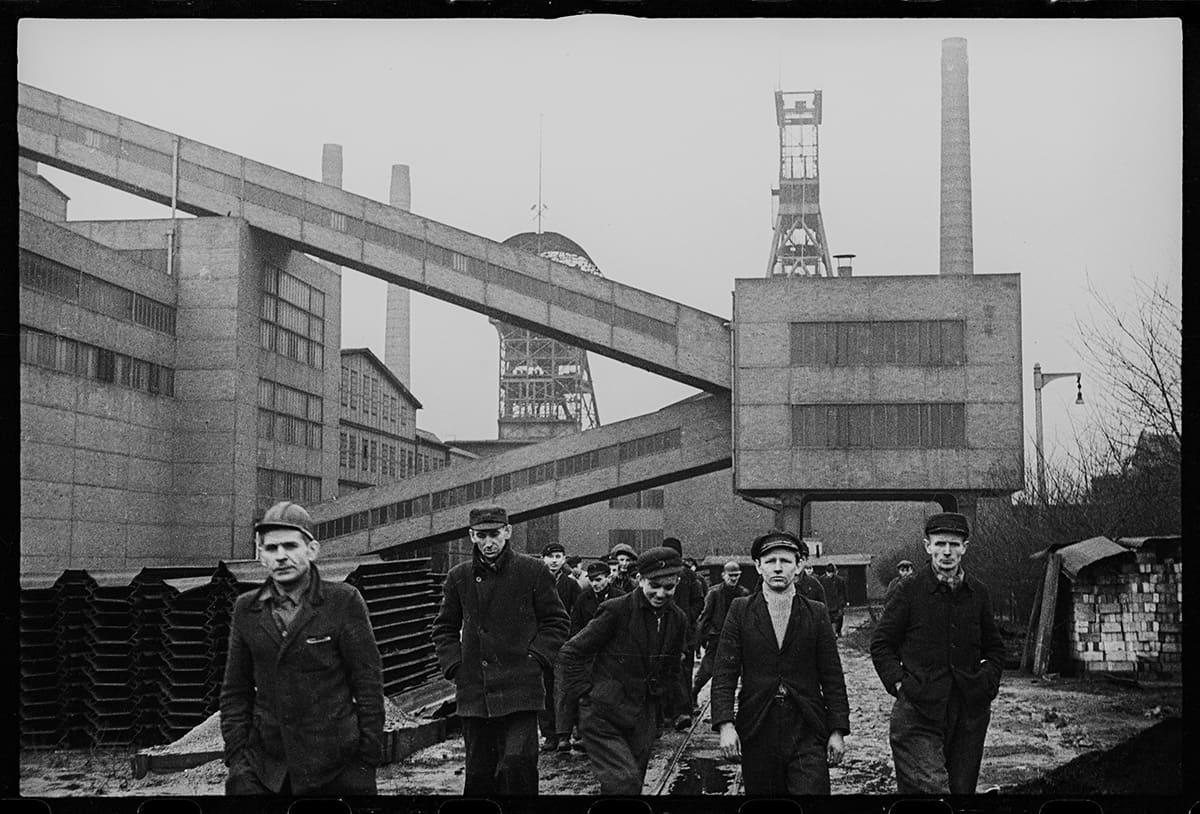
Reconstruction of coal mines in Poland. Poland. 1944-45
Reconstruction of coal mines in Poland. Poland. 1944-45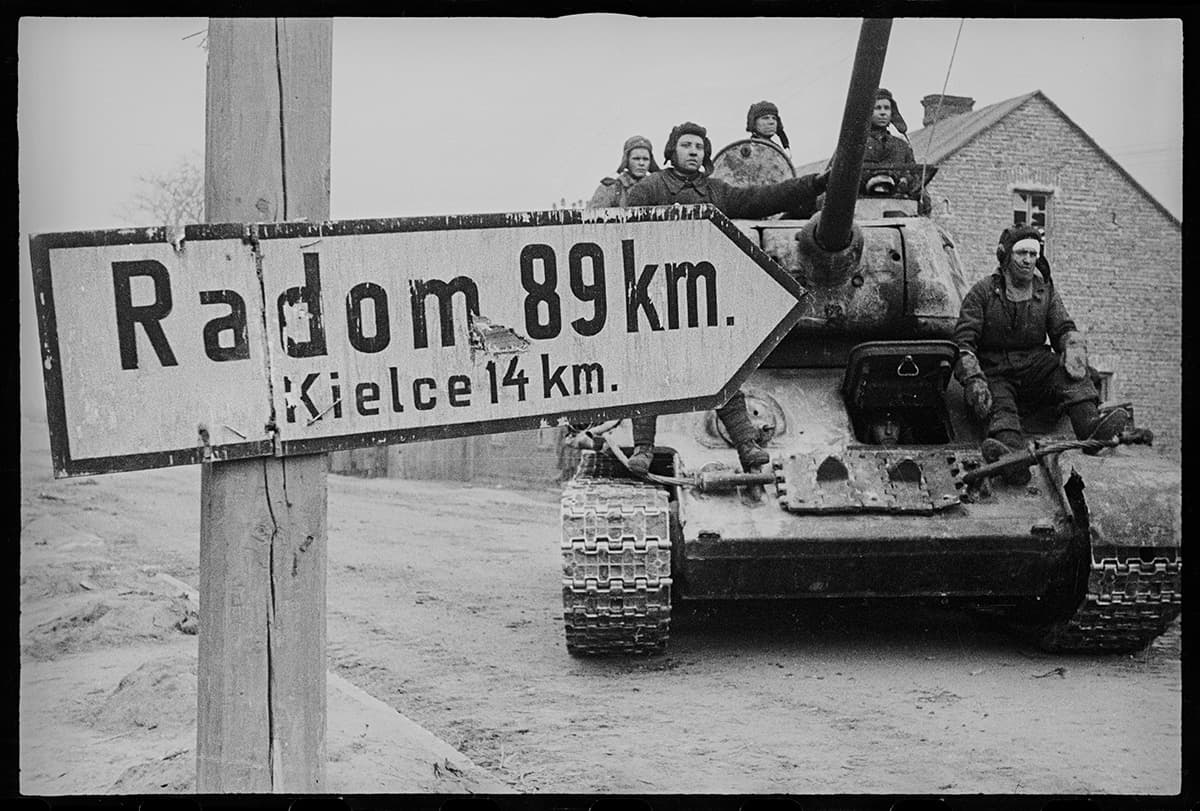
A Soviet tank near the German road sign Radom 89 km. On the road to Kielce, Poland. 1945
A Soviet tank near the German road sign Radom 89 km. On the road to Kielce, Poland. 1945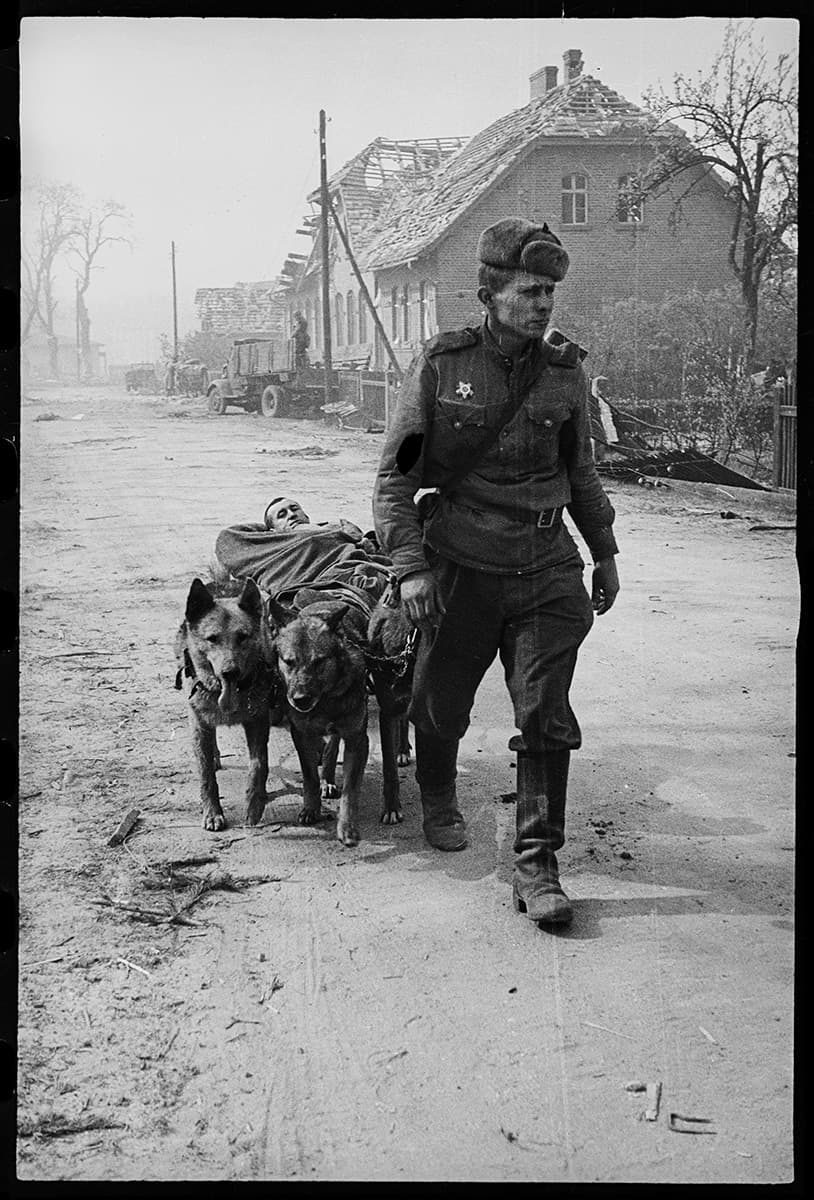
Transporting the wounded. The 1st Ukrainian Front. 1945
Transporting the wounded. The 1st Ukrainian Front. 1945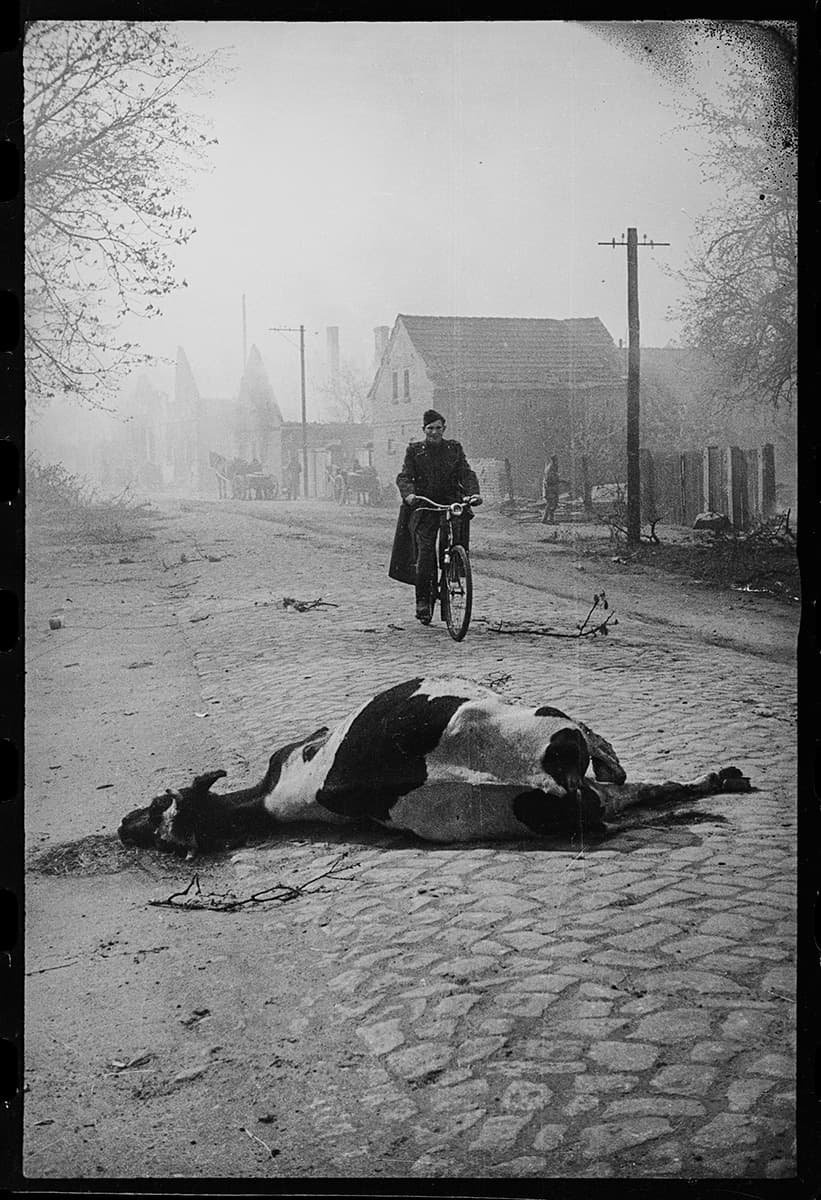
In the area of the Neisse River crossing. 1st Ukrainian Front, Germany. April 1945
In the area of the Neisse River crossing. 1st Ukrainian Front, Germany. April 1945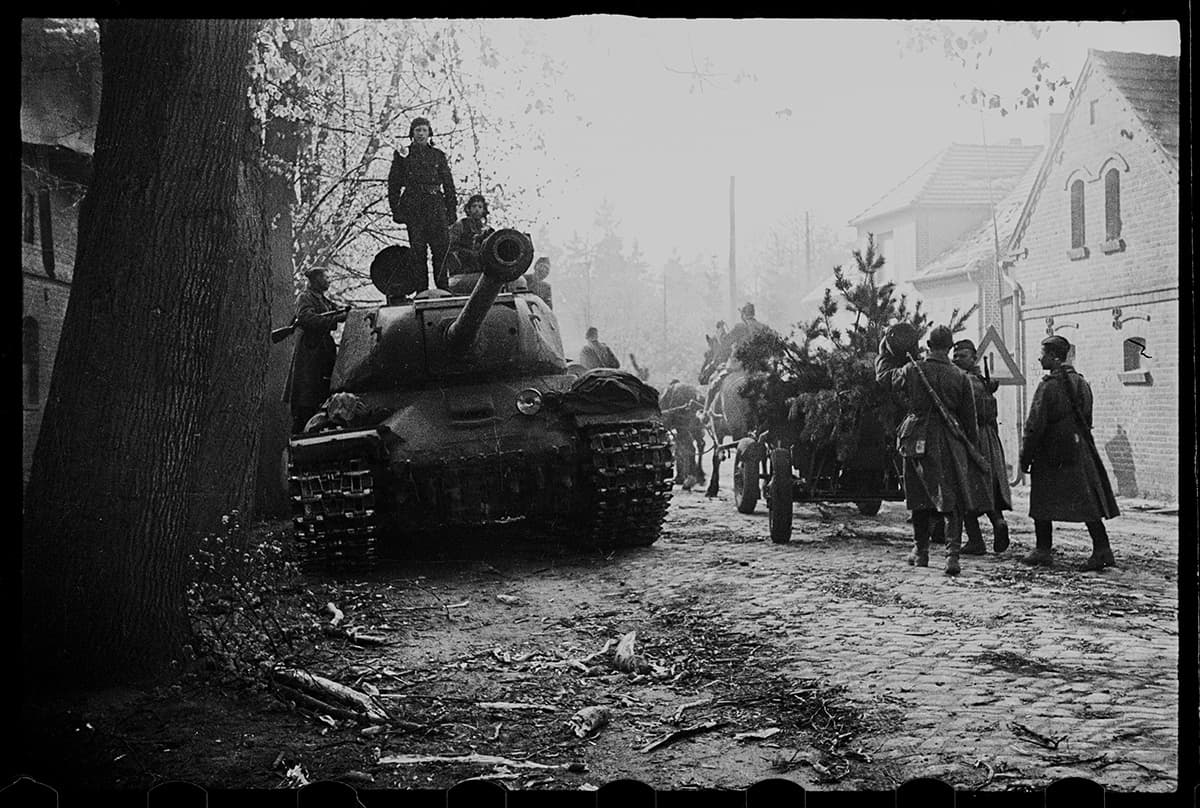
An IS-2 tank and a horse-drawn carriage carrying a camouflaged ZIS-3 divisional cannon near the Neisse River. The 1st Ukrainian Front, Germany. April 1945
An IS-2 tank and a horse-drawn carriage carrying a camouflaged ZIS-3 divisional cannon near the Neisse River. The 1st Ukrainian Front, Germany. April 1945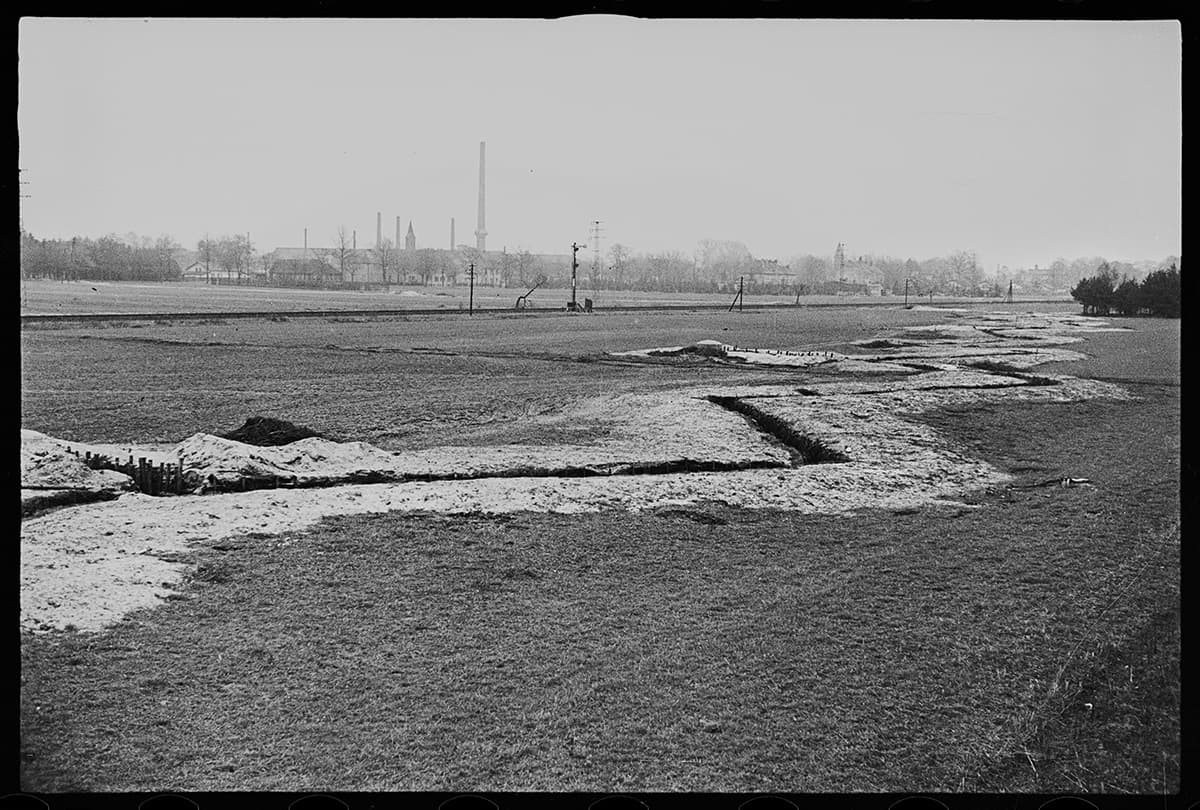
German fortification line on the road to Gleiwitz. Poland. 1945
German fortification line on the road to Gleiwitz. Poland. 1945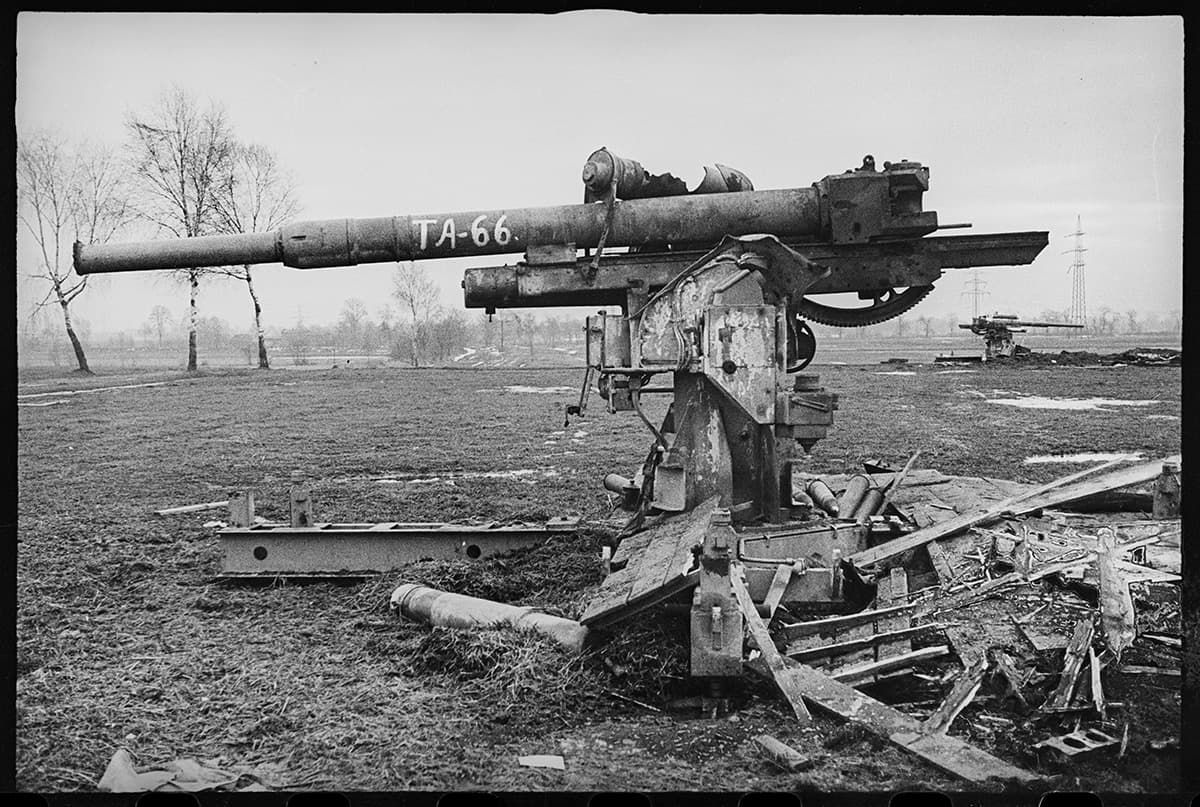
Return. A blown up German 10.5cm Flak 38 air defence gun. Germany. 1944-1945
Return. A blown up German 10.5cm Flak 38 air defence gun. Germany. 1944-1945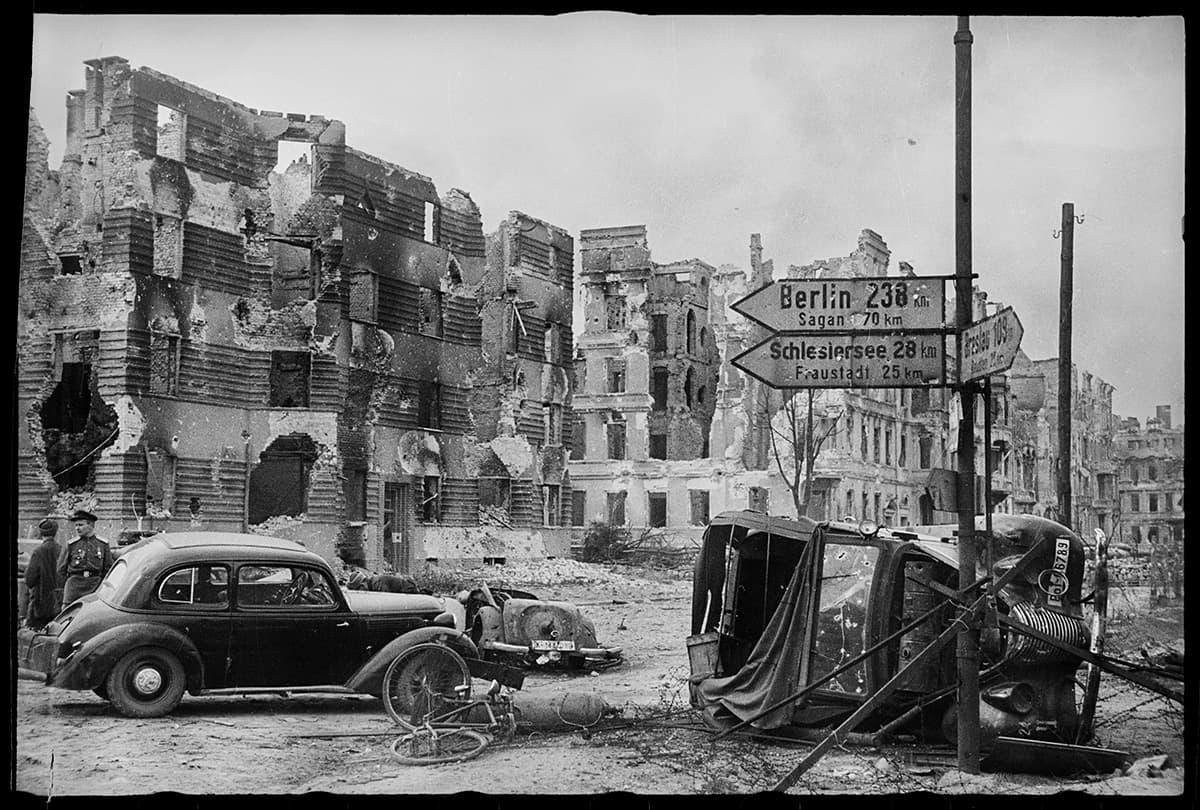
The captured fortress city of Głogów. Glogau, Germany (now Glogów, Poland). March-April 1945
The captured fortress city of Głogów. Glogau, Germany (now Glogów, Poland). March-April 1945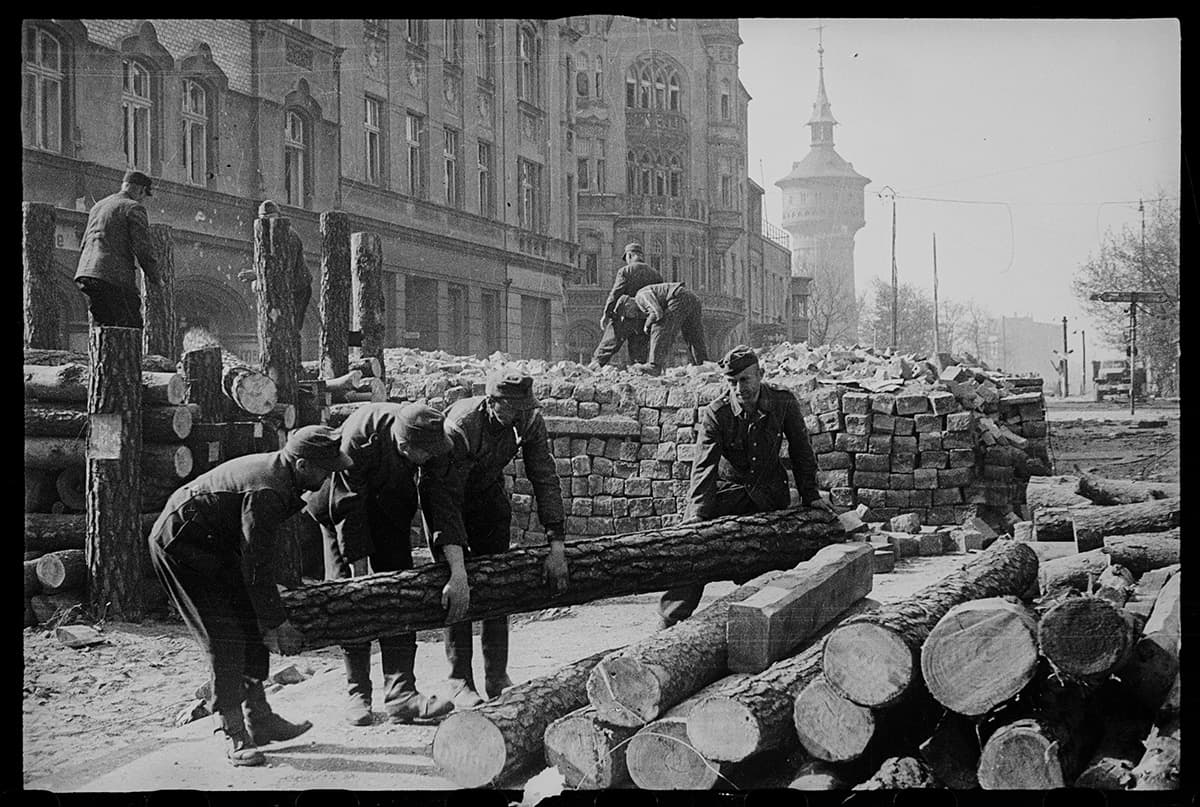
Captured Germans rebuild the city. Forst, Germany. 1945
Captured Germans rebuild the city. Forst, Germany. 1945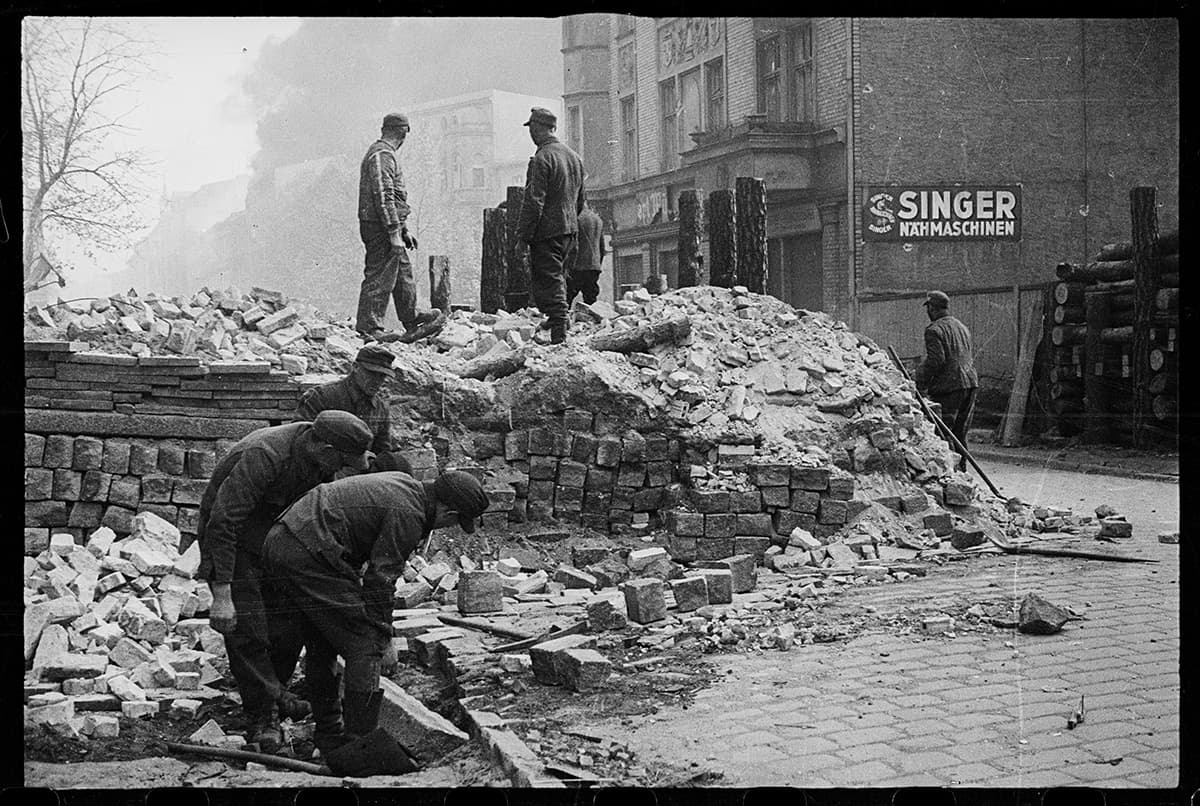
Captured Germans rebuild the city. Forst, Germany. 1945
Captured Germans rebuild the city. Forst, Germany. 1945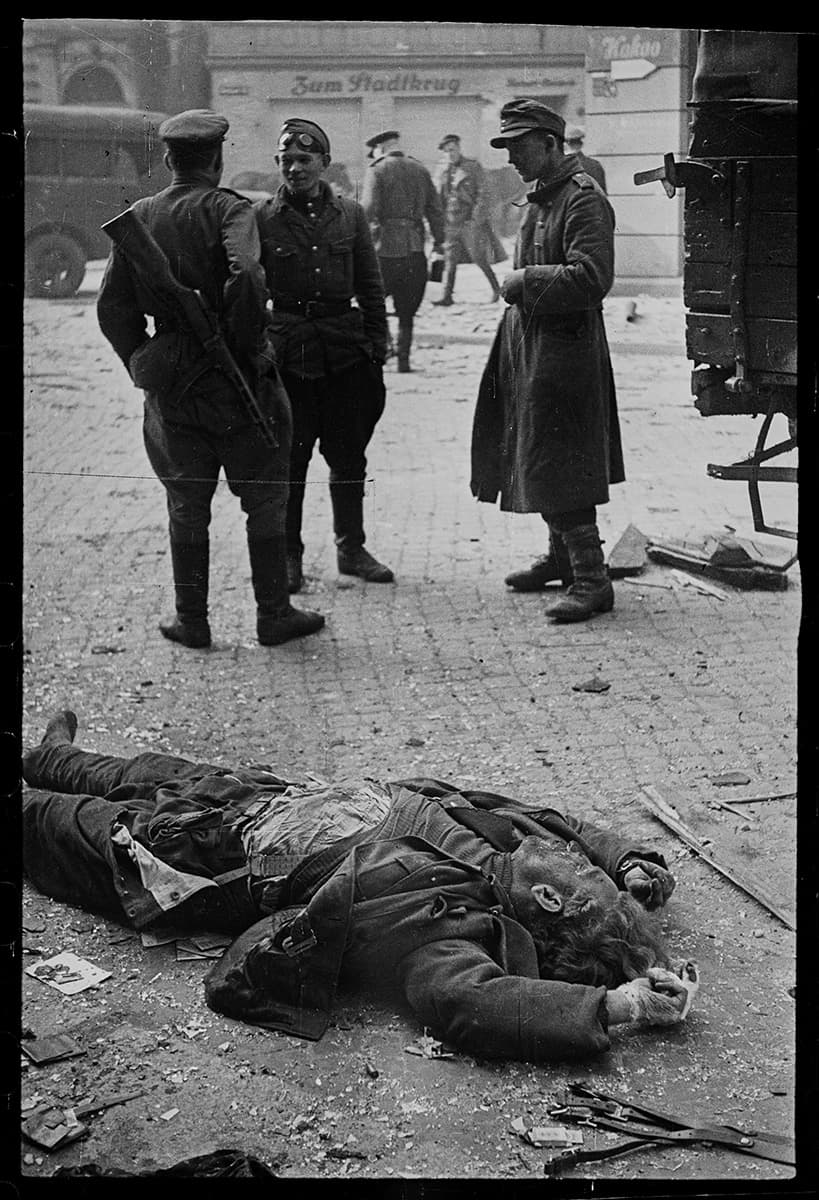
The town of Forst after capture by Soviet troops. Forst, Germany. April 1945
The town of Forst after capture by Soviet troops. Forst, Germany. April 1945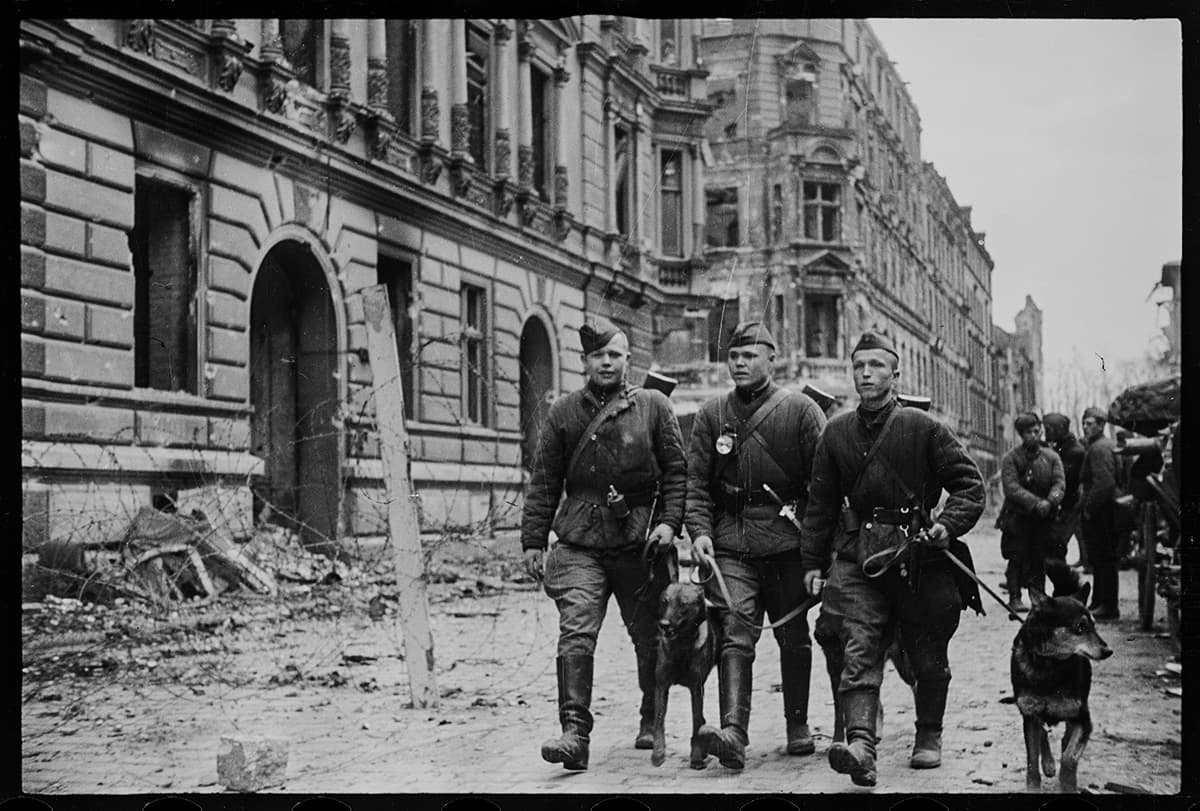
The town of Forst after capture by Soviet troops. Forst, Germany. April 1945
The town of Forst after capture by Soviet troops. Forst, Germany. April 1945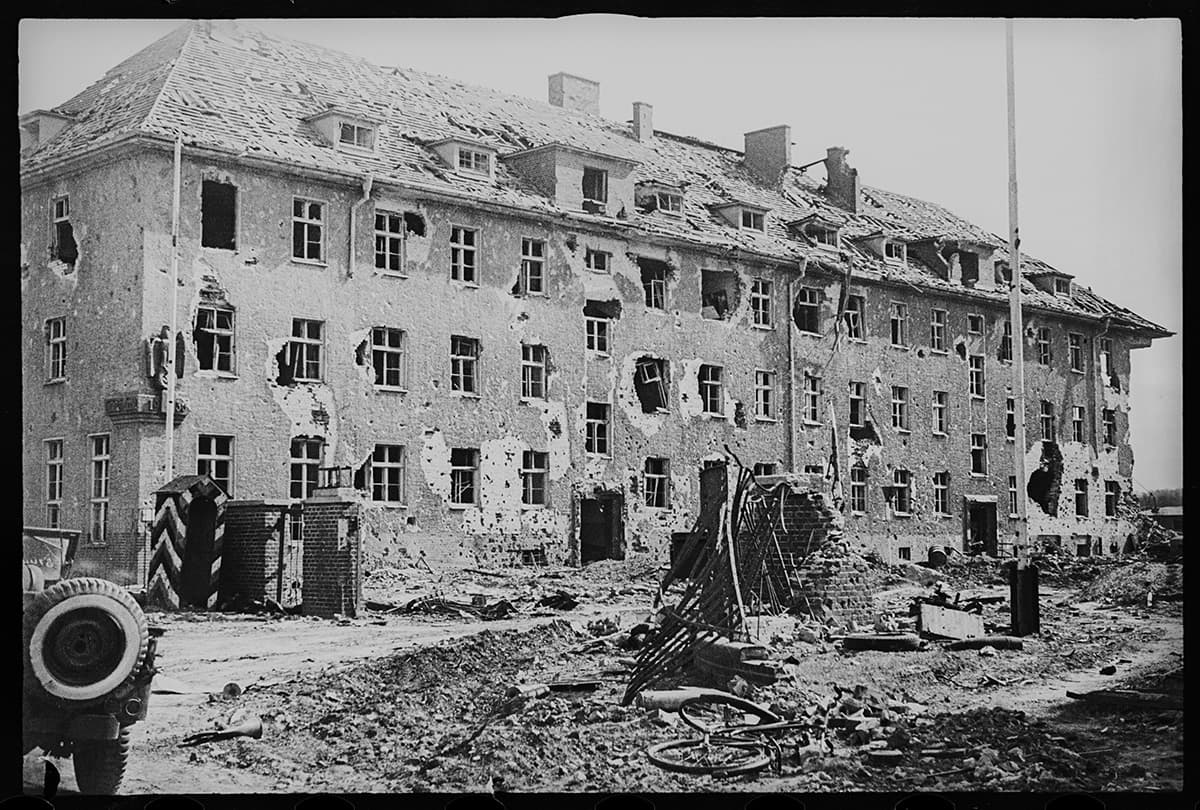
Destroyed Wehrmacht building. Forst, Germany. April 1945
Destroyed Wehrmacht building. Forst, Germany. April 1945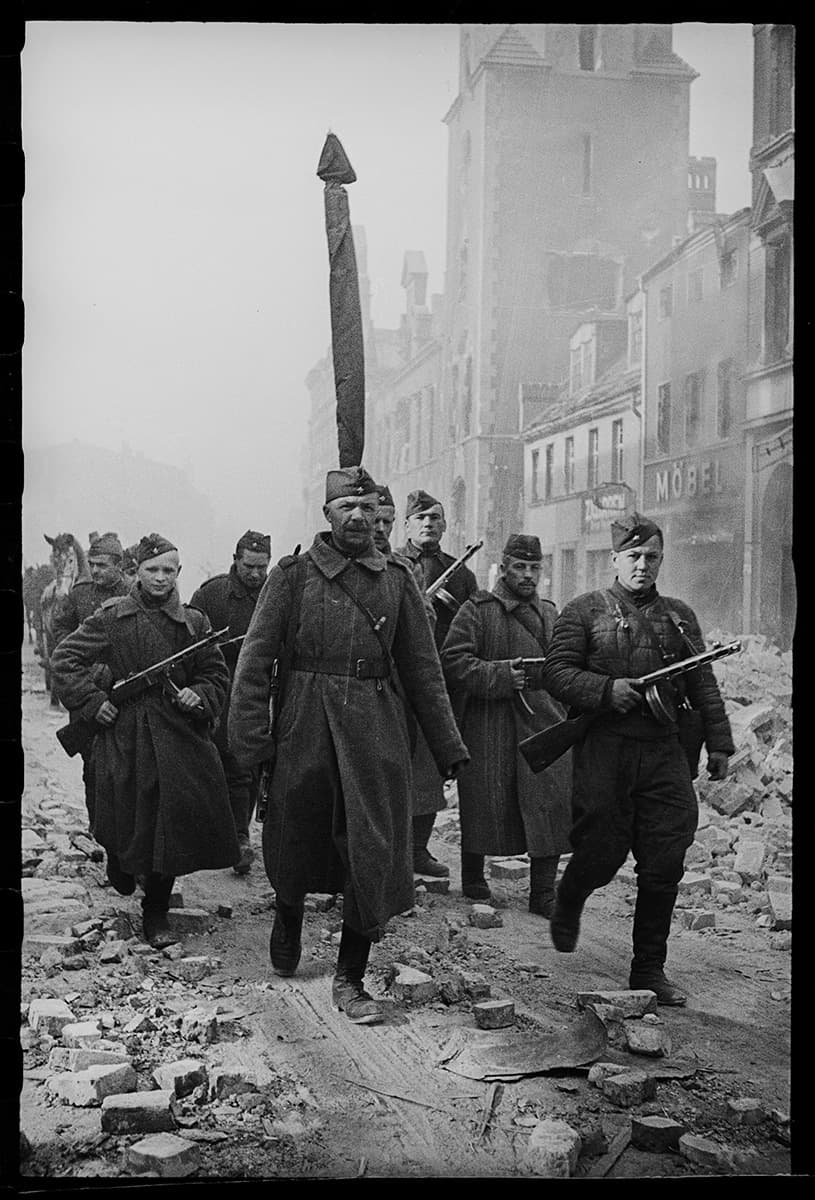
Entering the German town of Glogau. In captured Glogau. (now Glogów - Poland). Glogau, East Prussia. March-April 1945
Entering the German town of Glogau. In captured Glogau. (now Glogów - Poland). Glogau, East Prussia. March-April 1945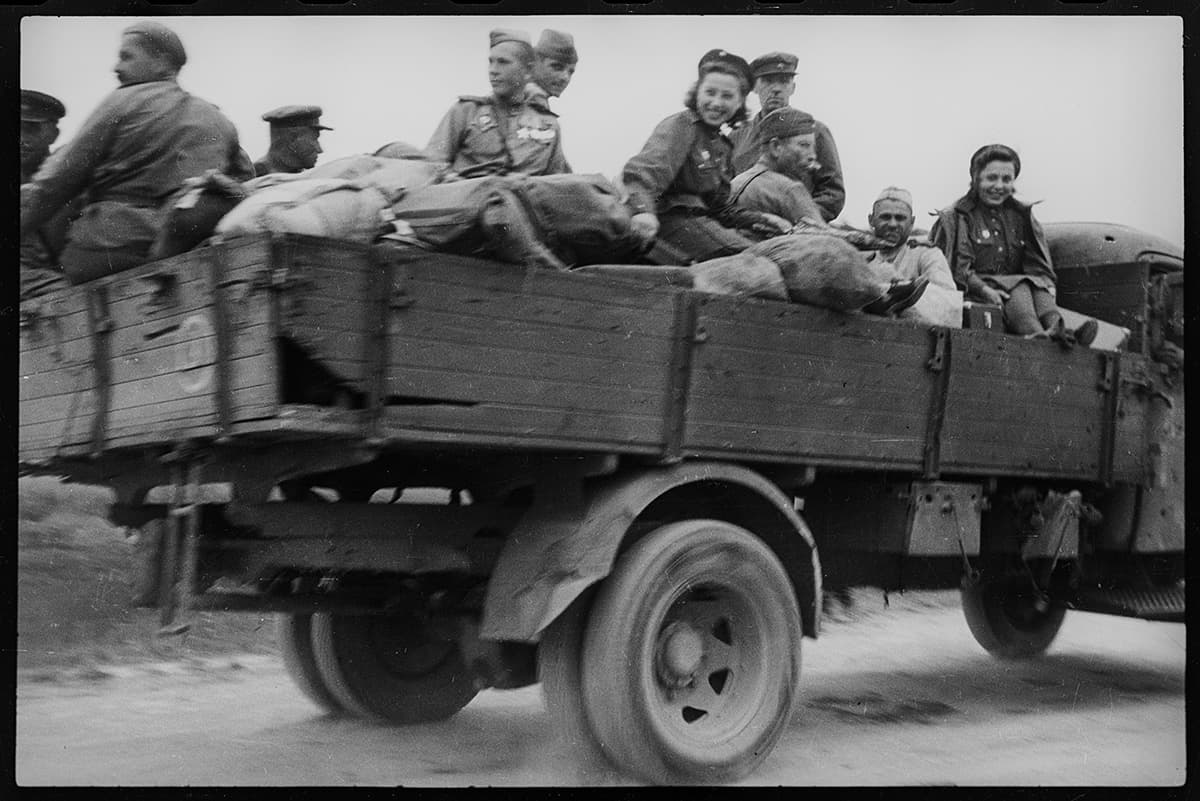
Saying goodbye to the demobilised. Vienna, Austria. 1945
Saying goodbye to the demobilised. Vienna, Austria. 1945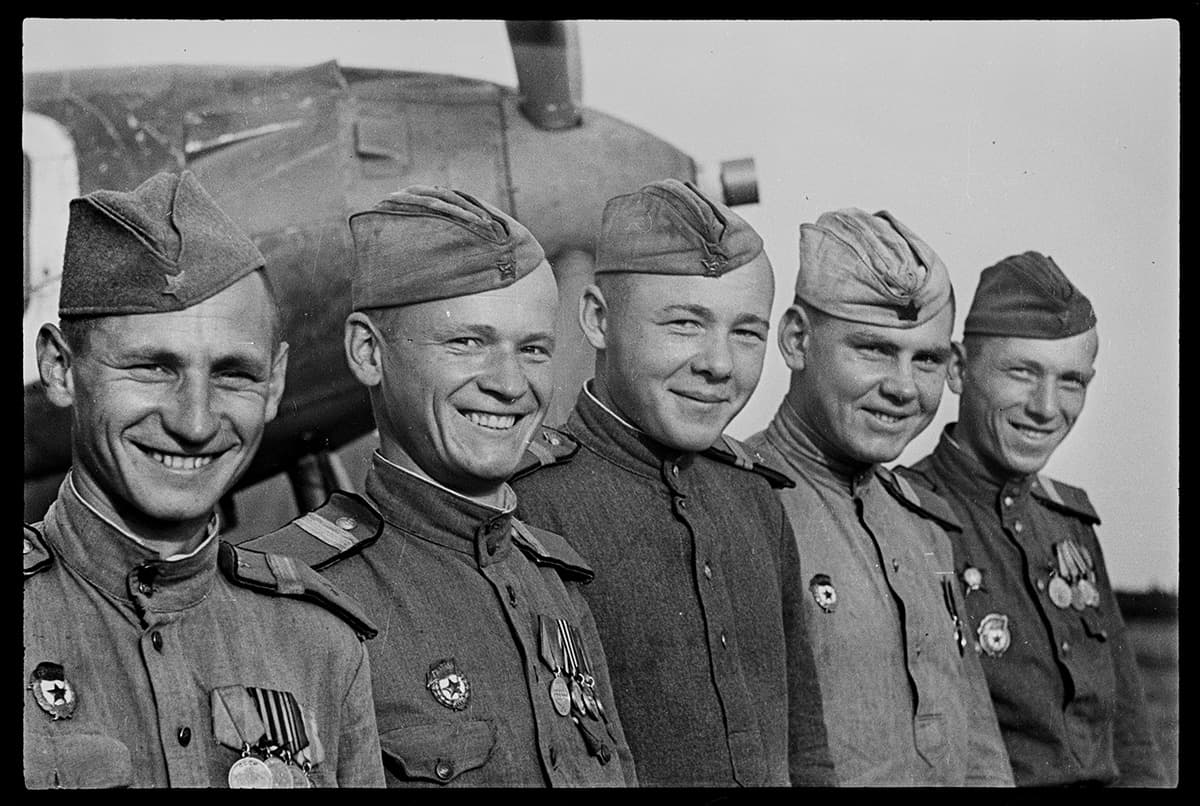
Soviet pilots in front of an American Bell P-39 "Aerocobra" plane. 1945
Soviet pilots in front of an American Bell P-39 "Aerocobra" plane. 1945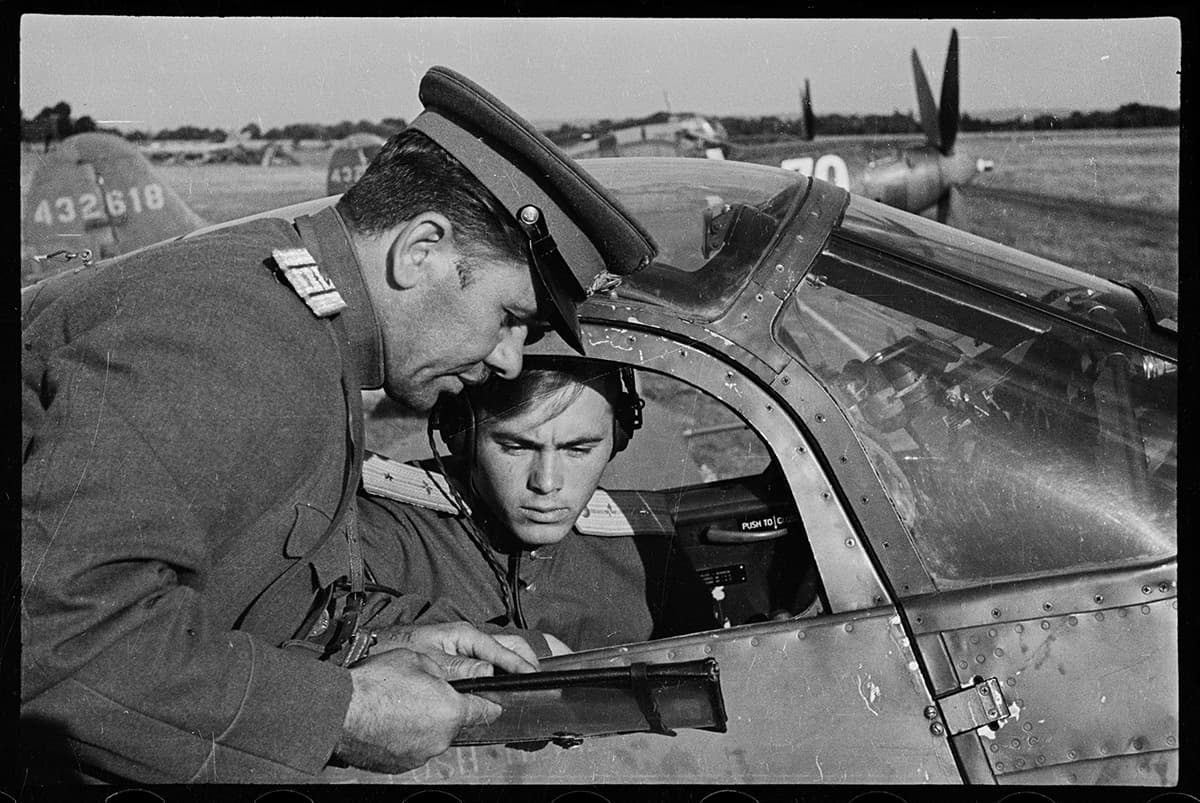
A major conducts pre-flight training for a junior lieutenant in the cockpit of an American Bell P-39 "Aerocobra" aircraft delivered to the USSR under Lend-Lease. 1945
A major conducts pre-flight training for a junior lieutenant in the cockpit of an American Bell P-39 "Aerocobra" aircraft delivered to the USSR under Lend-Lease. 1945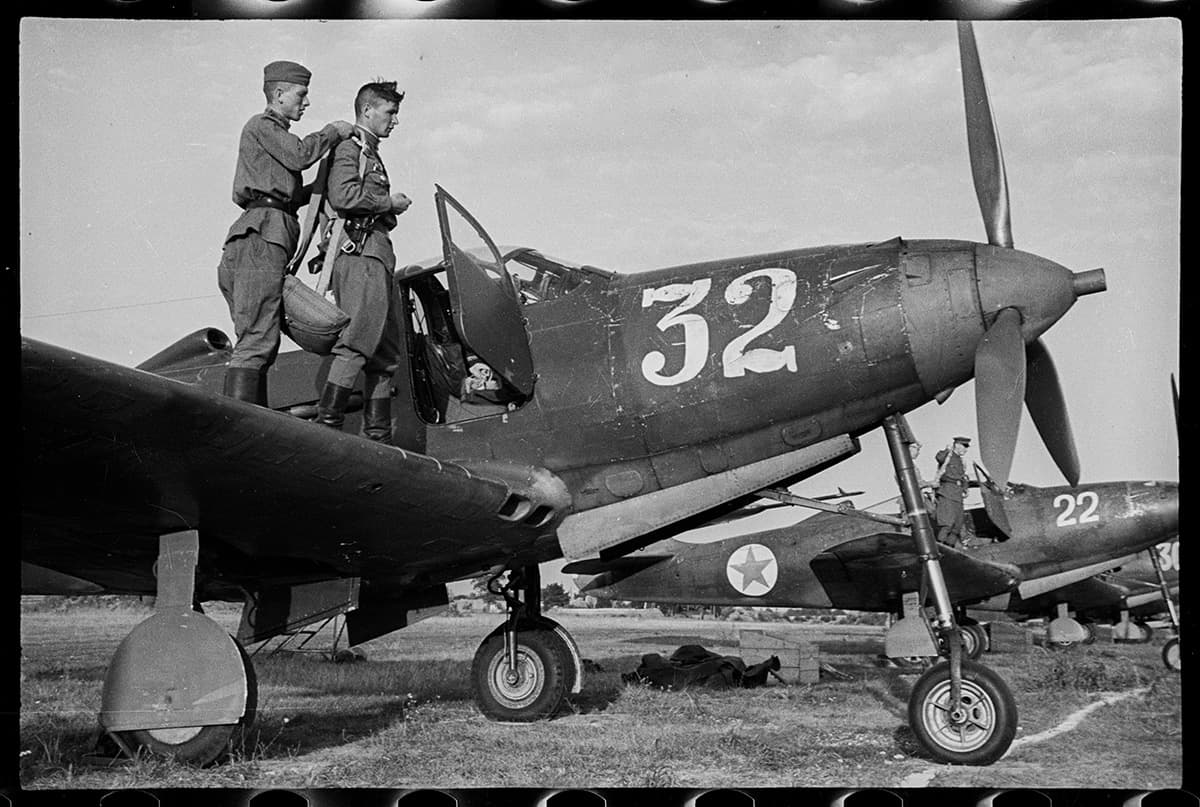
A Soviet pilot, with the rank of lieutenant, puts on a parachute before a flight, standing on the wing of an American Bell P-39 "Aerocobra" aircraft, tail number 32. 1945
A Soviet pilot, with the rank of lieutenant, puts on a parachute before a flight, standing on the wing of an American Bell P-39 "Aerocobra" aircraft, tail number 32. 1945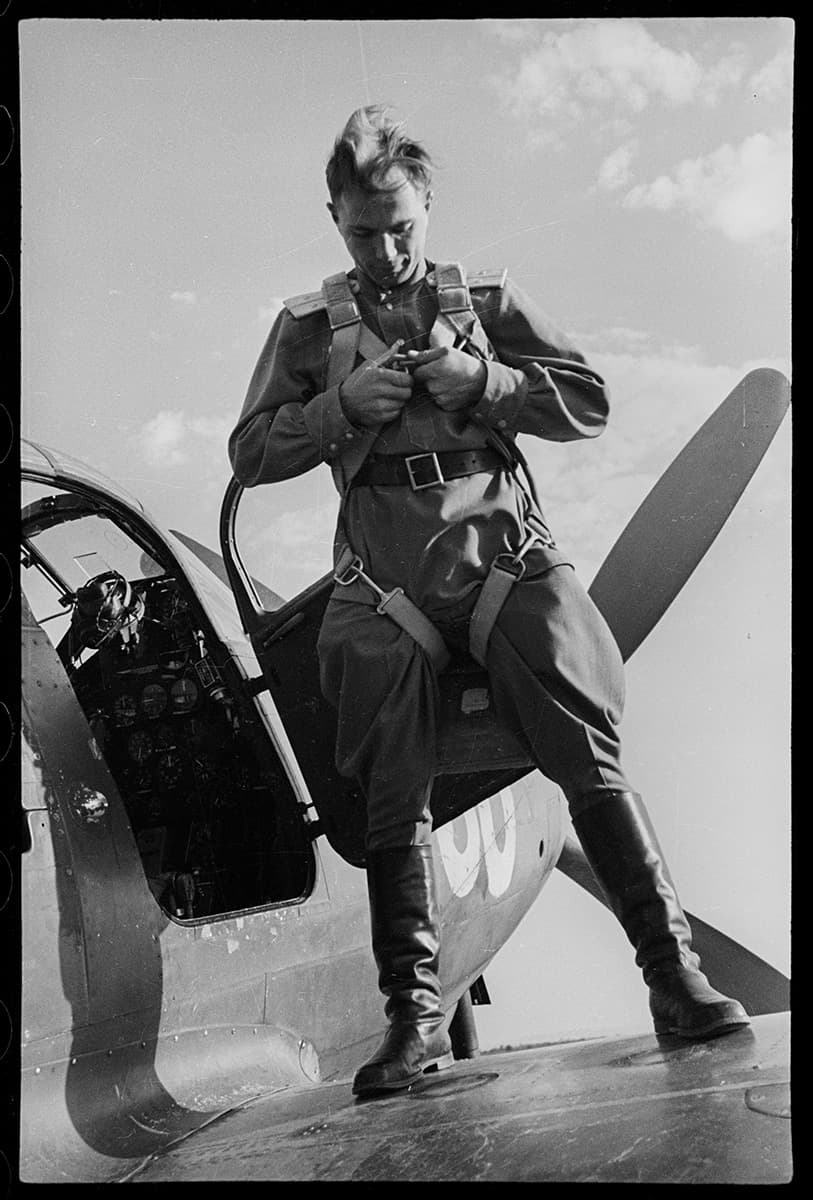
A Soviet pilot, with the rank of lieutenant, puts on a parachute before a flight, standing on the wing of an American Bell P-39 "Aerocobra" aircraft, tail number 32. 1945
A Soviet pilot, with the rank of lieutenant, puts on a parachute before a flight, standing on the wing of an American Bell P-39 "Aerocobra" aircraft, tail number 32. 1945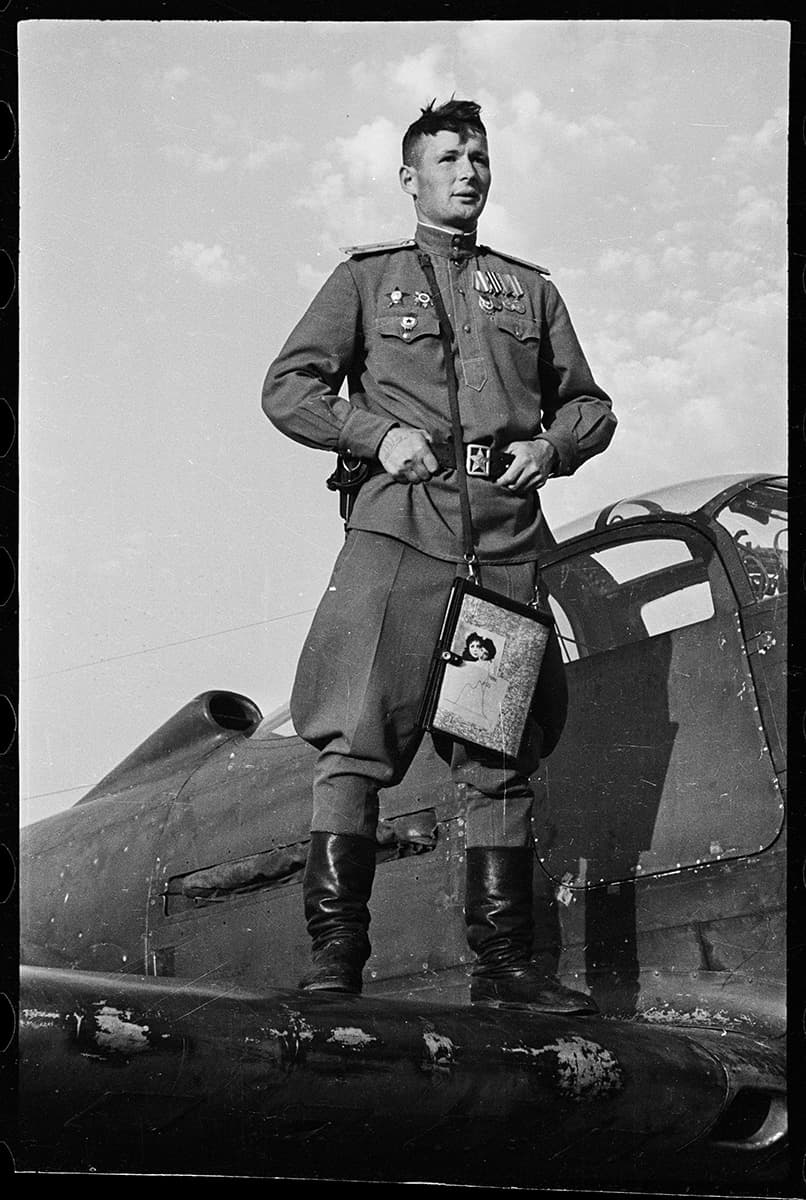
A Soviet pilot, with the rank of lieutenant, puts on a parachute before a flight, standing on the wing of an American Bell P-39 "Aerocobra" aircraft, tail number 32. In flight plan, you can see a map and a family photo. 1945
A Soviet pilot, with the rank of lieutenant, puts on a parachute before a flight, standing on the wing of an American Bell P-39 "Aerocobra" aircraft, tail number 32. In flight plan, you can see a map and a family photo. 1945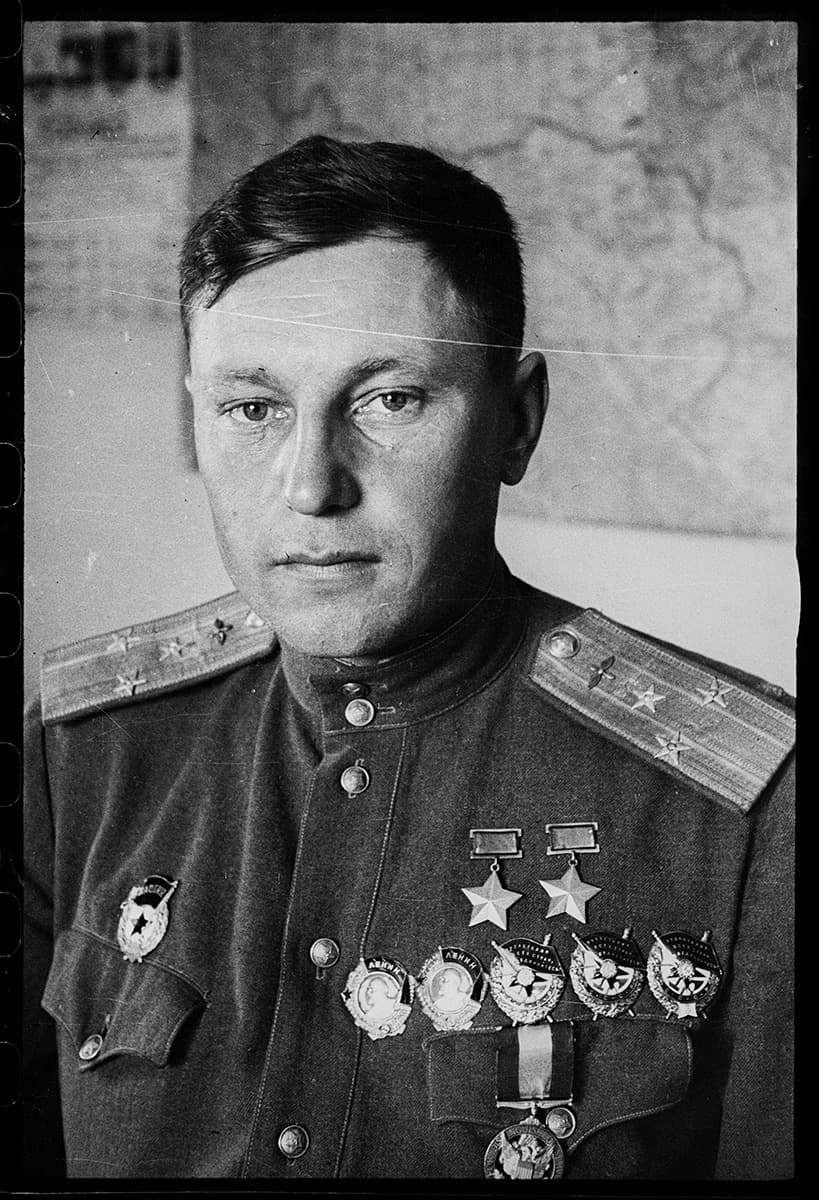
Colonel Alexander Pokryshkin, commander of the 9th Guards Fighter Aviation Division, twice Hero of the Soviet Union. Poland, June - mid-August 1944
Colonel Alexander Pokryshkin, commander of the 9th Guards Fighter Aviation Division, twice Hero of the Soviet Union. Poland, June - mid-August 1944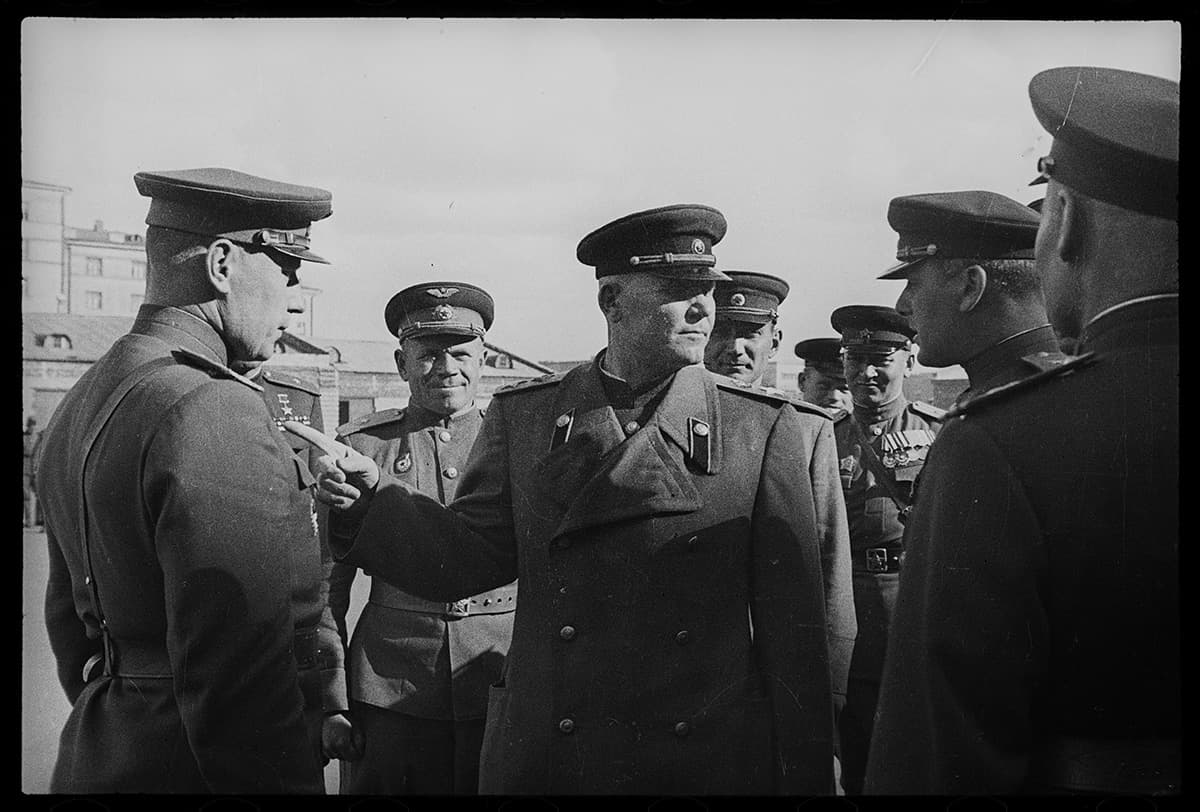
Marshal I. S. Konev in the 1st Guards Air Assault Corps. 1945
Marshal I. S. Konev in the 1st Guards Air Assault Corps. 1945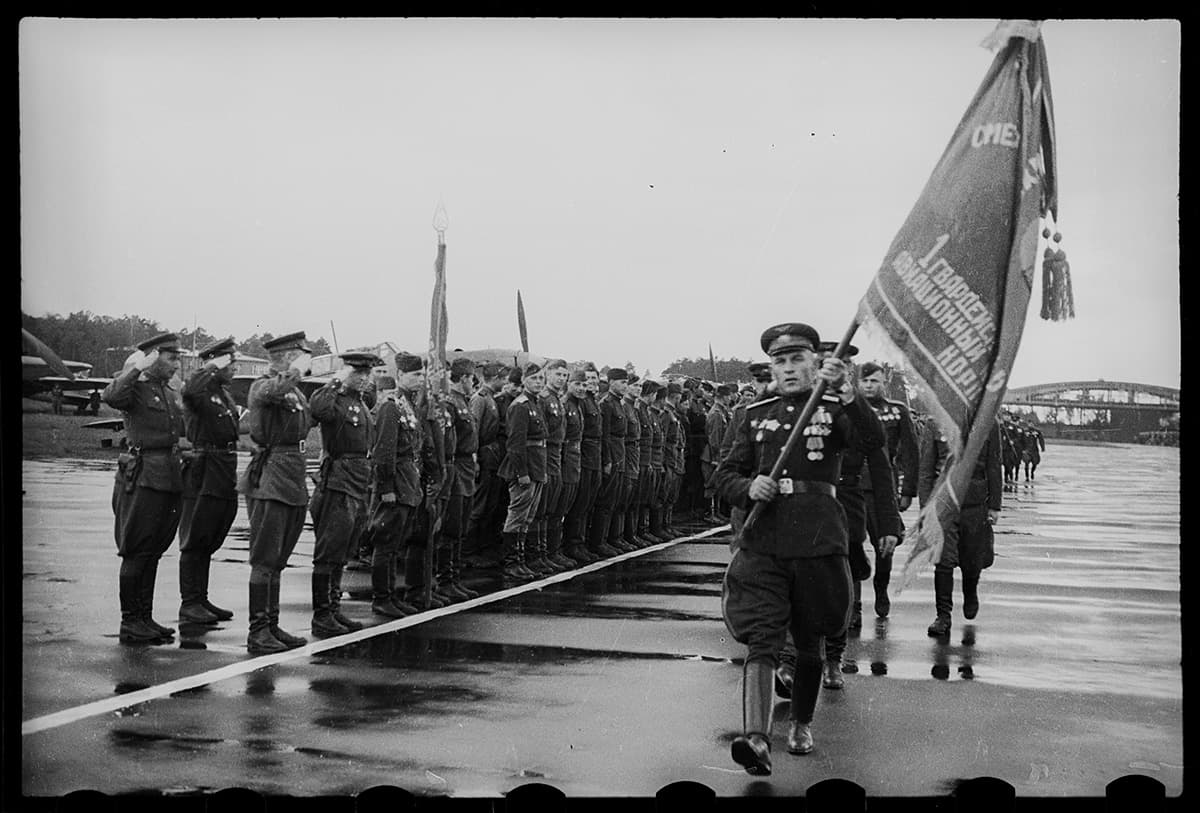
Carrying the banner of the 1st Guards Air Assault Corps. 1945
Carrying the banner of the 1st Guards Air Assault Corps. 1945